Ohio Reptiles and Amphibians, 2013
Here are some reptiles and amphibians that I observed in southeastern Ohio
in 2013, in chronological order. There are a few animals from other
states in the eastern U.S.A., which are also included.
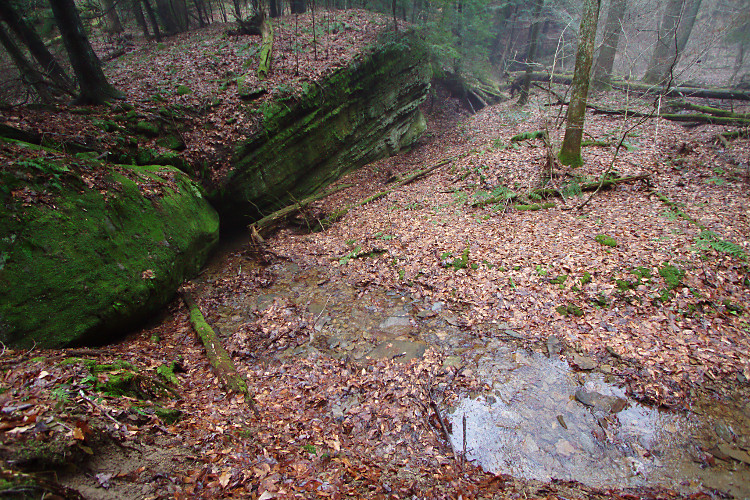
On January 12, we had some unseasonably warm weather. A friend and I took
advantage and went for a hike. With all of the moss, ferns, and
hemlock, you almost didn't notice that it was the middle of winter...
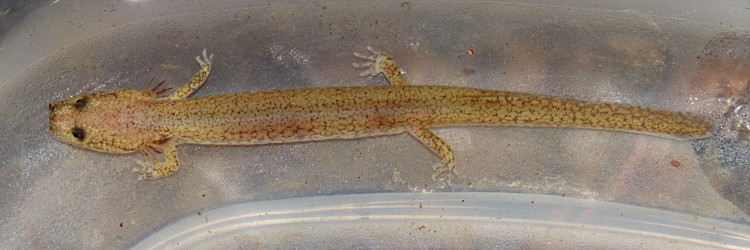
One of two Northern Spring Salamander
(Gyrinophilus porphyriticus porphyriticus) larvae seen on the hike.
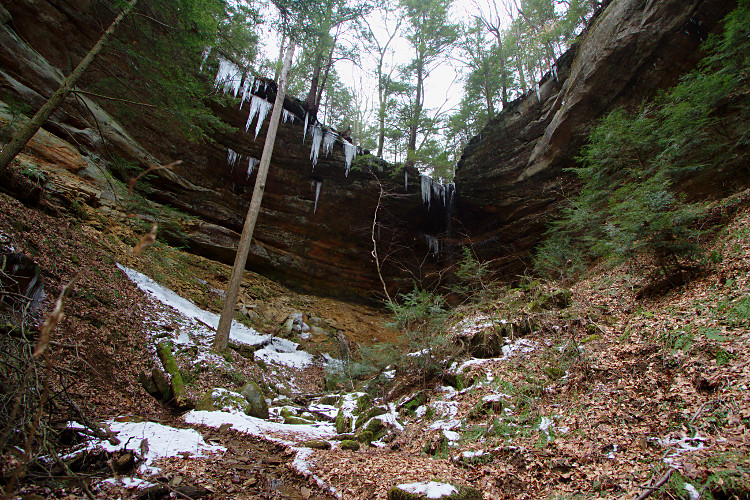
The head of a ravine on February 10.
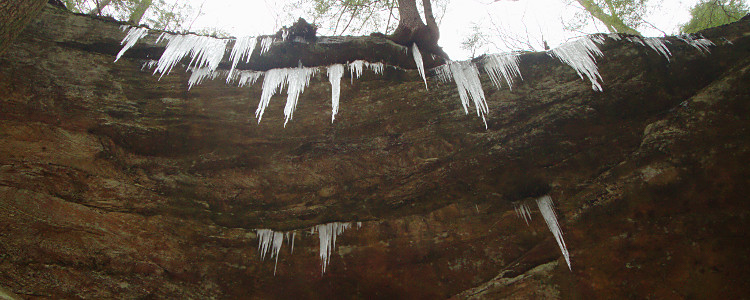
It was relatively warm out and the giant icicles were randomly falling off.
Needless to say, I didn't go directly under them...
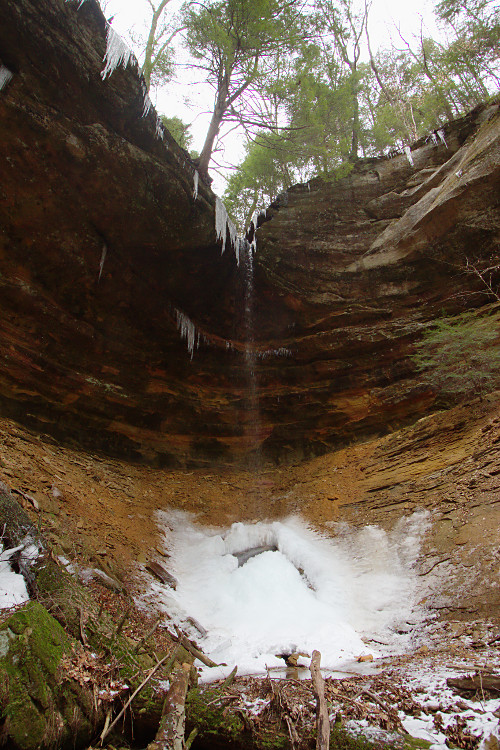
More ice.
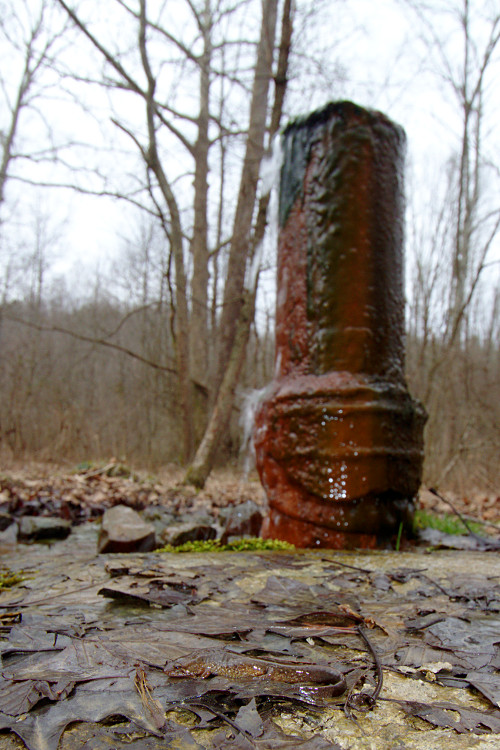
This fountain is tapped into a natural spring and spews water year around.
It seems that Northern Dusky Salamanders (Desmognathus fuscus) can
always be found here, regardless of the time of year. I hadn't been here in
around 8 years, but it is nice to see they are still here.
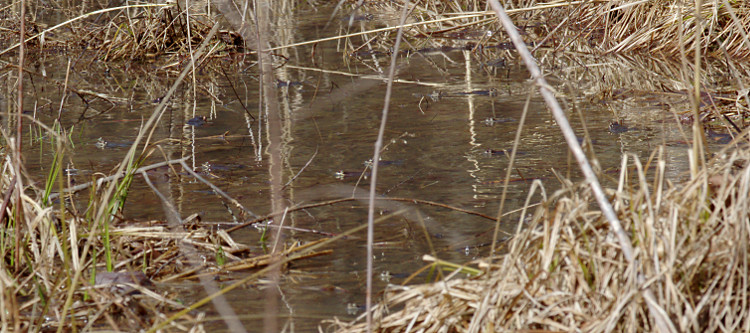
The Wood Frogs (Rana sylvatica) were out in force on March 9.
Looking at the full-resolution version of this photo, I was able to
count 16 of them.
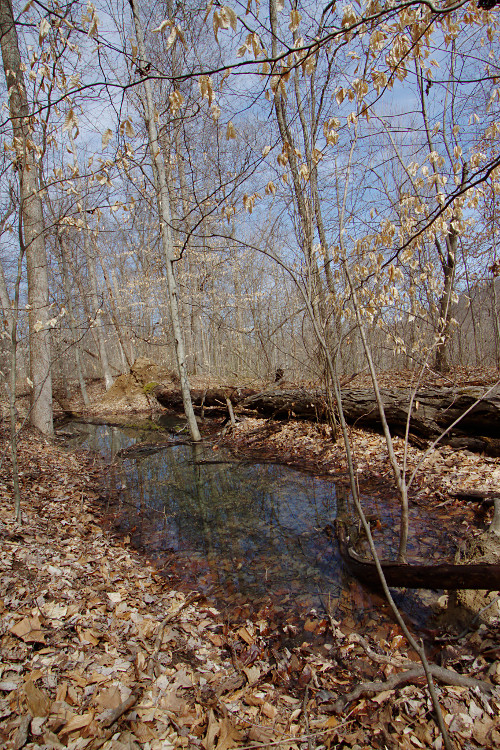
This pool is perched on a rather steep hillside. It had a number of calling
Wood Frogs in it, which is how I found it. In addition, I found a
Marbled Salamander (Ambystoma opacum) larva here.
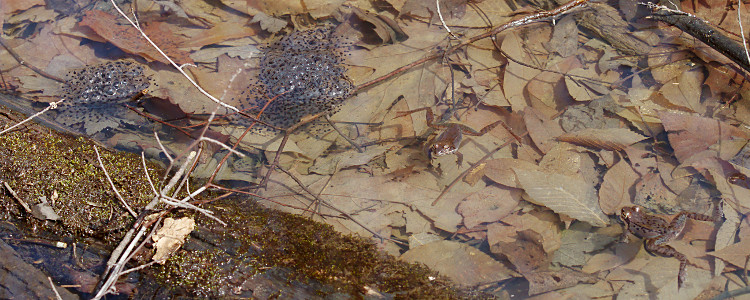
Two of the Wood Frogs and some of their egg masses.
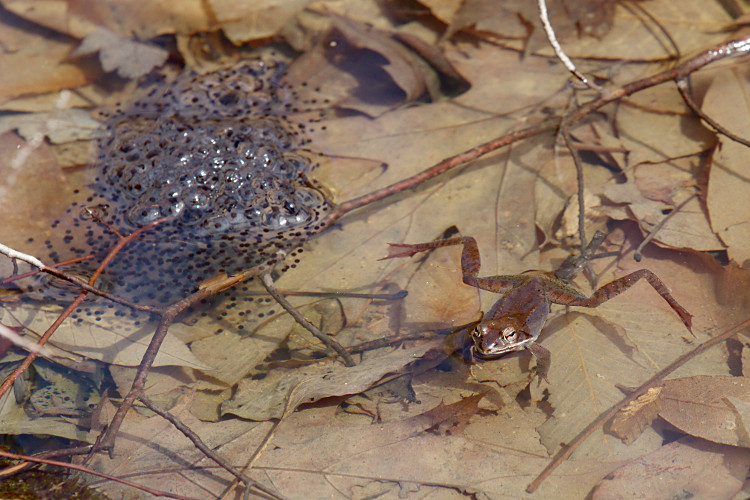
A closer look. Proud papa?
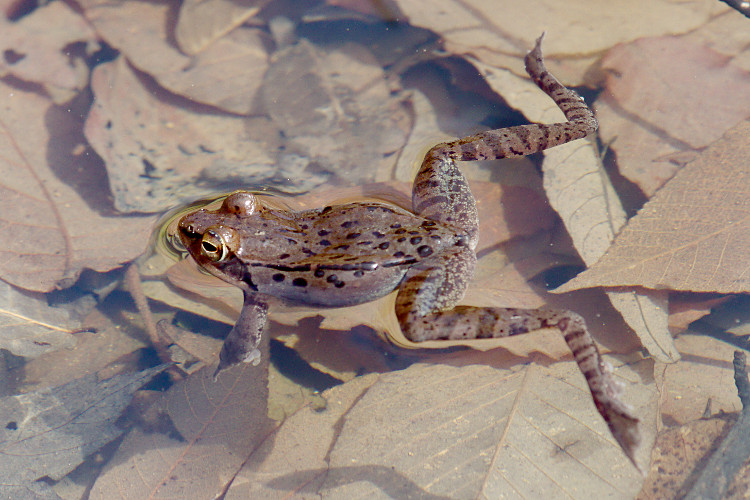
The other one had an interesting spotted pattern.
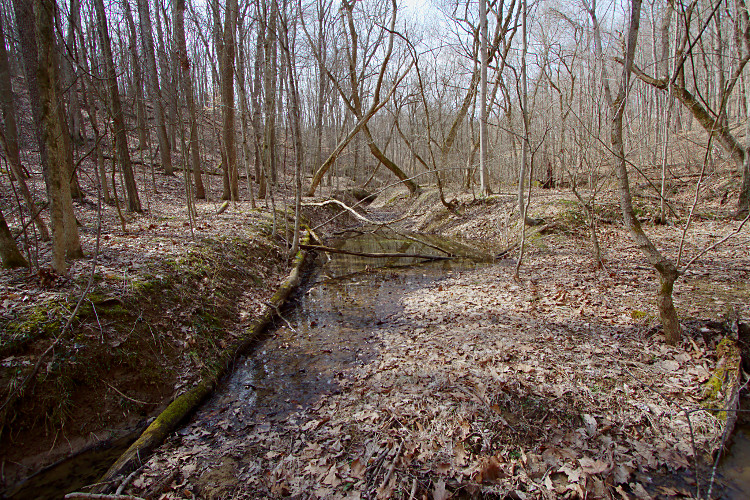
A floodplain pool with calling Wood Frogs on March 10.
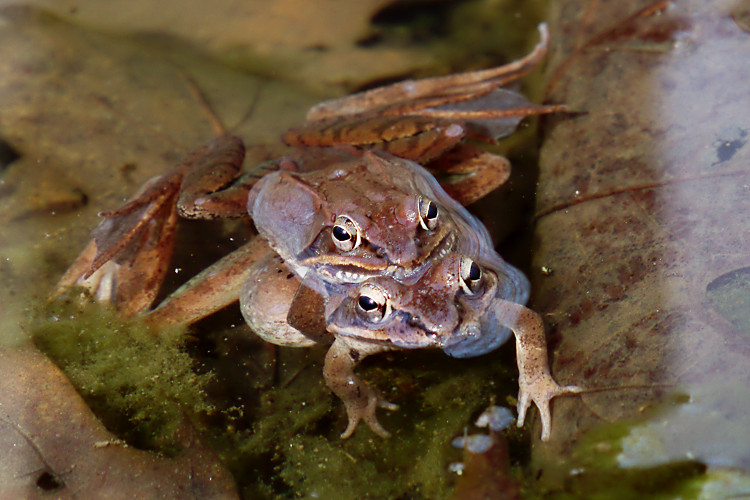
A pair of them.
On March 11, we had some warm rains that got the amphibians moving.
All of these photos are in situ.
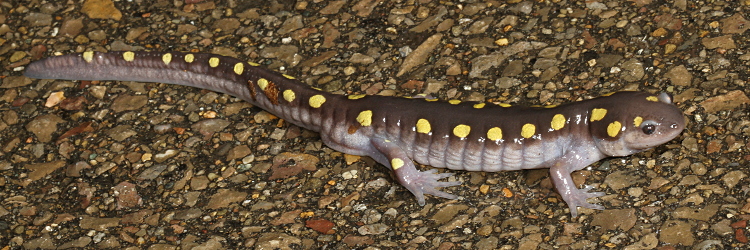
Spotted Salamander (Ambystoma maculatum).
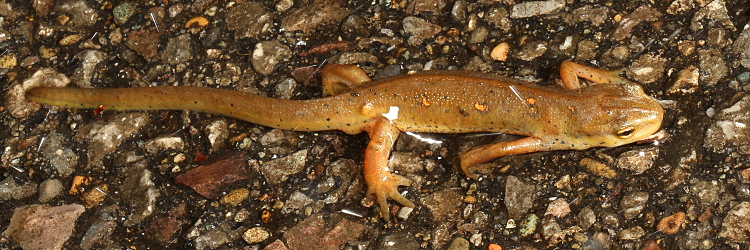
Eastern Newt (Notophthalmus viridescens).
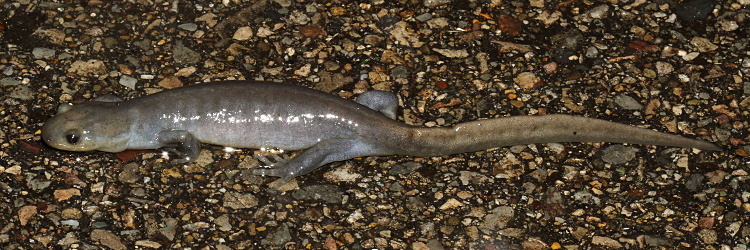
Jefferson Salamander (Ambystoma jeffersonianum).
Northern Leopard Frogs (Rana pipiens) are not common in southeast
Ohio, but the place where I was happens to have a healthy population of them.
I photographed several of them, as they have several color variations.
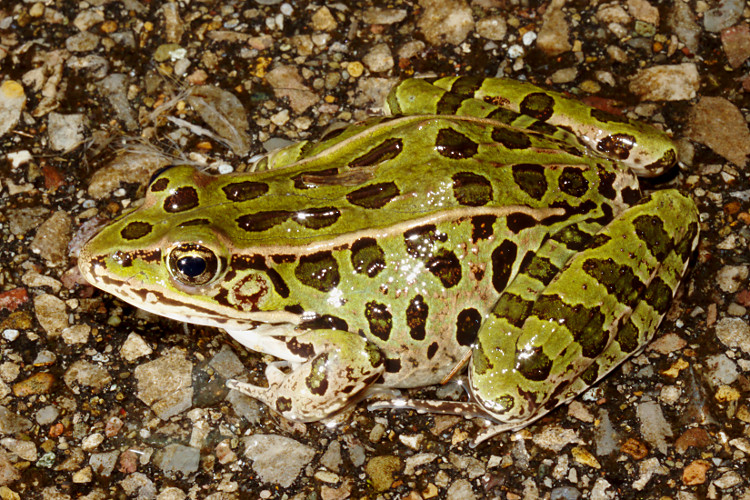
Northern Leopard Frog.
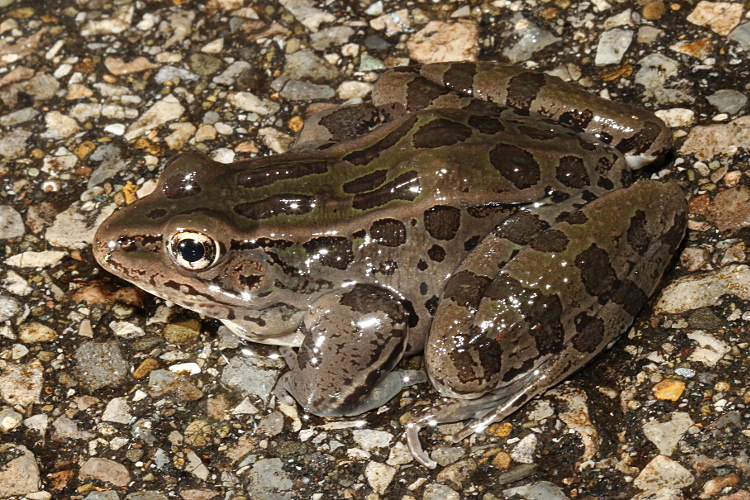
Northern Leopard Frog.
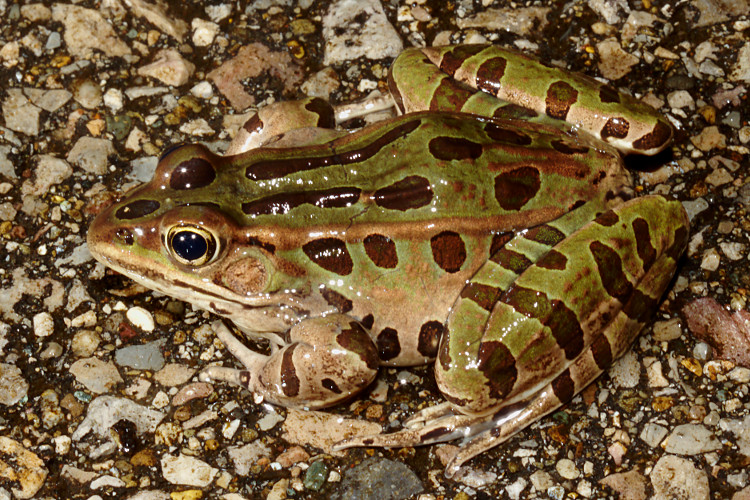
Northern Leopard Frog.
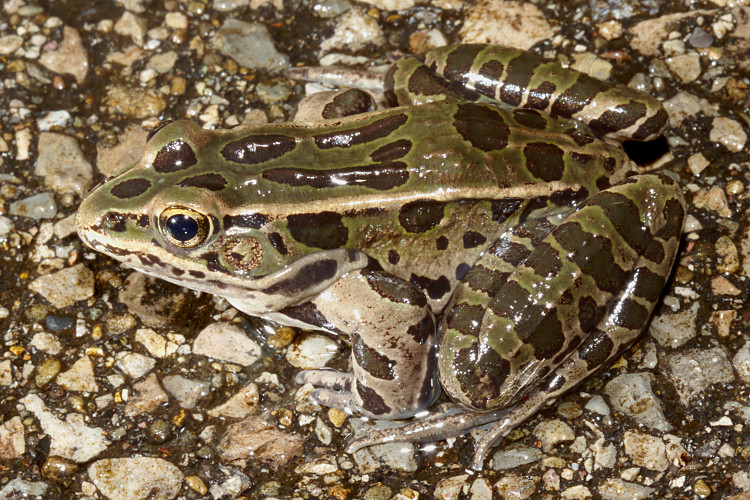
Northern Leopard Frog.
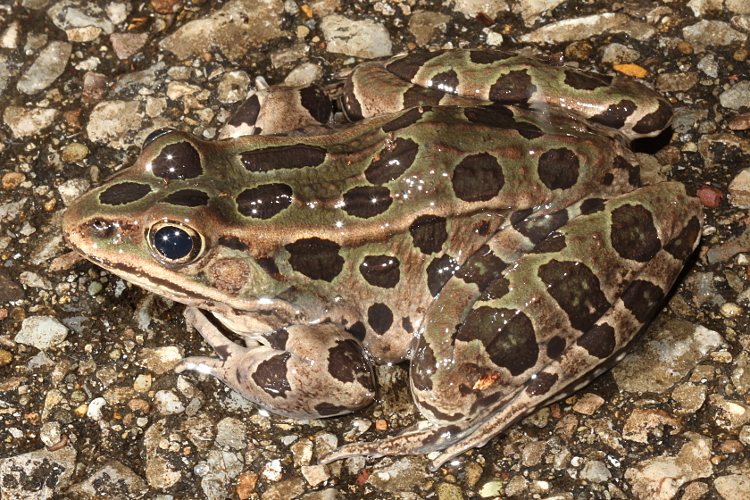
Northern Leopard Frog.
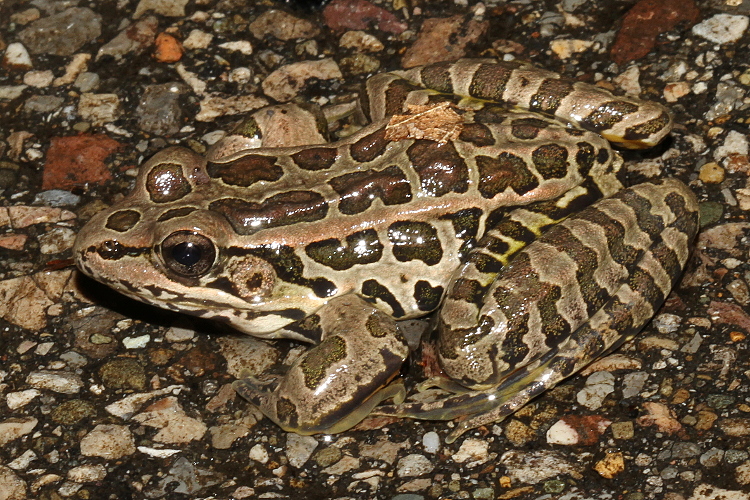
Pickerel Frog (Rana palustris).
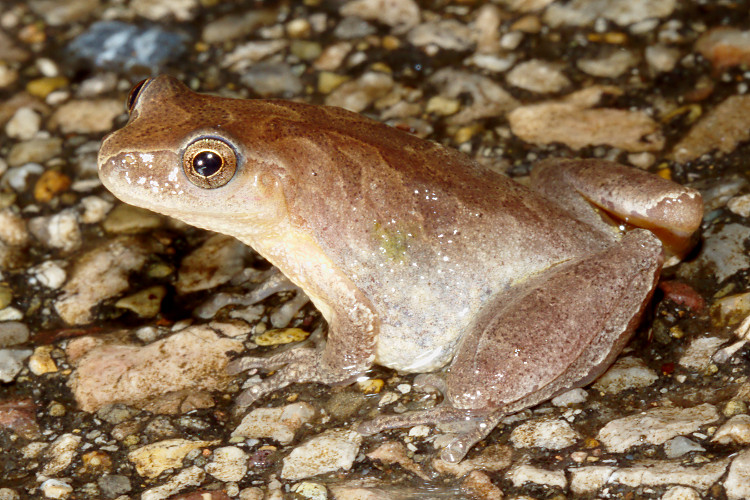
Spring Peeper (Pseudacris crucifer).
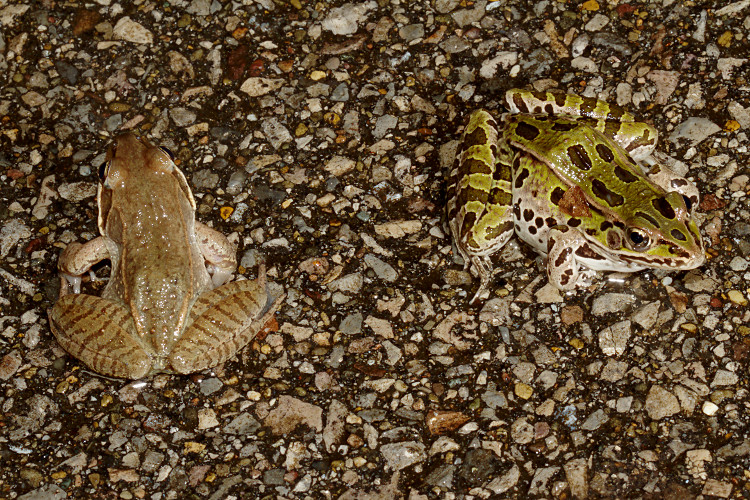
A Wood Frog (Rana sylvatica) and a Northern Leopard Frog
(Rana pipiens) that happened to be found together.
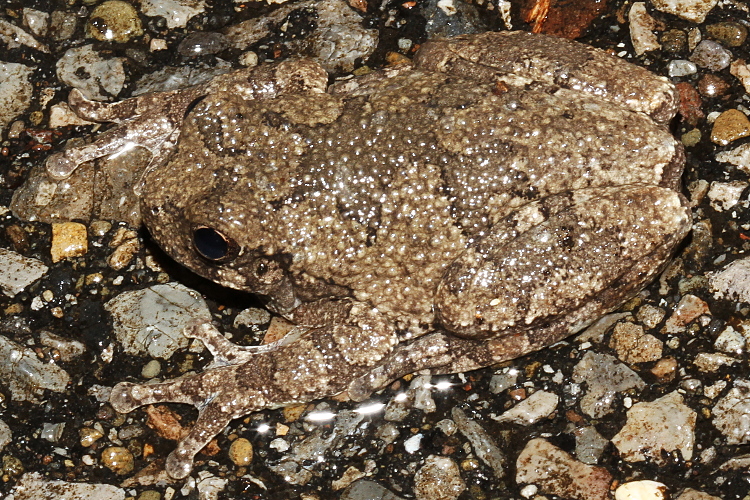
Gray Treefrog.
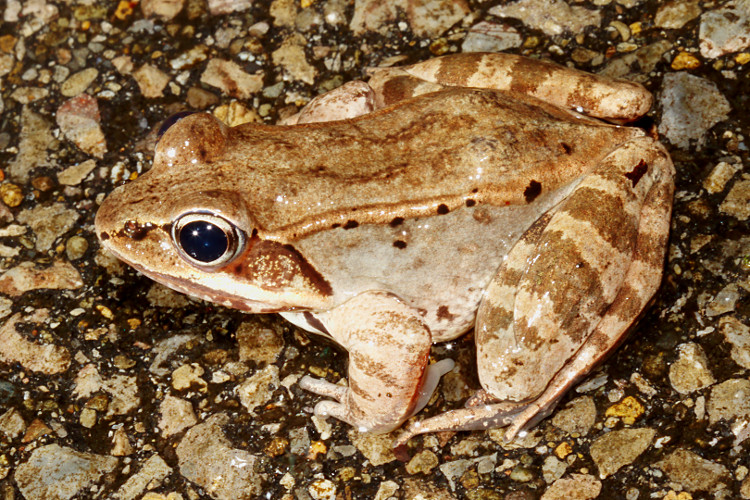
Wood Frog (Rana sylvatica).
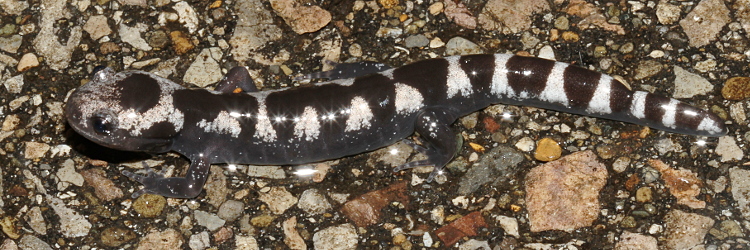
Marbled Salamander (Ambystoma opacum). That was it for the night.
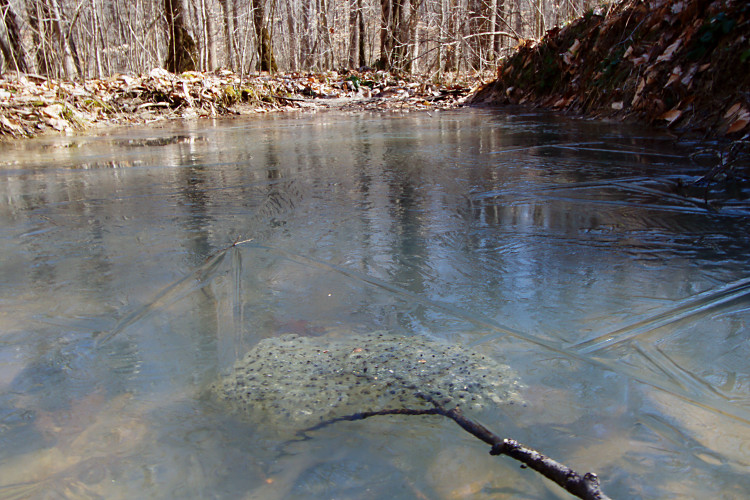
One day in mid March, I met my friend Brian down in Kentucky.
The weather had turned a little colder. This pool of water was created
when a tree fell over and the roots pulled up out of the ground.
As you can see, there is a thin sheet of ice. Wood Frog eggs had been
deposited a few days earlier, when the weather was warmer.
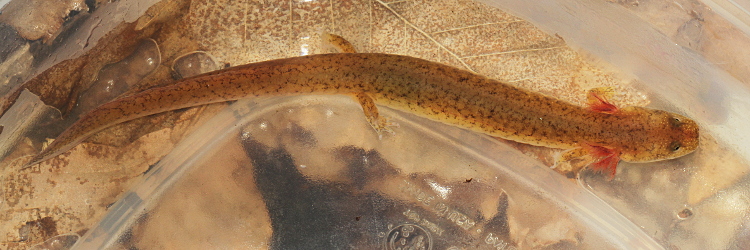
One of two Kentucky Spring Salamander (Gyrinophilus porphyriticus duryi)
larvae we found.
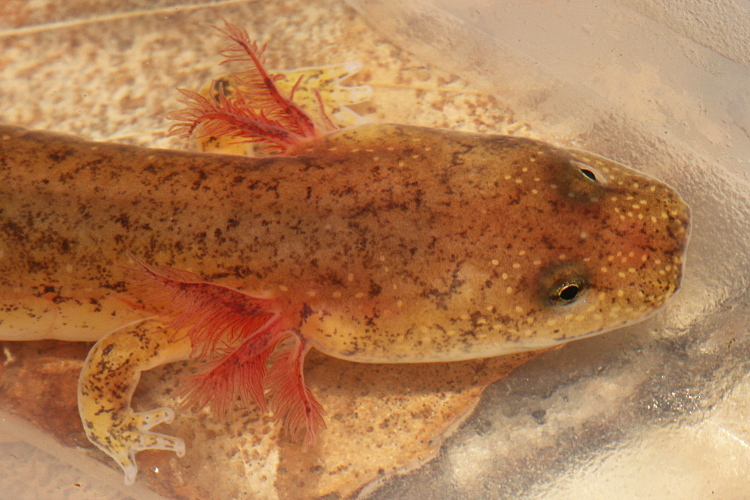
A closer look.
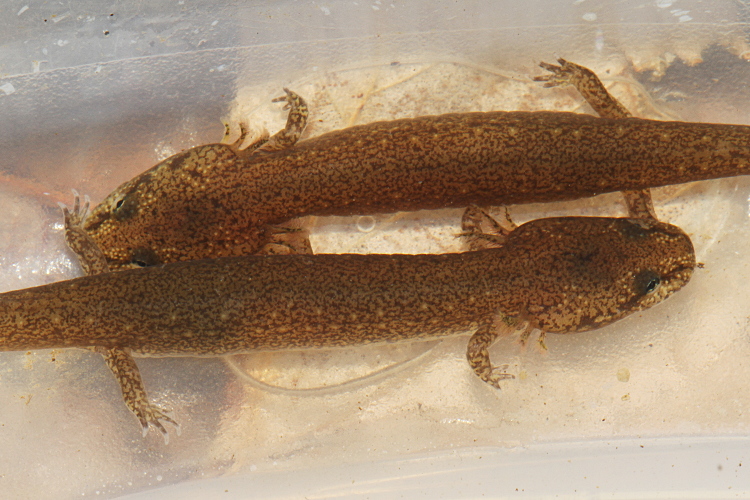
A couple of Red Salamander (Pseudotriton ruber) larvae.
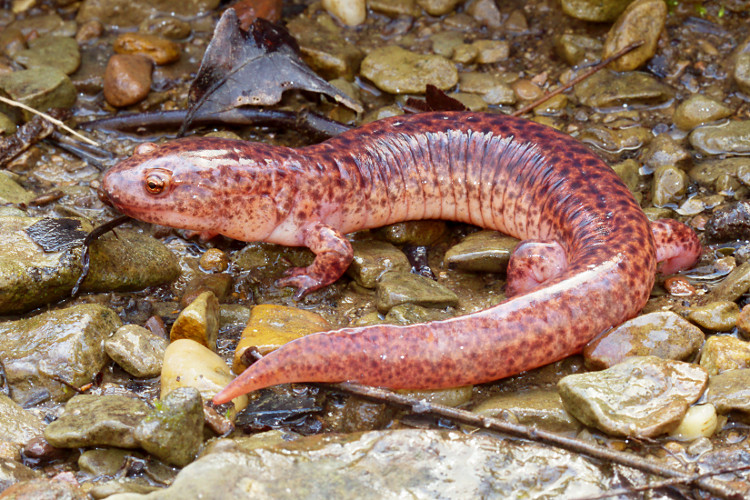
An adult Red Salamander (Pseudotriton ruber).
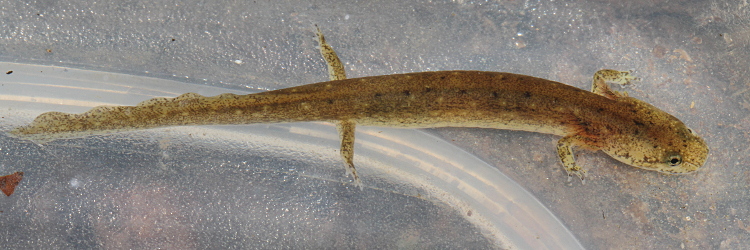
Mud Salamander (Pseudotriton montanus) larva.
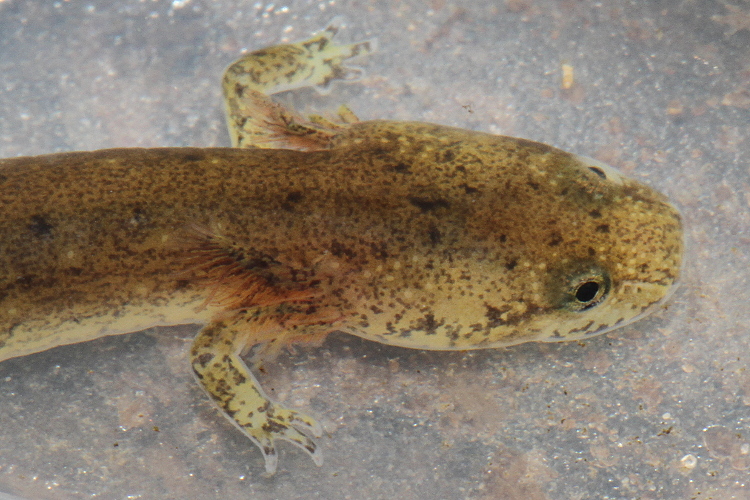
A closer look.
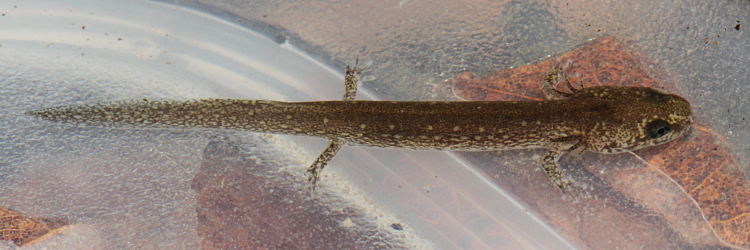
A hatchling Mud Salamander (Pseudotriton montanus) larva.
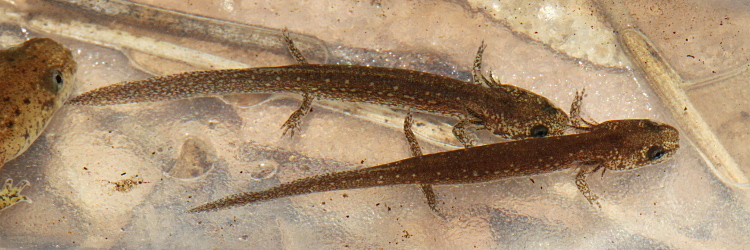
Two hatchling Mud Salamander (Pseudotriton montanus) larvae.
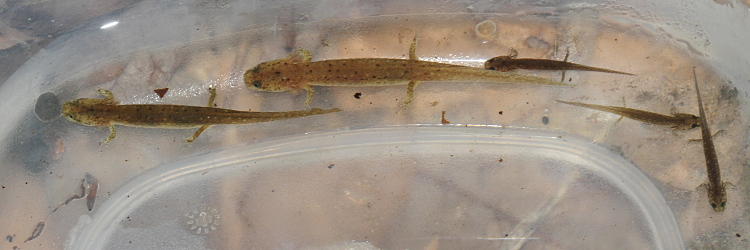
Mud Salamander (Pseudotriton montanus) larvae.
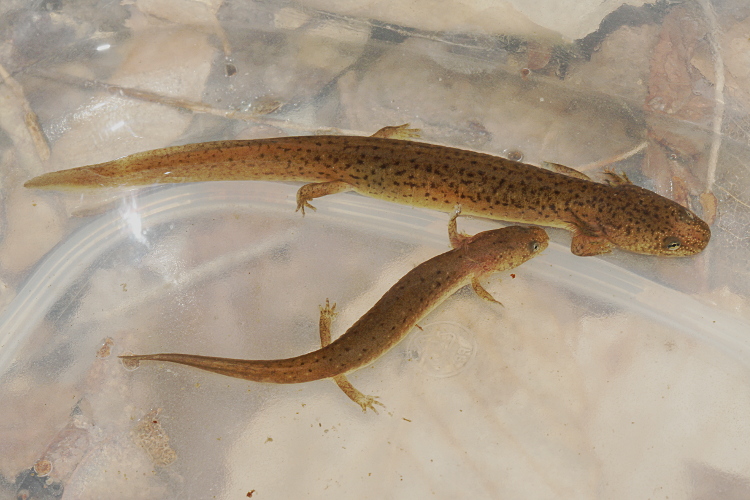
A Red Salamander (Pseudotriton ruber) larva (top) and a
Mud Salamander (Pseudotriton montanus) larva (bottom).
I found both species in one scoop with the dipnet at one spot, the first
time I have ever done that. It was great catching up with Brian.
Back in Ohio.

A Green Salamander (Aneides aeneus), as spotted in a crack in a rock
on March 23.
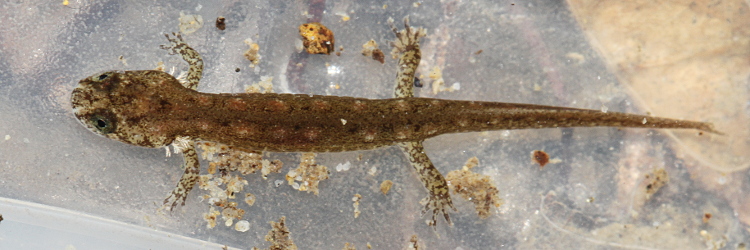
A Northern Dusky Salamander (Desmognathus fuscus) larva.
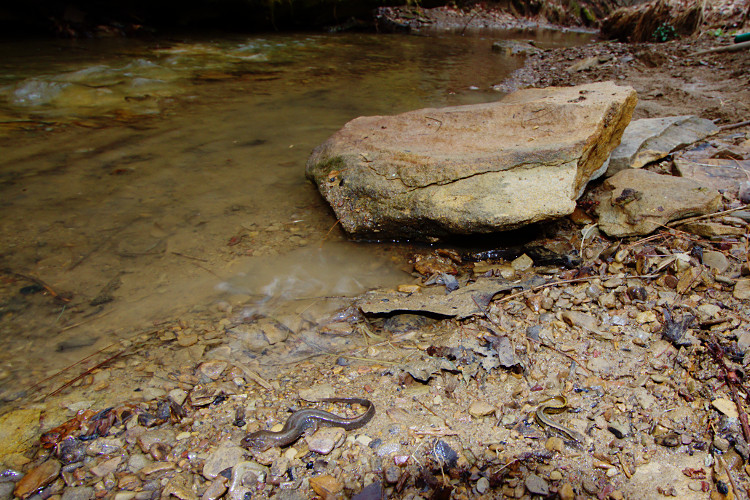
A Northern Dusky Salamander (Desmognathus fuscus, on left)
and a Southern Two-lined (Eurycea cirrigera, on right) as revealed
when the rock in the background was flipped over.
Observed on Easter Sunday, March 31. This activity kind of reminds
me of hunting for Easter eggs.
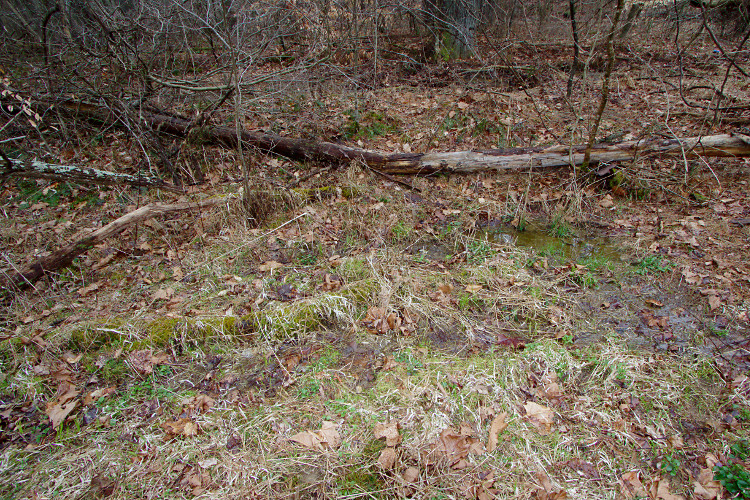
A mossy seepage-fed area near where the above photo was taken.
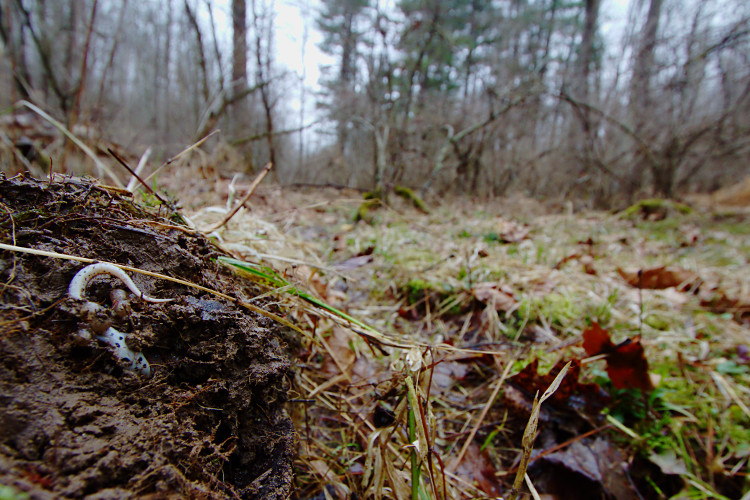
A Four-toed Salamander (Hemidactylium scutatum) found with
eggs in the moss shown in the previous photo.
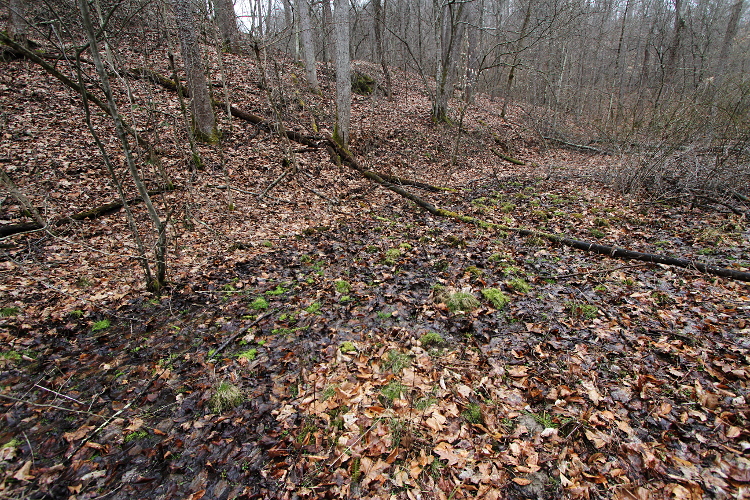
A spring-fed marsh that is separated from the creek in a nearby
drainage. Another Four-toed Salamander sitting on eggs was found here.
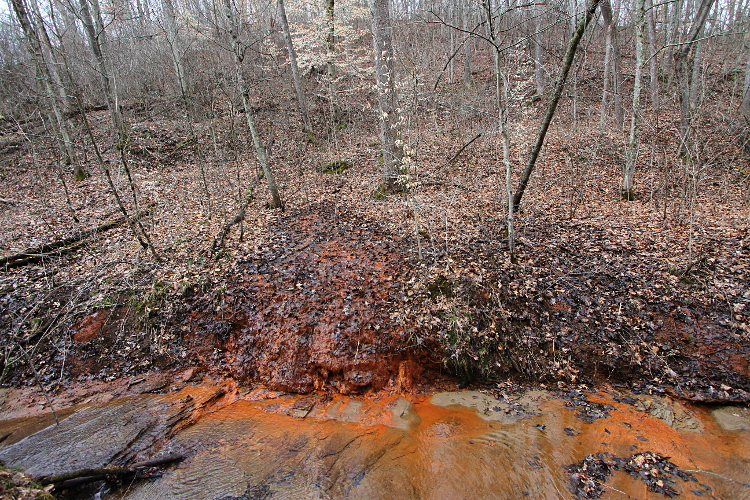
Some mine drainage oozing into the creek. Kind of pretty, but it's not
supposed to be that way. There was little life in the creek downstream from
here. However, the spring-fed marsh in the previous photo is located about
20 yards downstream from here -- I think the important point is that the
marsh receives it water from a separate (clean) spring.
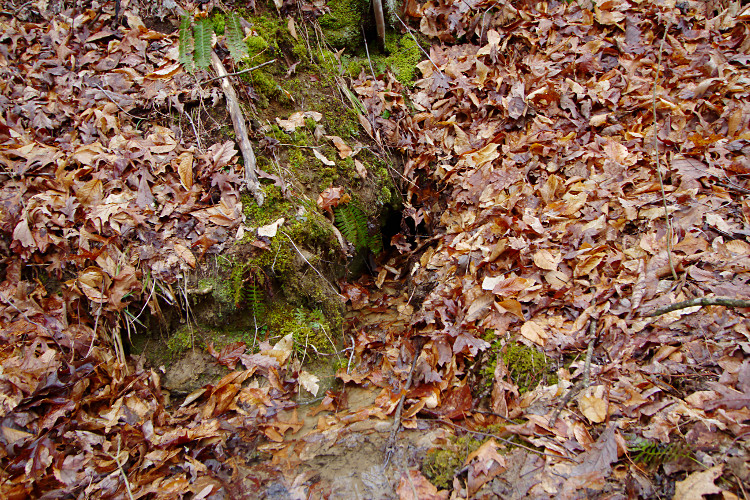
A little spring a few hundred yards upstream from the previous photo.
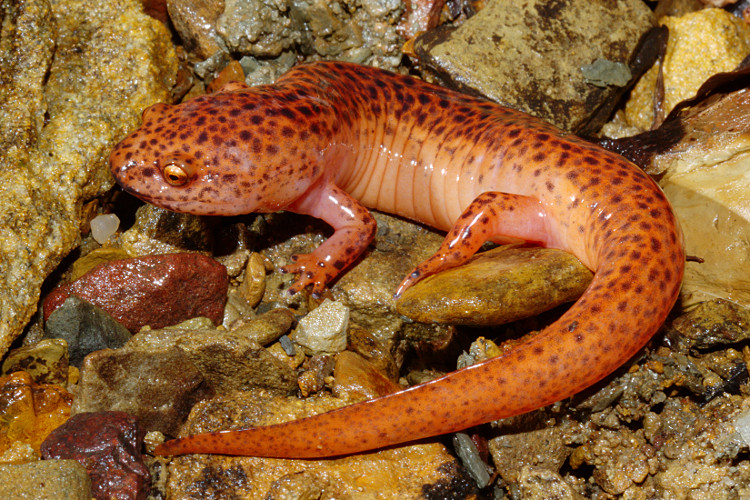
This Red Salamander (Pseudotriton ruber) was found in the leaf
litter by the spring.
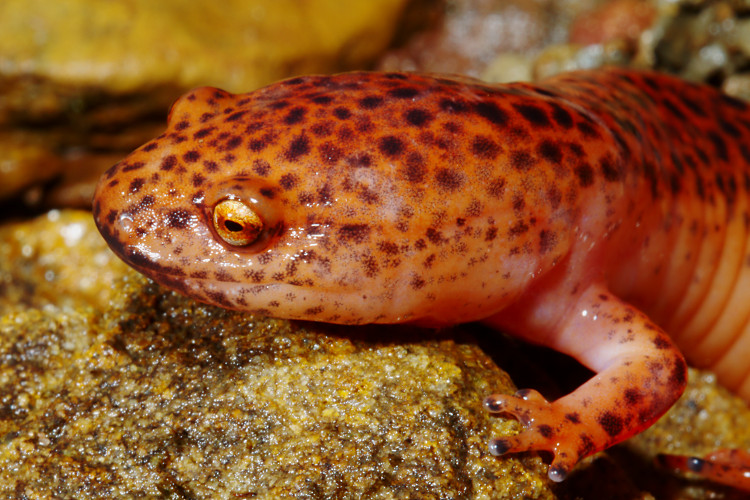
A closer look.
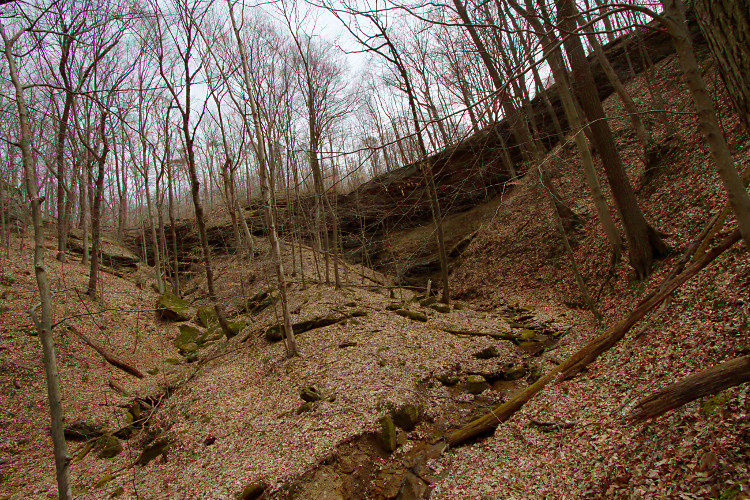
The head of a ravine in early April.
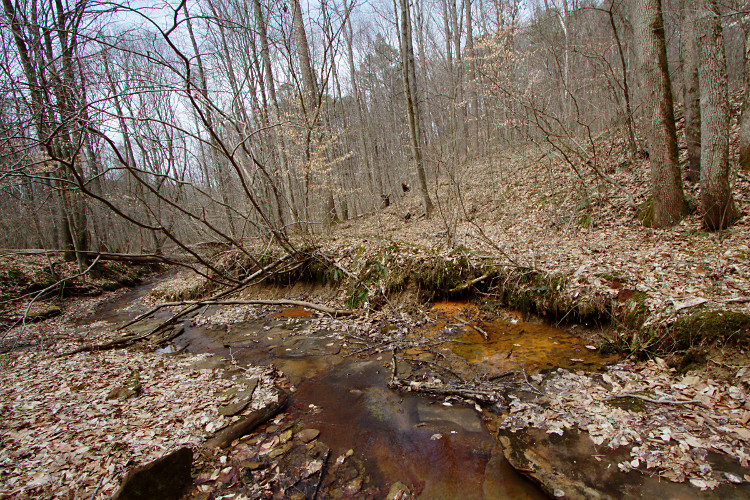
I came across a pool of orange goo while hiking (opposite side of
creek, right of center). This is in the Hocking Hills, a region that has
experienced little (if any) coal mining.
My friend Jim Grow explained to me once that "orange goo" can result from
natural seepages due to the presence of iron. He went on to say that such
places are often good places to check for salamanders, because some species
lay their eggs in seepages (Pseudotriton and Longtailed) and several
others probably appreciate the regulated water temperature. Then, right on
cue, we came across an orange spot and Jim dipnetted a Red Salamander
(Pseudotriton ruber) larva out of it.
Just for the record, I found three Red Salamander larvae in the "orange goo"
spot shown above. The moral of the story is that orange discharge is not
always a symptom of evil mine drainage.
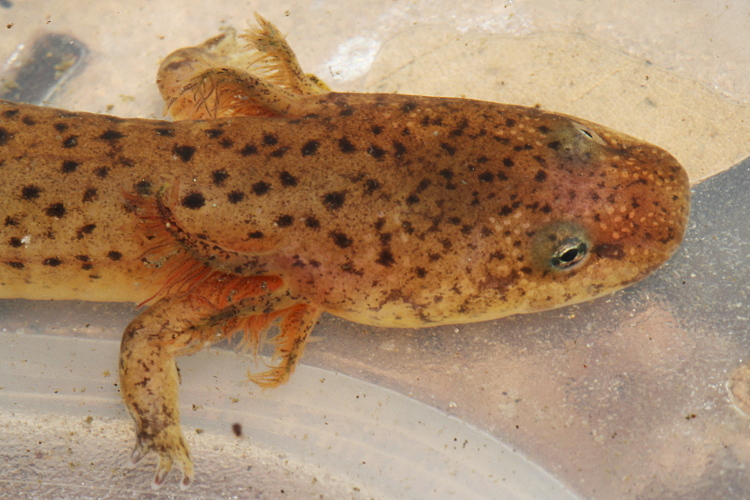
One of the Red Salamander larvae from the pool shown in the previous photo.
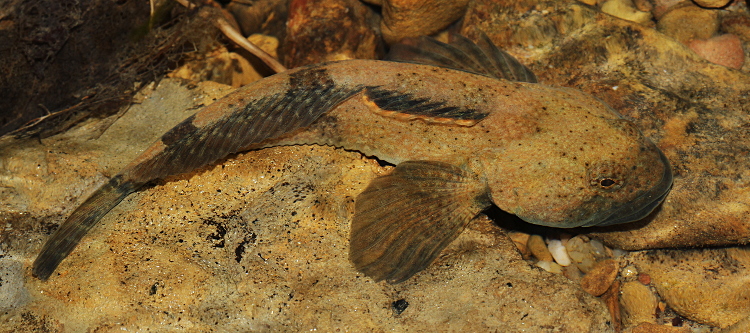
A large Mottled Sculpin (Cottus bairdi), about 4.5" TL.
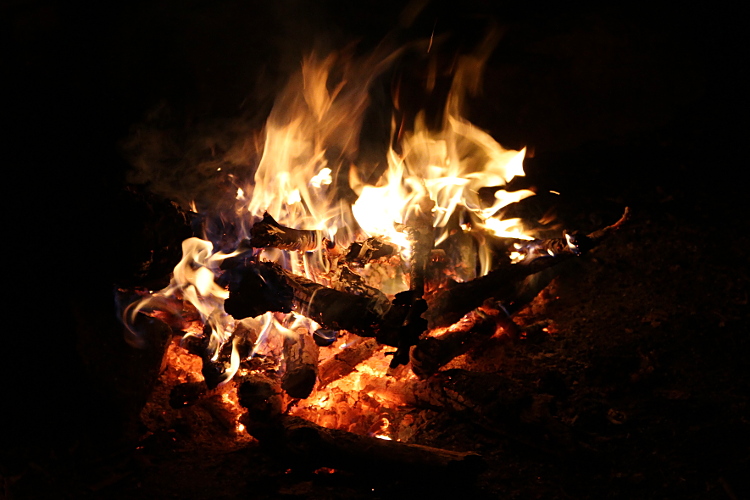
Campfires are mesmerizing. Just a random photo from a Boy Scout campout.
I did some roadcruising in the rain on the night of April 16:
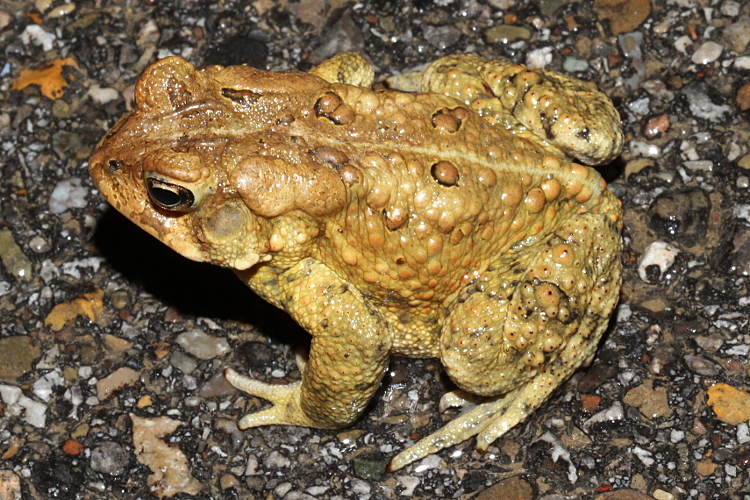
American Toad (Bufo americanus).
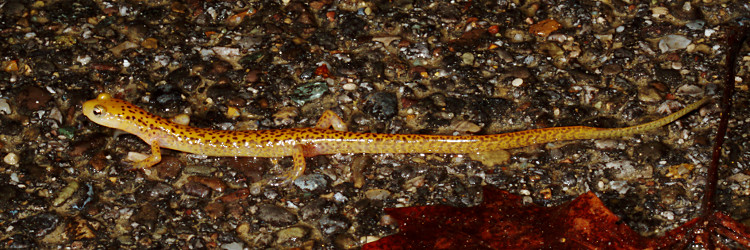
Long-tailed Salamander (Eurycea longicauda).
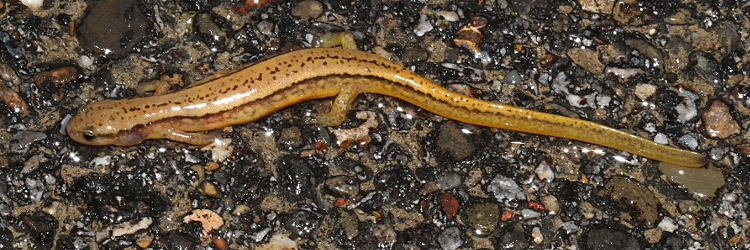
Southern Two-lined Salamander (Eurycea cirrigera).
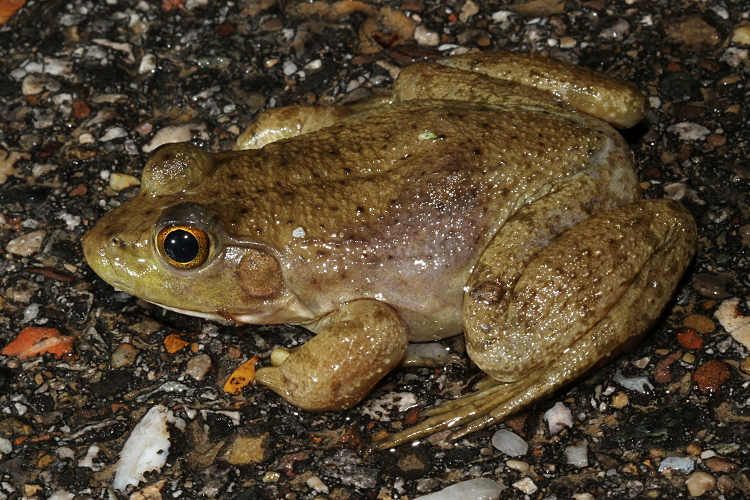
Bullfrog (Rana catesbeiana).
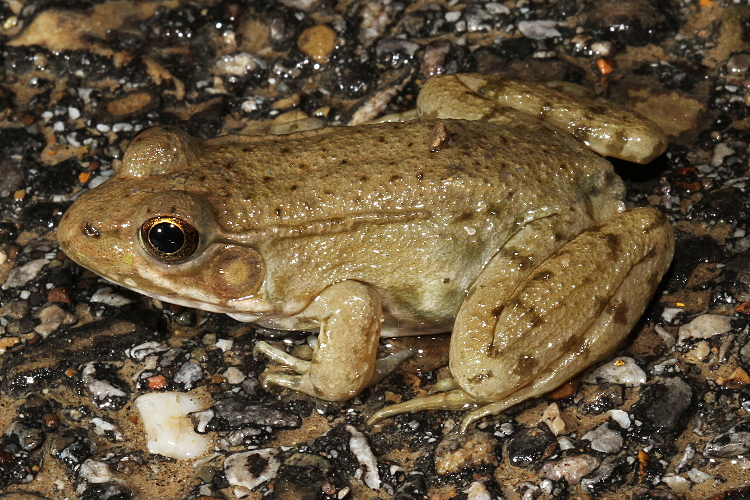
Green Frog (Rana clamitans).
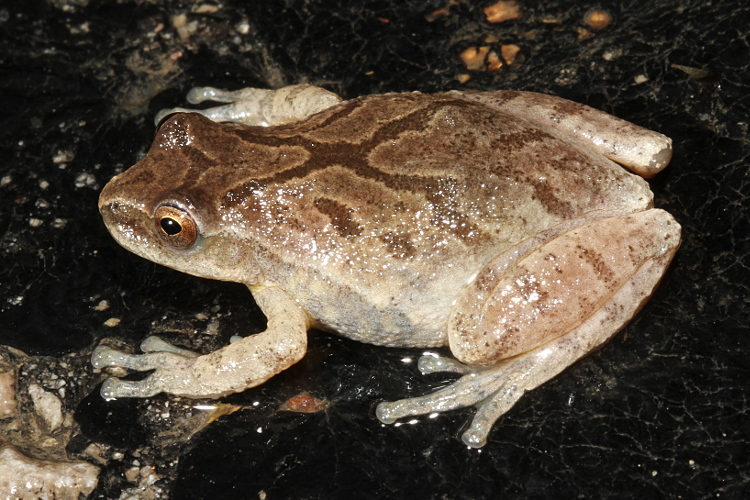
Spring Peeper (Pseudacris crucifer).
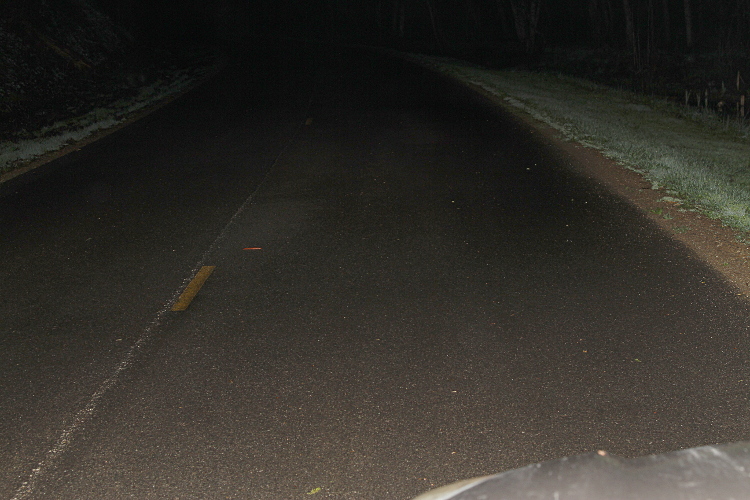
At one point I saw what looked like a red hotdog in the road...
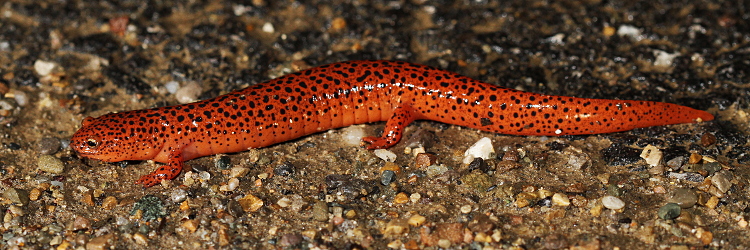
It turned out to be a Red Salamander (Pseudotriton ruber).
A good way to end a night of road cruising.
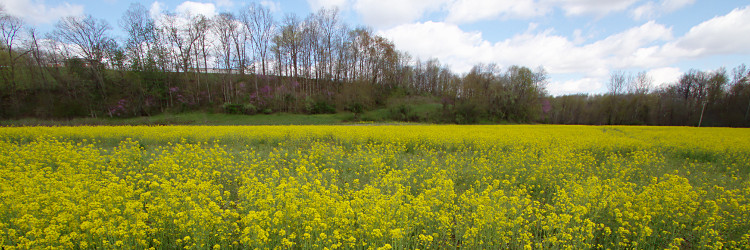
A large field of wildflowers that I saw in mid April. Wintercress, I believe.
Some Redbuds in the background. Welcome signs of spring.
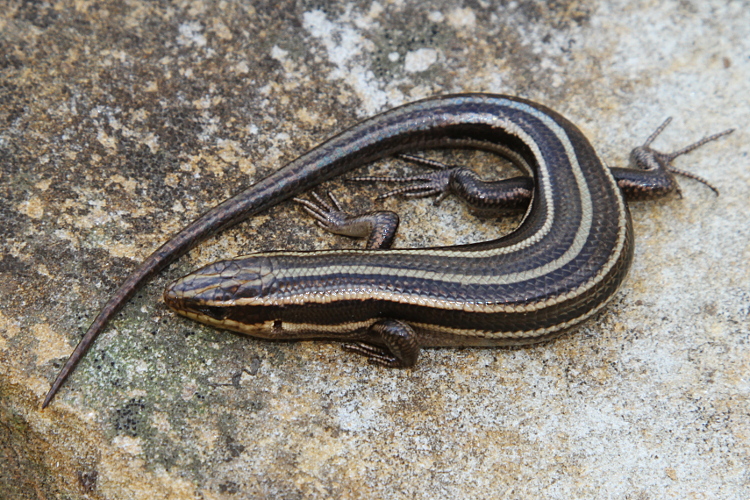
A Five-lined Skink (Eumeces fasciatus) that I found under a rock.
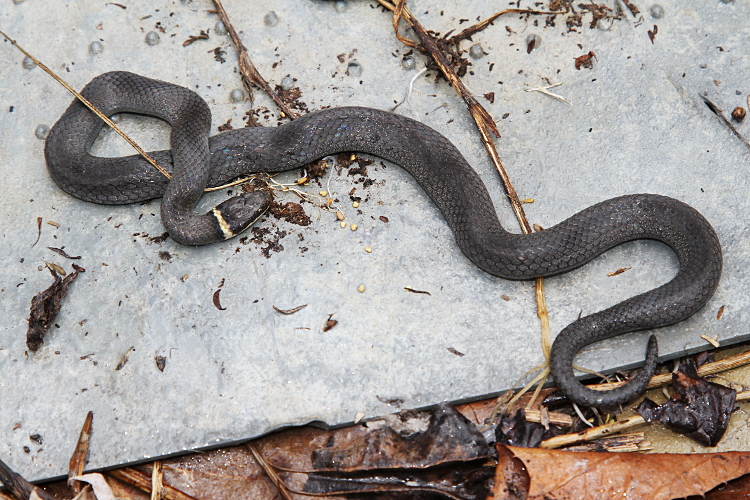
A Ring-necked Snake (Diadophis punctatus), as found under cover.
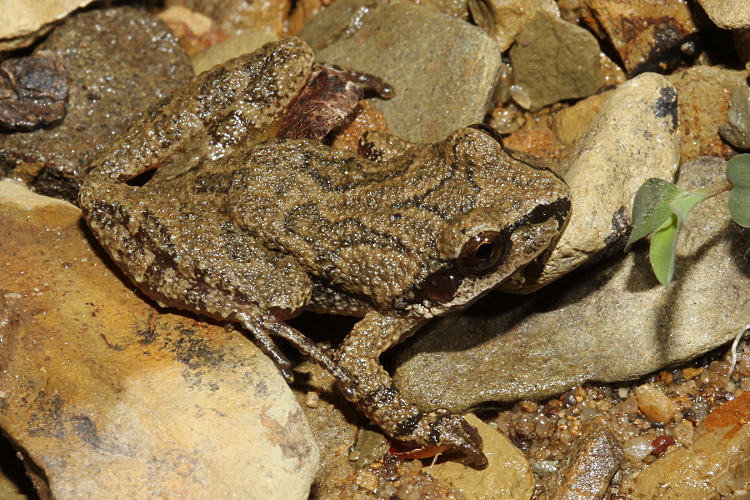
A Mountain Chorus Frog (Pseudacris brachyphona).
Although I often hear these in the spring, tracking them down for
photos is often difficult.
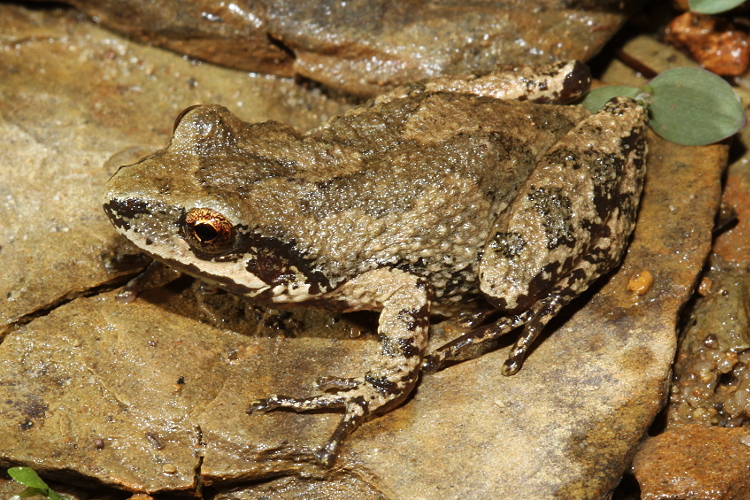
Another Mountain Chorus Frog.
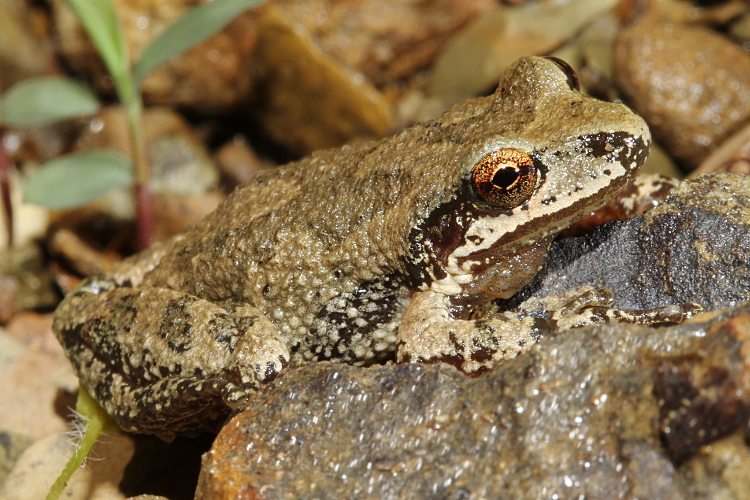
Another pose.
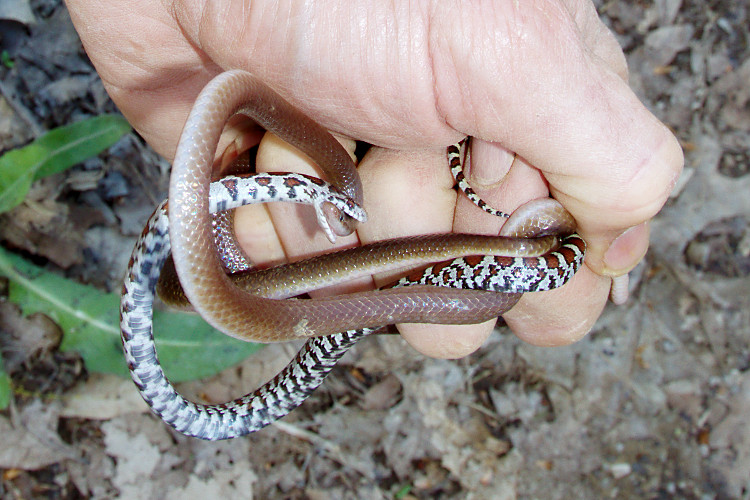
I spotted a discarded sheet of carpet while driving down a dirt road
in mid April. I backed up, got out and looked under it, and there were
three Worm Snakes (Carphophis amoenus) and a baby Milksnake
(Lampropeltis triangulum). I took a quick photo of the four snakes,
in hand. As you can see, the Milksnake latched on to one of the worm snakes.
Somewhat amusing. Just a case of the Milksnake being scared and biting
whatever it could. It released the Milksnake shortly thereafter, no harm done.
I then released them back under the carpet.
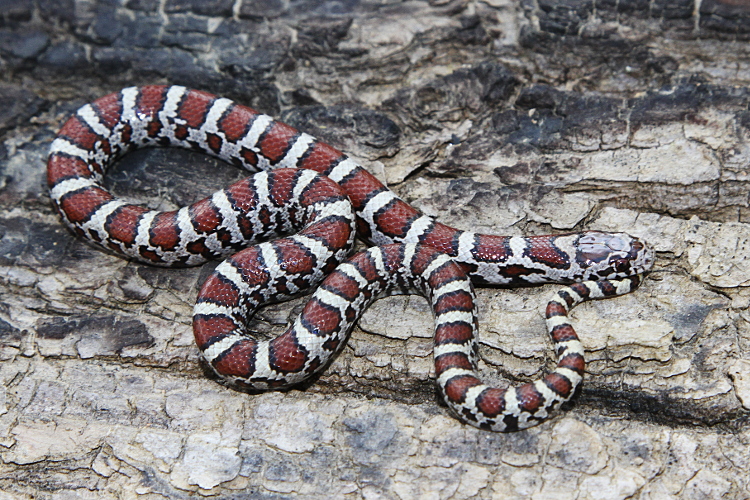
Another look at the baby Milksnake.
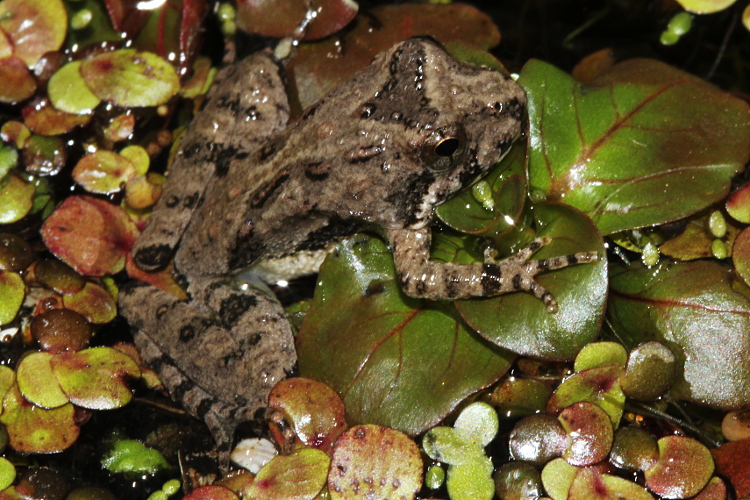
Northern Cricket Frog (Acris crepitans).
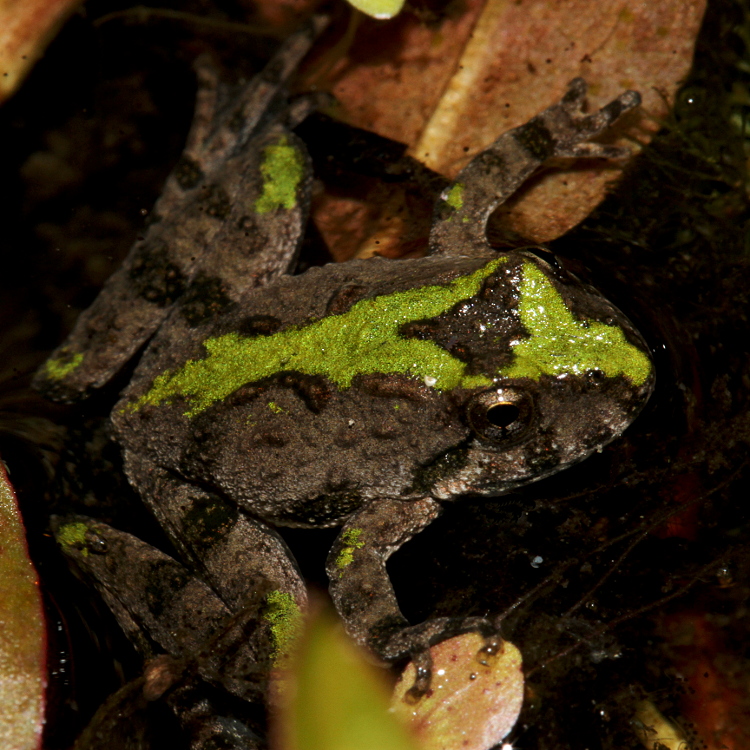
Another Northern Cricket Frog.
I tried road cruising in the rain on the night of April 28.
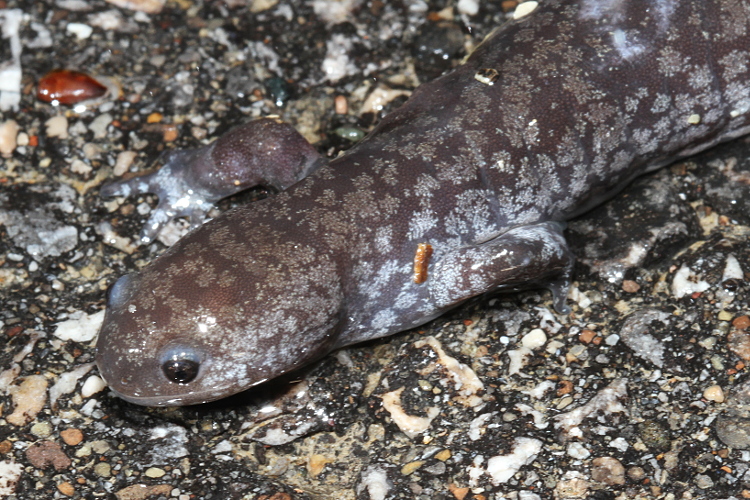
Right off the bat, I found this, a Smallmouth Salamander
(Ambystoma texanum). The first example of this species that I
have every seen in the wild. It was found near the glacial boundary
in Hocking County. There is a historic record for them from Athens County,
Ohio, but the area where it was found has seen major developments since then,
including the construction of Athens High School. I have not
had any luck finding them in my home county.
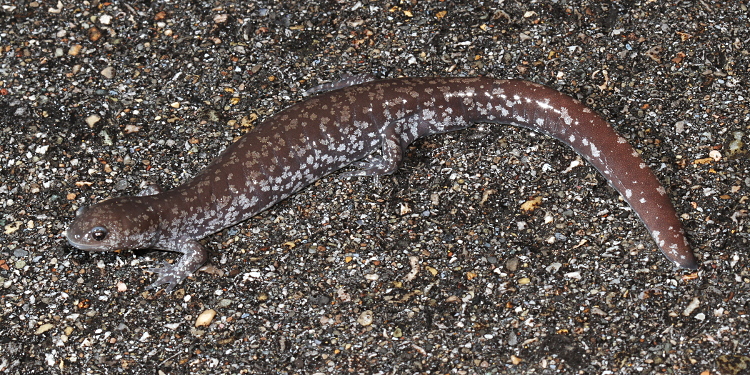
I wound up seeing several more Smallmouth Salamanders. This was
an attractive one.
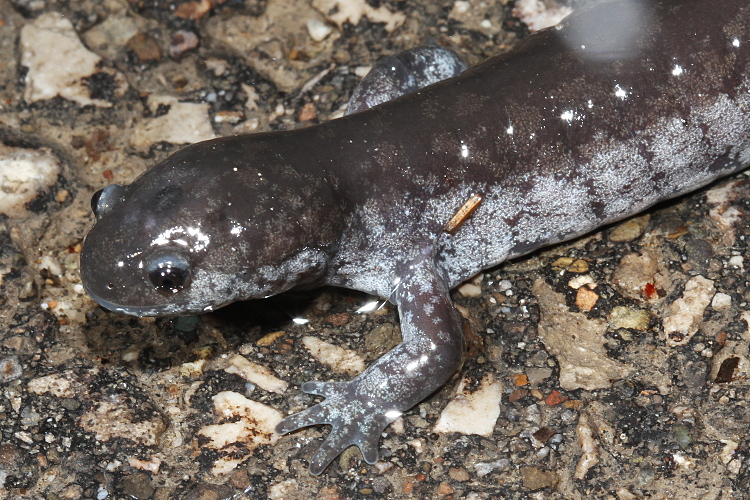
Another Smallmouth Salamander.

Grey Treefrog.

Spotted Salamander (Ambystoma maculatum).
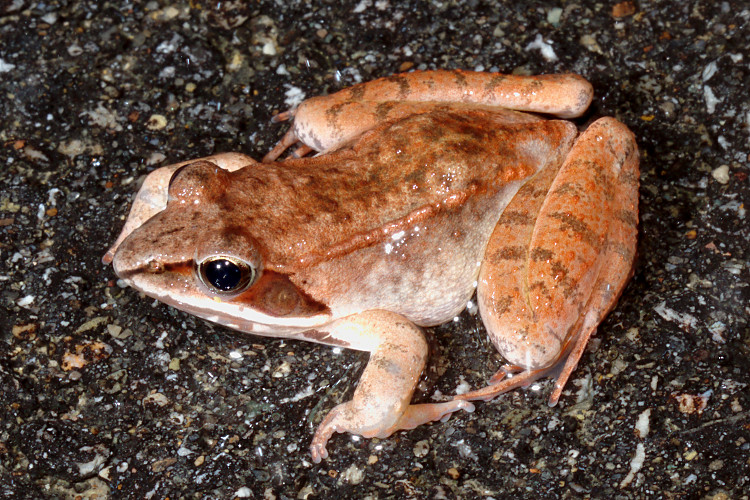
Wood Frog (Rana sylvatica).
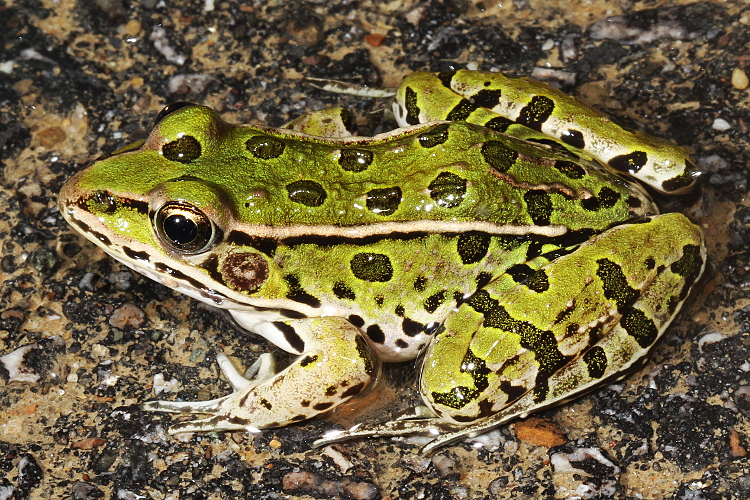
Northern Leopard Frogs (Rana pipiens).
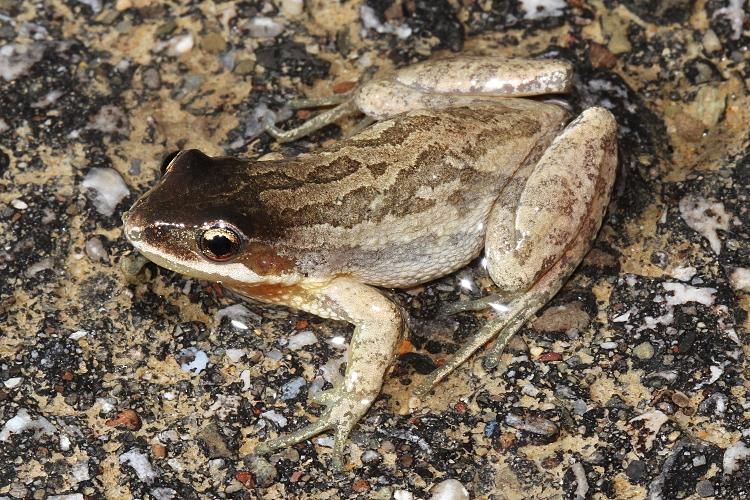
Western Chorus Frogs (Pseudacris triseriata).
This one had a rather dark coloration on its head.
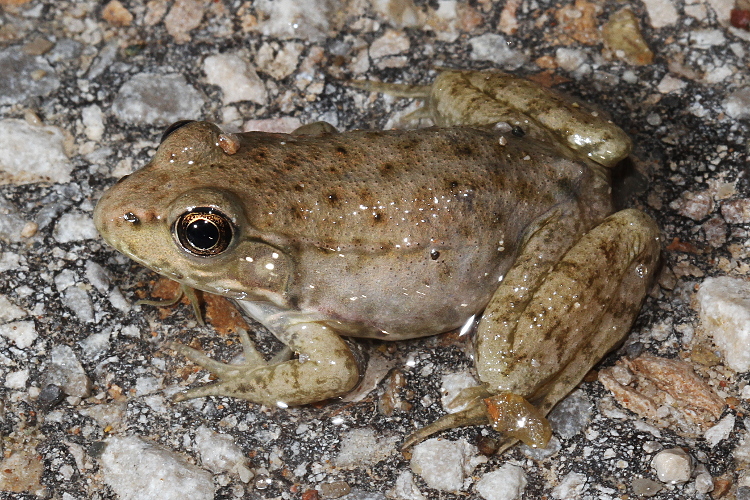
Green Frog (Rana clamitans).
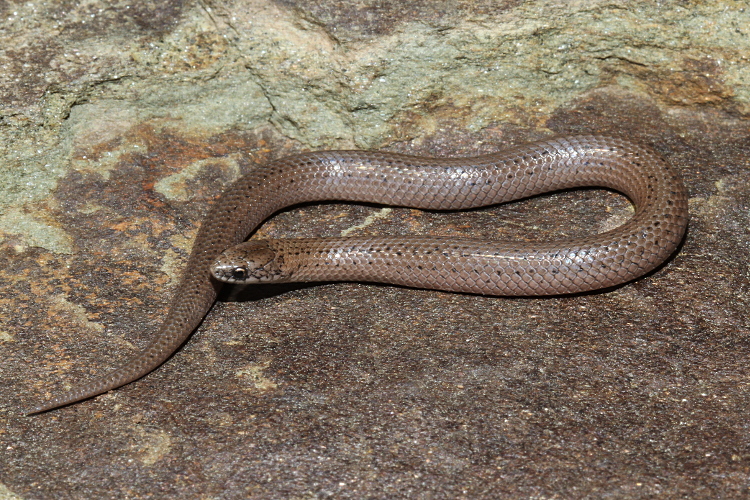
A young Smooth Earth Snake (Virginia valeriae) that a friend and
I found in West Virginia.
Roxanne and I did a little road cruising in the rain on the night
of May 6. Here's some of the things we saw:
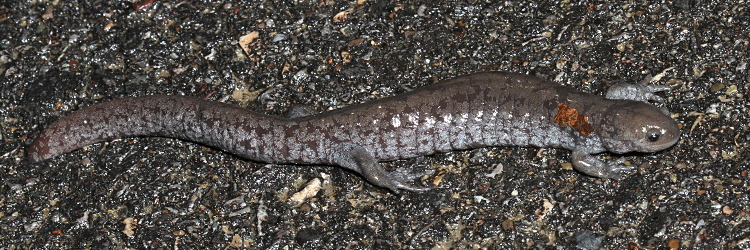
Smallmouth Salamander (Ambystoma texanum).
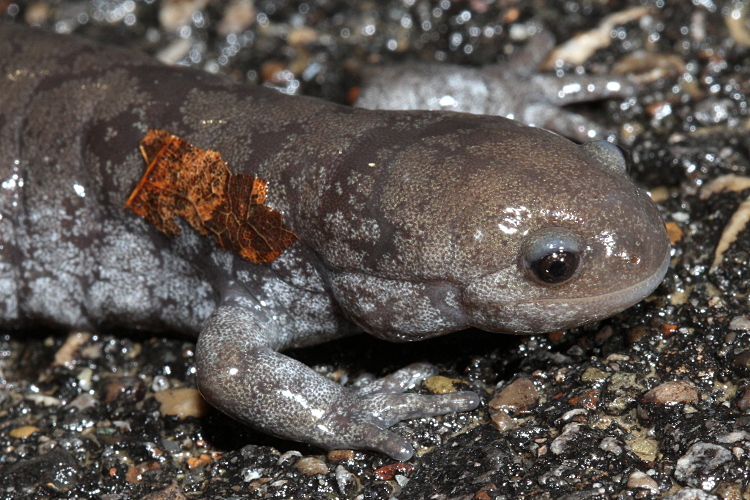
A closer look.
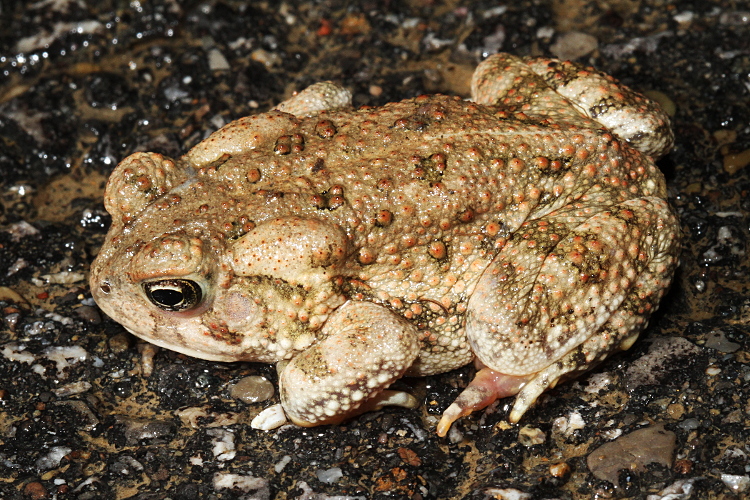
Fowler's Toad (Bufo fowleri).
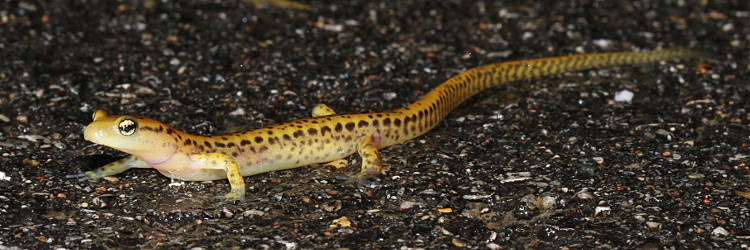
Long-tailed Salamander (Eurycea longicauda). Roxanne got a good laugh
when I bellied up to the wet asphalt to take this photo.
I think it was worth it.
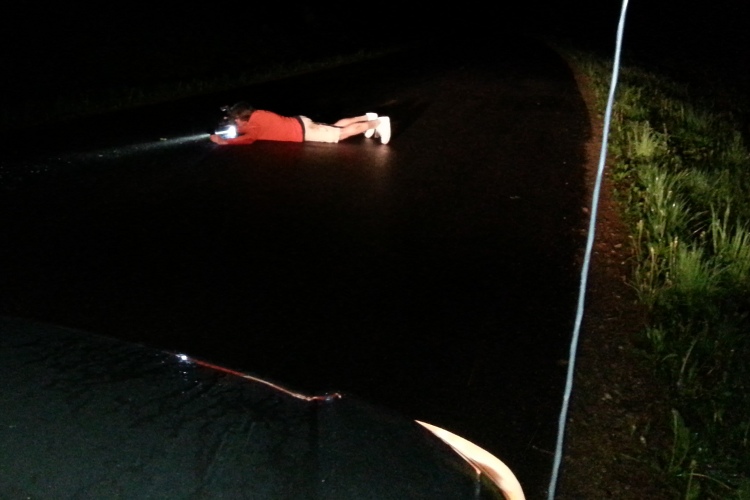
It turned out that in addition to laughing at me she snapped a photo...
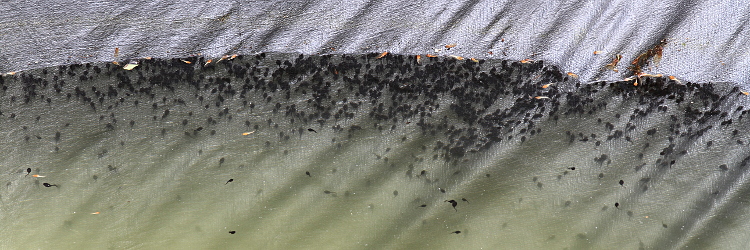
Our pool on May 19. These are American Toad (Bufo americanus) tadpoles.
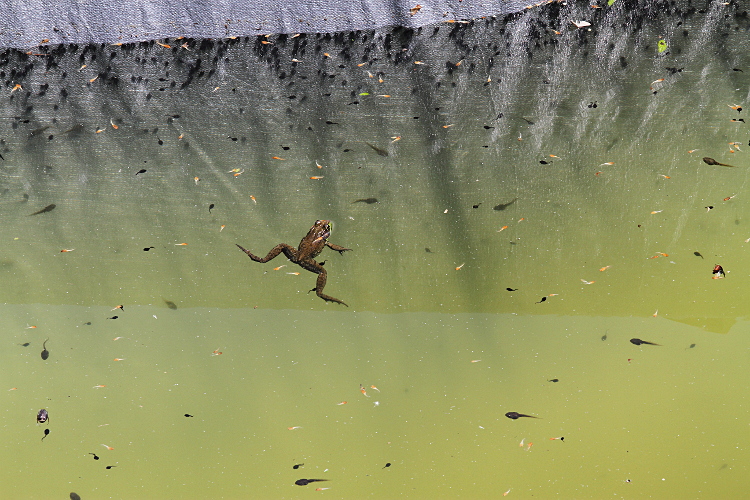
Another photo from our pool on May 19. The frog is a Green Frog
(Rana clamitans), the larger tadpoles are
Wood Frogs (Rana sylvatica), and the smaller ones are
American Toads. The toad tadpoles show no fear of the frog, and even seem to
graze on its skin. The Wood Frog tadpoles, on the other hand, make a
conscious effort to avoid to avoid the frog -- no doubt because the frog will
eat them. It turns out that toad tadpoles are toxic to most predators.
I watched for about 10 minutes, and the Wood Frog tadpoles never once got
close to the frog.
In early June, I was able to do a little bit of exploring in the
North Carolina sandhills.
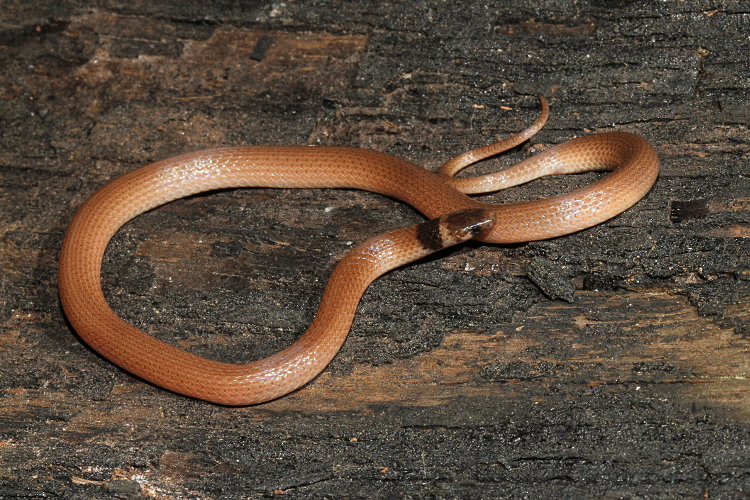
Southeastern Crowned Snake (Tantilla coronata).
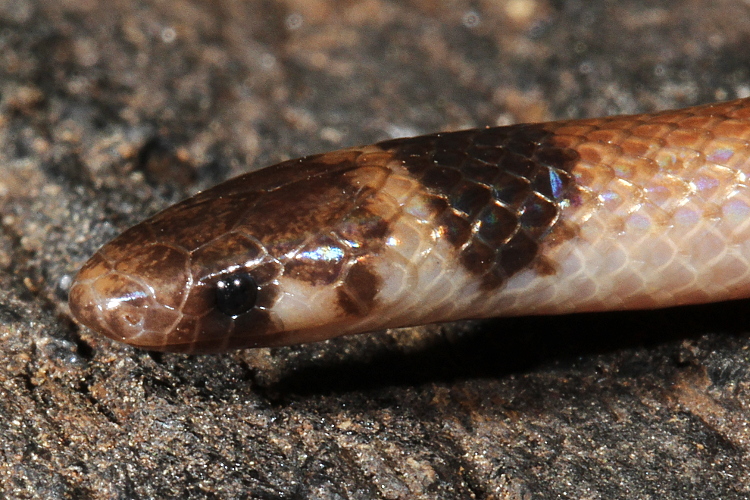
A closer look.
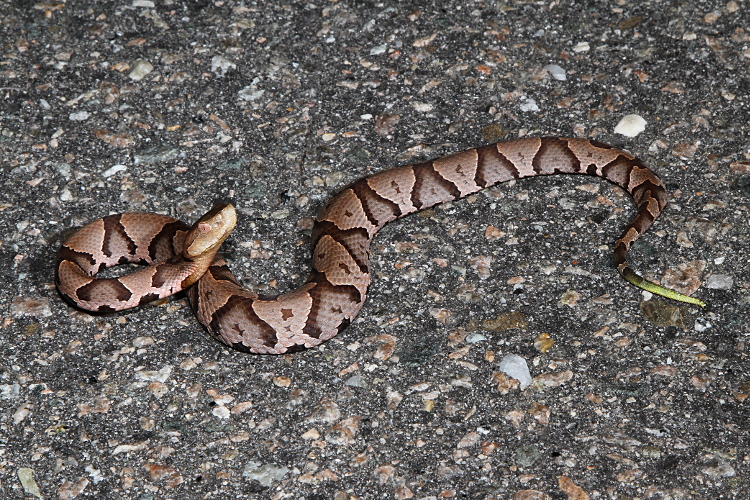
Copperhead (Agkistrodon contortrix). This was a young snake and
it still had the yellow tail. Looks just like the copperheads
found in Ohio.
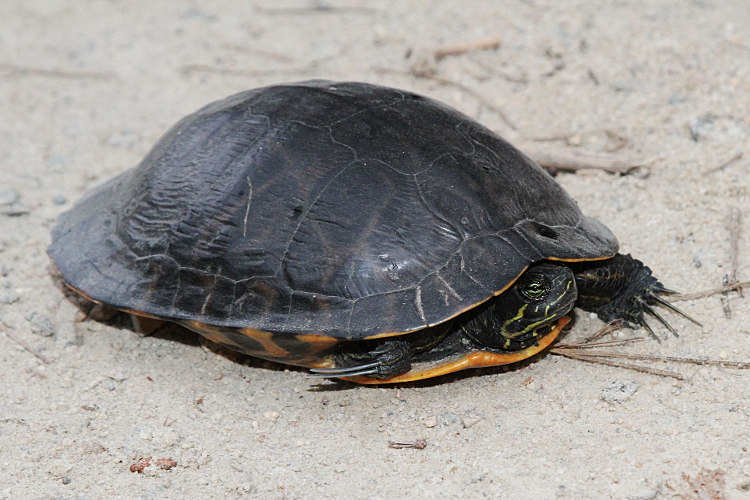
A Coastal Plain Cooter (Pseudemys concinna floridana) found on
a sand road at night. At least I'm pretty sure what this is...
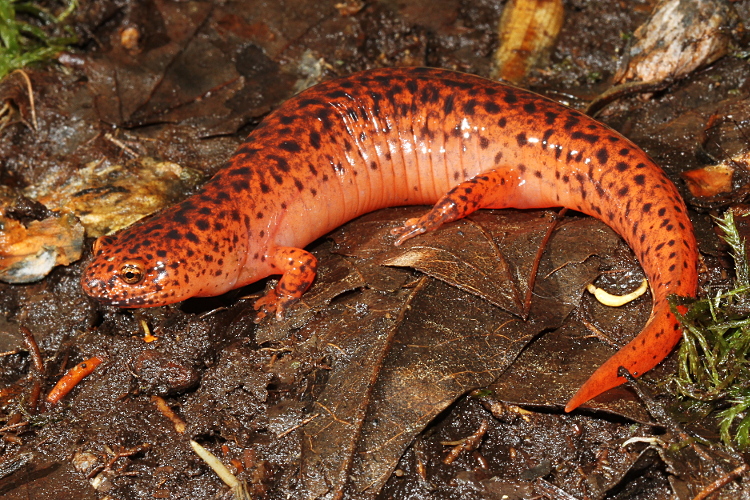
Red Salamander (Pseudotriton ruber).
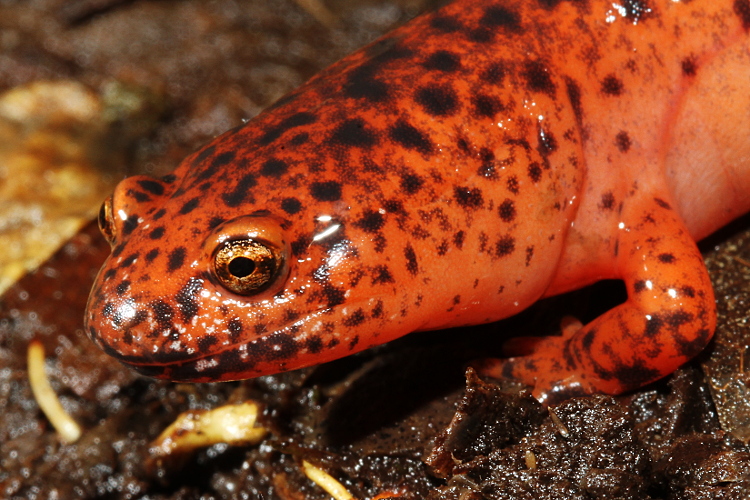
A closer look.
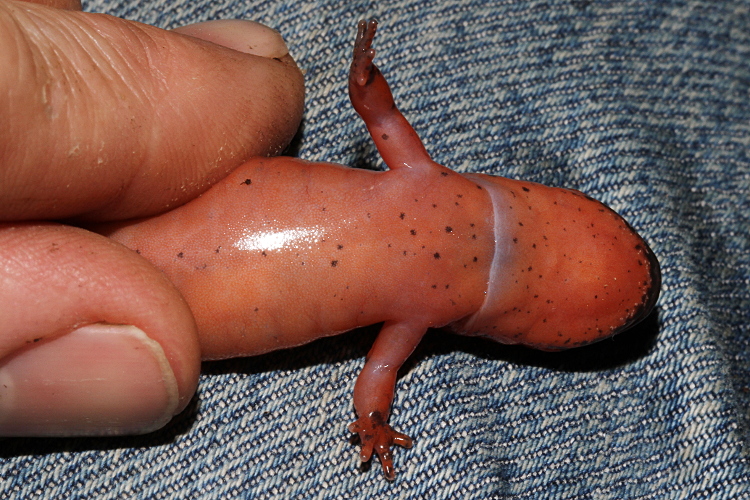
A ventral view.
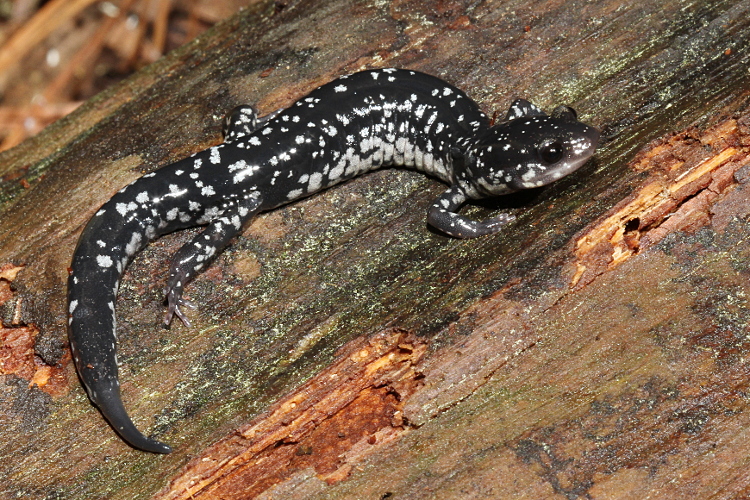
White-spotted Slimy Salamander (Plethodon cylindraceus).
Back in Ohio now.
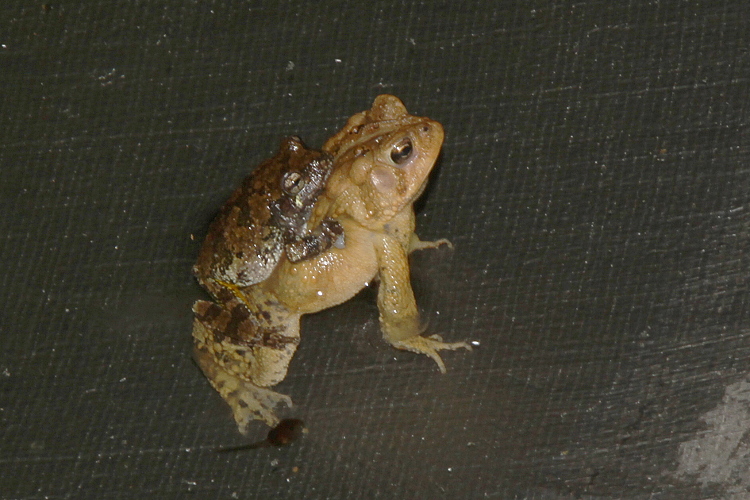
A Cope's Gray Treefrog (Hyla chrysoscelis) and an
American Toad (Bufo americanus) observed in our pool on
June 6. I don't think this is going to work... I did think it was
interesting that American Toads were calling this late in the season.
Note the American Toad tadpole by the rear foot of the adult toad.
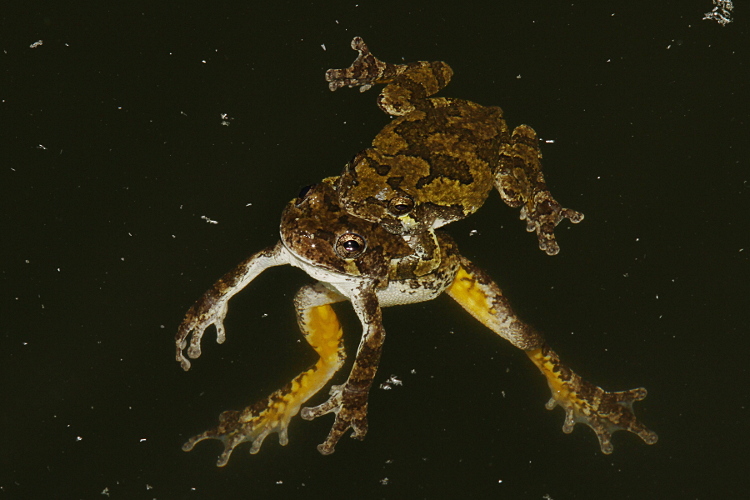
Cope's Gray Treefrogs (Hyla chrysoscelis). It kind of looks like
they are floating in outer space.
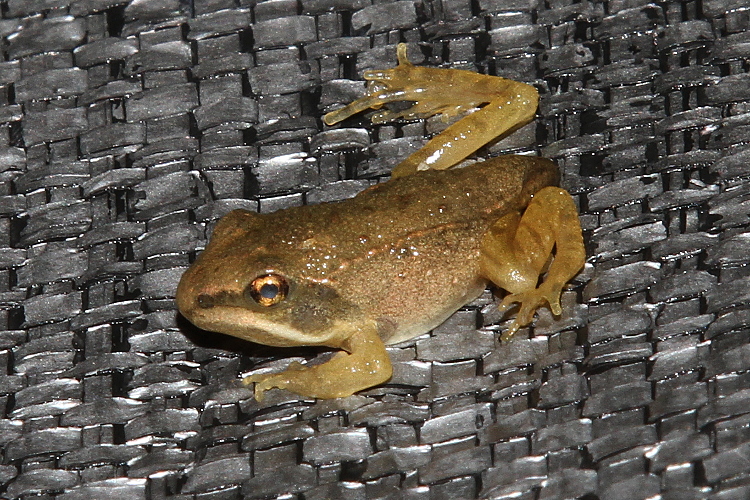
A metamorph Wood Frog (Rana sylvatica) observed at our pool
on June 6.

The Scottown covered bridge in Lawrence County, Ohio. June 8, 2013.
The sign says it was built in 1874.
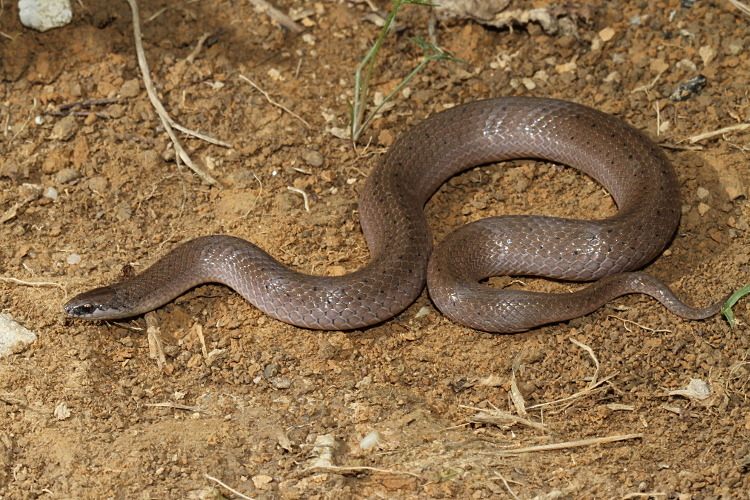
A gravid Smooth Earth Snake (Virginia valeriae).
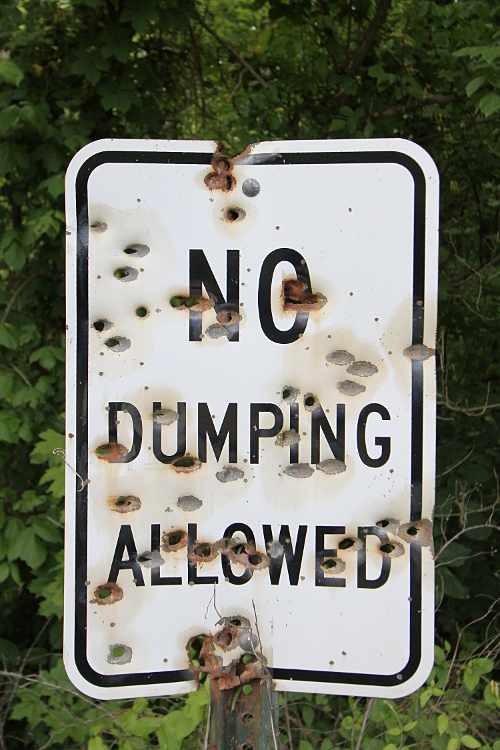
This sign gets no respect.
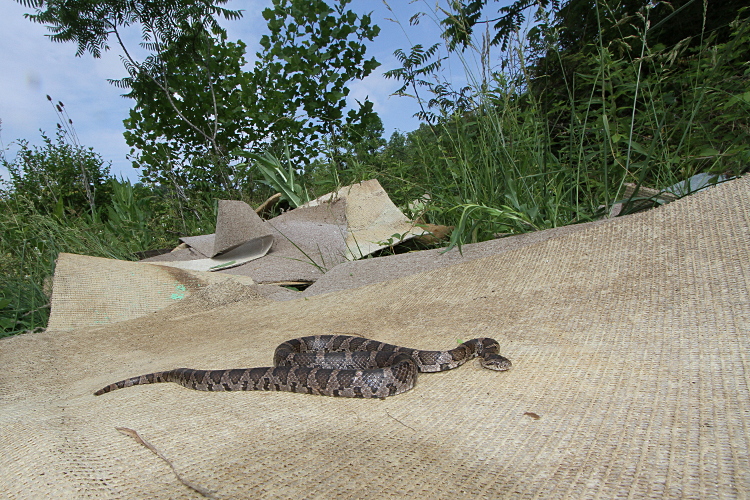
Just across the dirt road from the sign, there was a pile of dumped carpets.
Rummaging through the carpets revealed this
Milksnake (Lampropeltis triangulum).
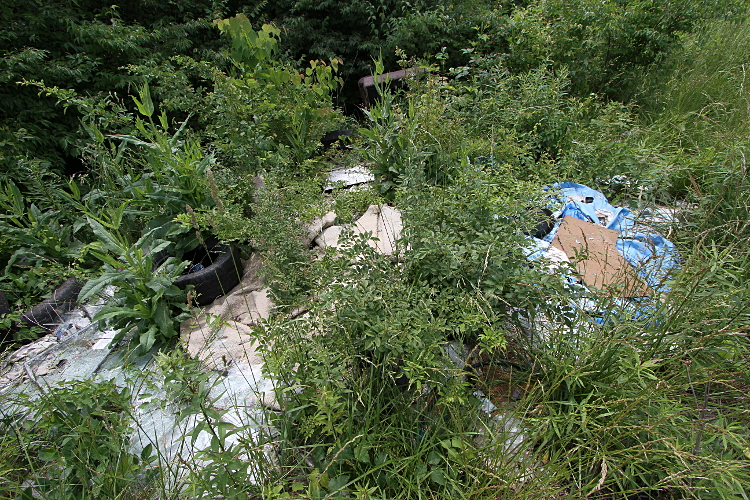
A random little (illegal) dump I came across. It included carpets,
a wading pool, and somebody's old record collection...
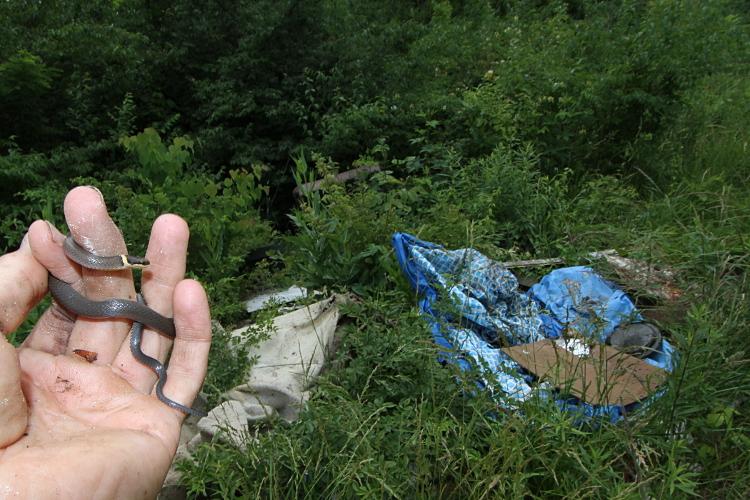
A Ring-necked Snake (Diadophis punctatus) that I found in the trash.
It was the only snake I found there. I felt like it should have produced
more than just one snake...
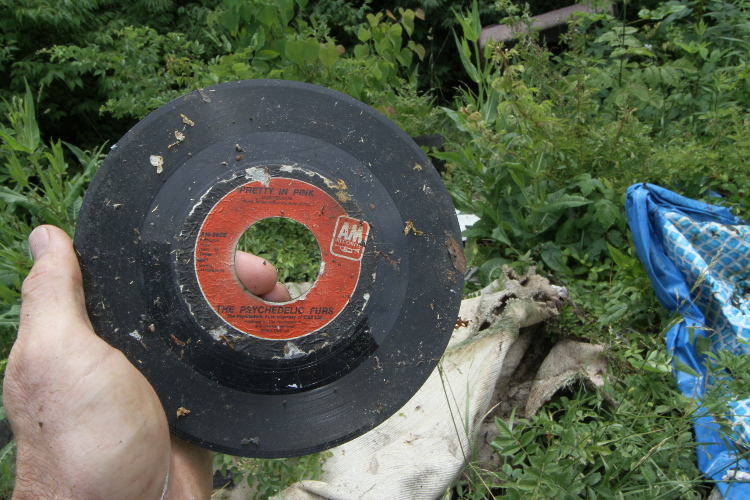
The site also yielded this artifact that dates from late in the
vinyl 45 epoch.
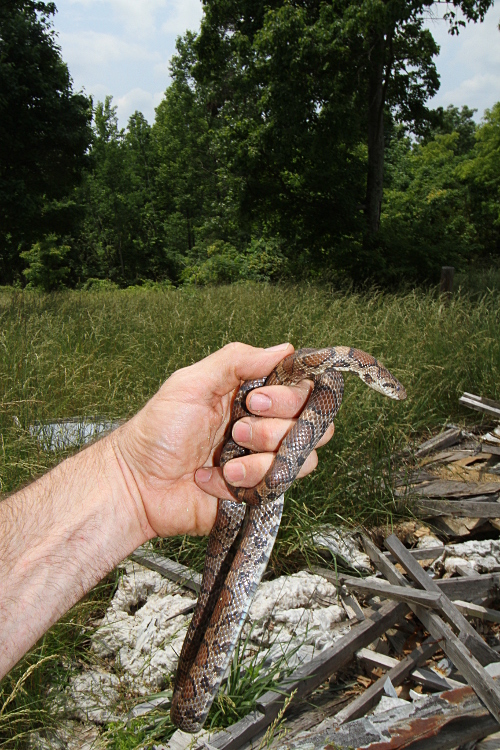
Another Milksnake (Lampropeltis triangulum), found under
the sheet of tin you can see just above my wrist.
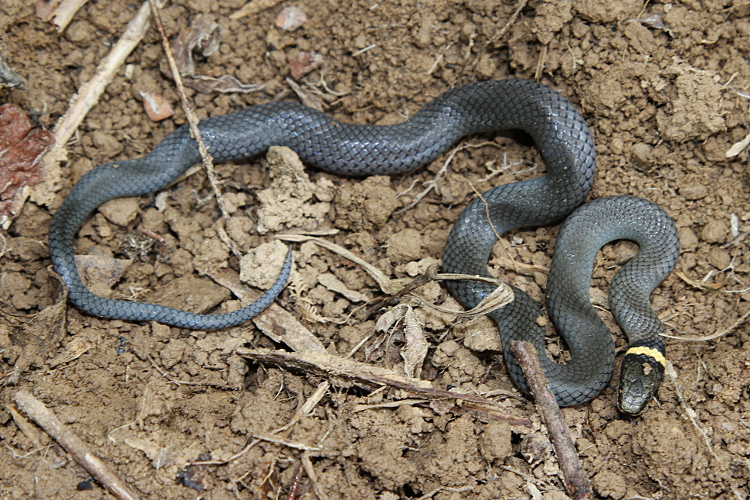
A Ring-necked Snake (Diadophis punctatus), as found under cover.
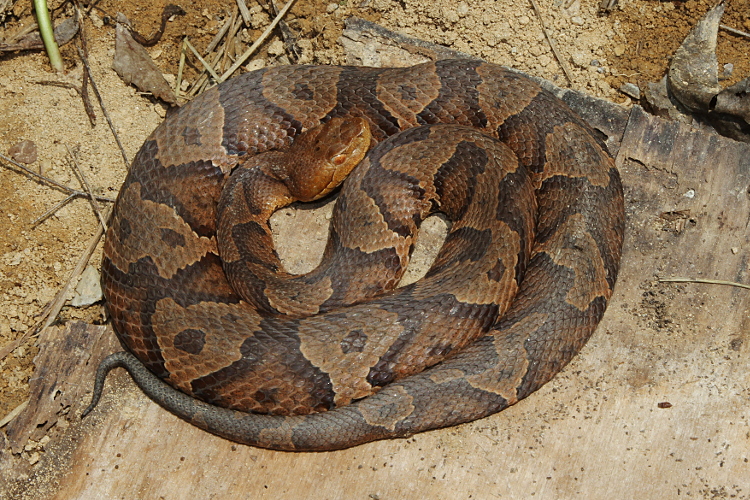
A Copperhead (Agkistrodon contortrix), as found under a board.
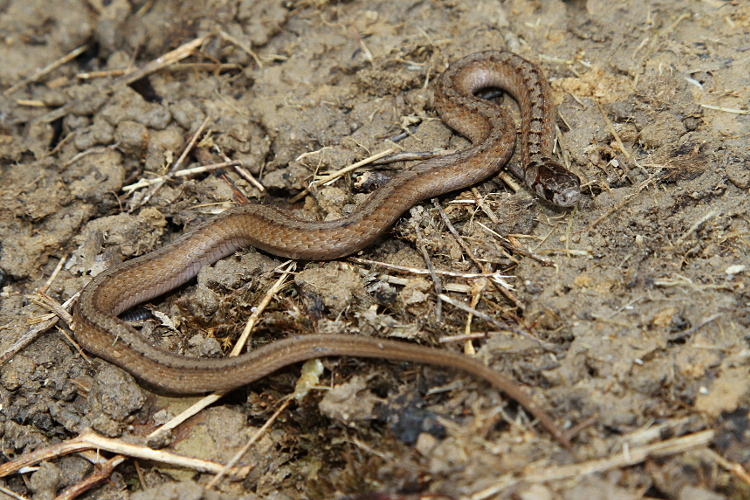
A young Dekay's Snake (Storeria dekayi), as found under cover.
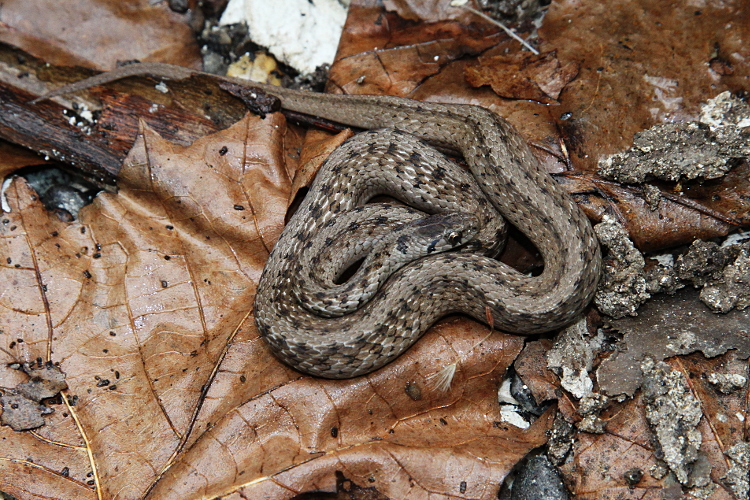
A Dekay's Snake (Storeria dekayi), as found under a board.
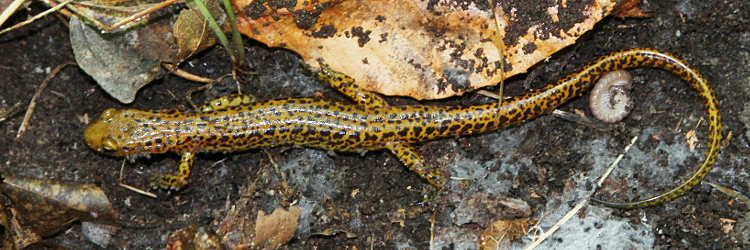
A Long-tailed Salamander (Eurycea longicauda), as found under a log.
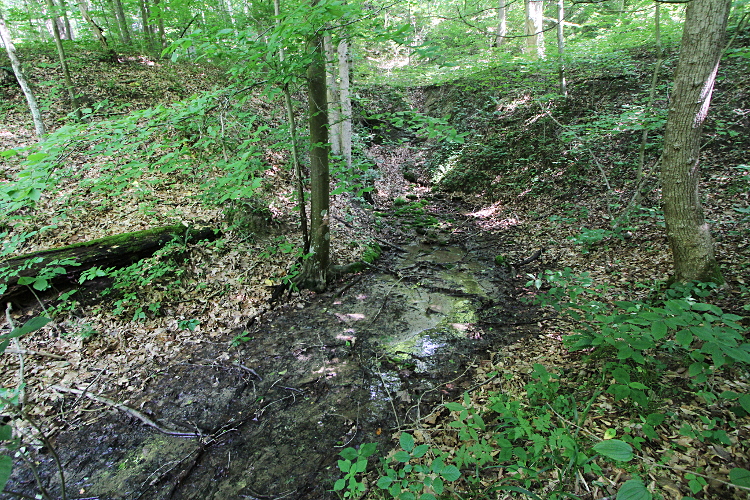
This spring flows out of a hillside, which was "disturbed" by
mining activities in the distant past. It is teeming with salamander larvae.
Southern Twolined, Longtailed, and Red Salamander larvae were found.
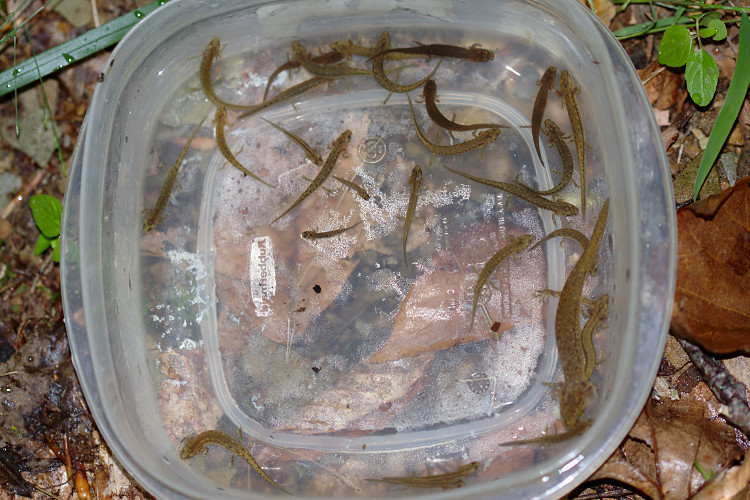
Here are some of the larvae I saw.
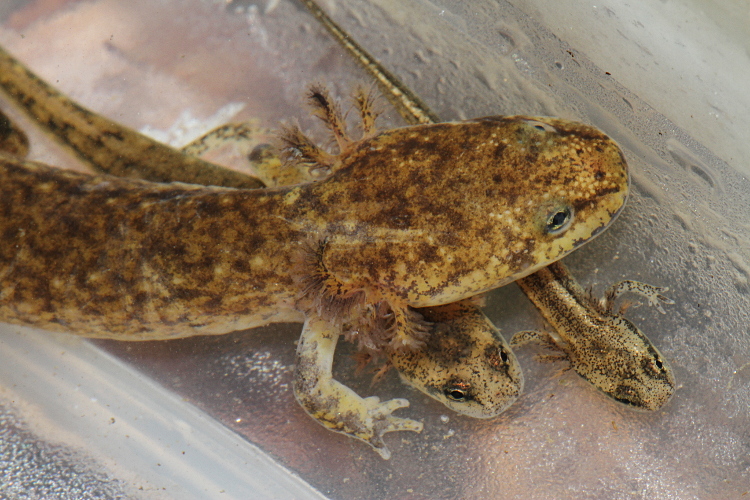
A closer look at three of them. The largest one is a
Red Salamander (Pseudotriton ruber), the medium-sized one is a
Southern Two-lined Salamander (Eurycea cirrigera), and the smallest is
a Long-tailed Salamander (Eurycea longicauda).
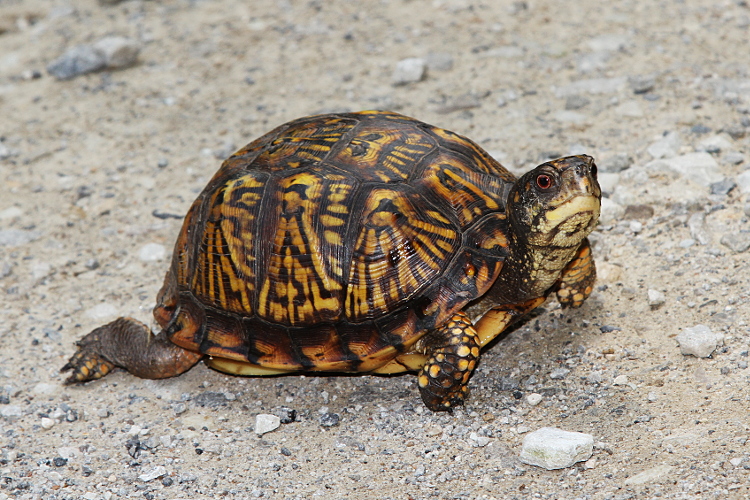
An Eastern Box Turtle (Terrapene carolina), as found on a dirt road.
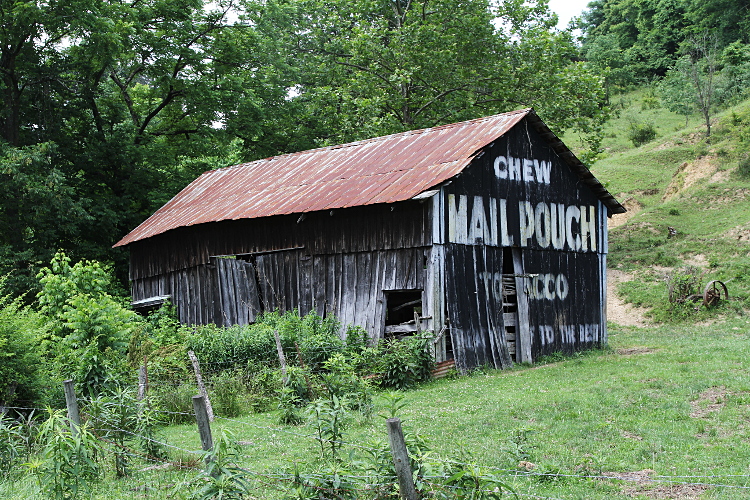
A classic old barn I saw in mid June. According to wikipedia, there were
20,000 Mail Pouch Tobacco barns in their heyday, the 1960s...
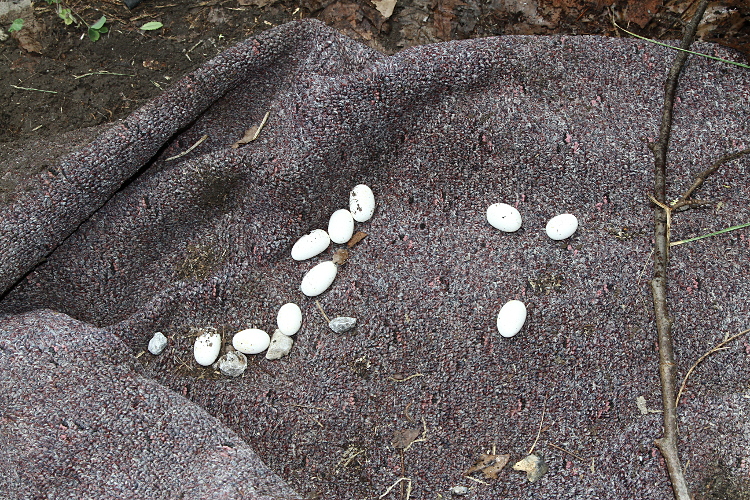
Some reptile eggs I found in a carpet on June 15. I actually found another
set of eggs, just like this one, later in the day as well. I believe they
are Black Racer (Coluber constrictor) eggs. I put them back as I
found them.
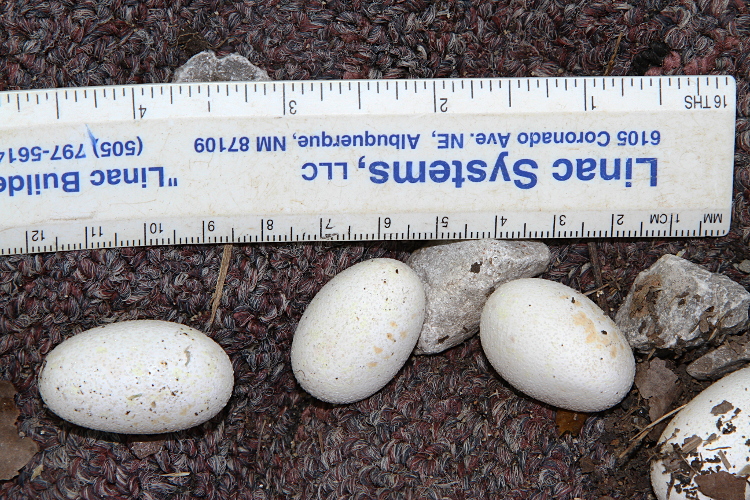
A closer look at the eggs. I returned to this spot again on September 14.
The carpet was seriously disturbed since my last visit (moved about 20 feet
and partially buried). This was apparently done a by a road grader doing
some work on the roadside ditch. There was no sign of any egg remains.
I also checked the other set of eggs on September 14 -- these appeared to have
all hatched successfully (no photos). I found a third set that had hatched
on September 14 as well -- a photo is shown below in its chronological
position.

On June 16, Roxanne and I spent several hours hiking. First we stopped
for lunch, at the Dairy Corner in Wellston, Ohio.

The menu.

I passed on dessert...
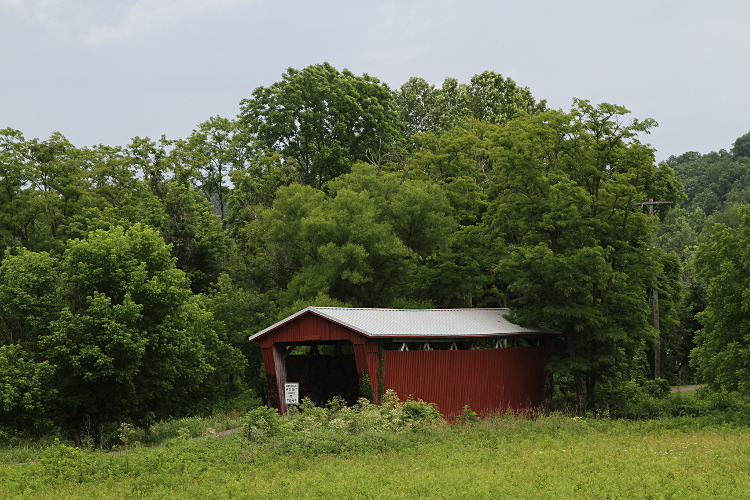
We checked out the Byer covered bridge in Jackson County, Ohio.
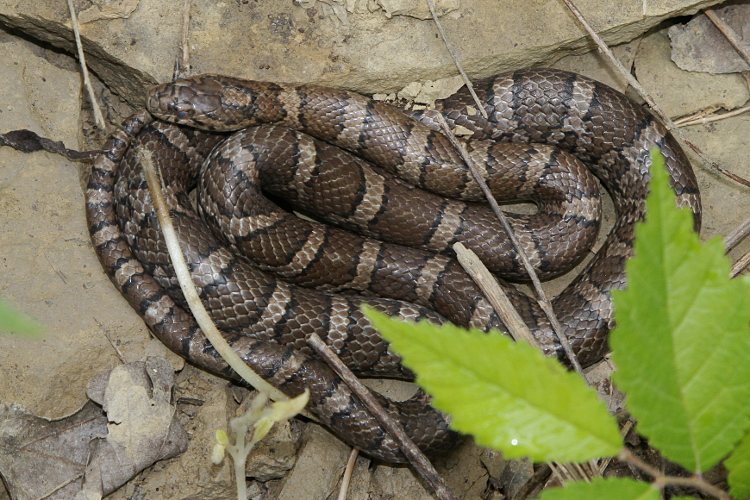
A Milksnake (Lampropeltis triangulum), as found under a rock slab.
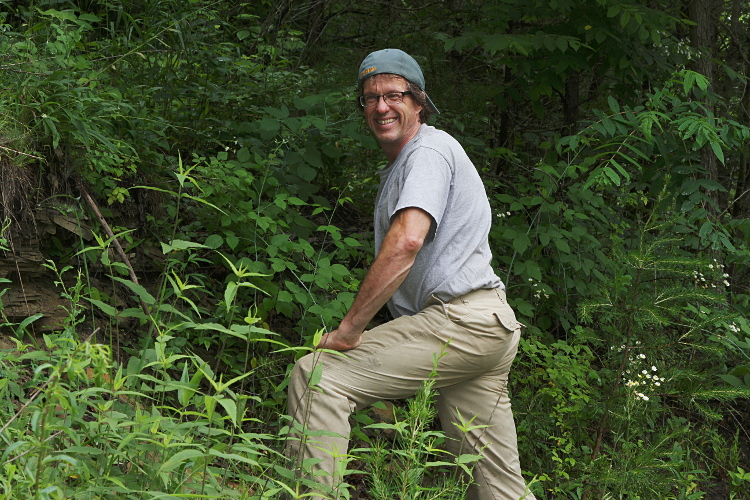
Me, checking under rock slabs on a hillside.
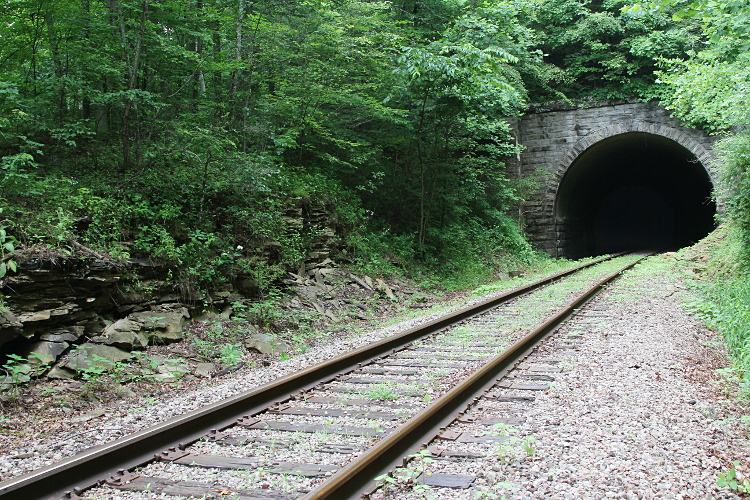
Some nice habitat we checked out.
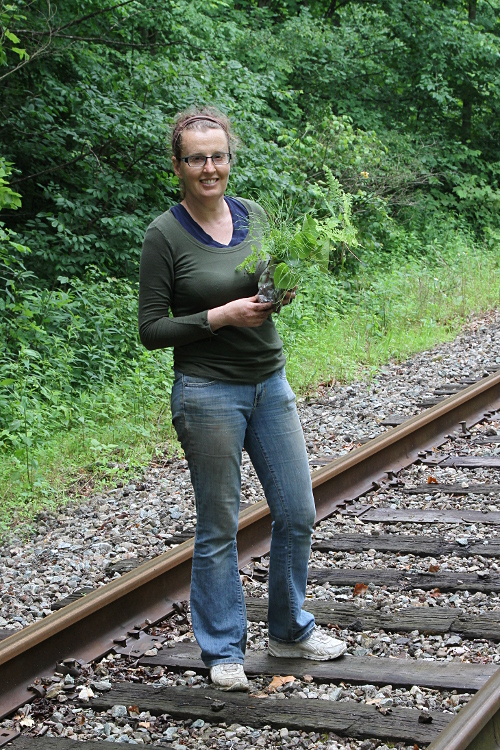
Roxanne was also very interested in the plants...
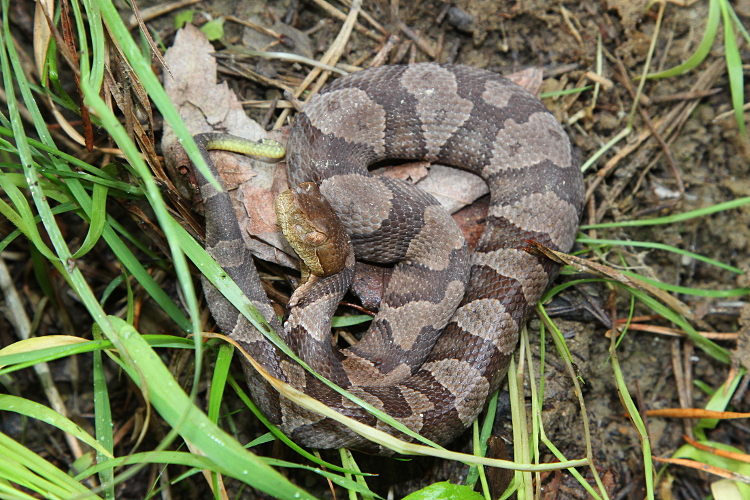
A baby Copperhead (Agkistrodon contortrix), almost as I found it
under a rock slab. It's giving me the stink eye.
It also appeared to be digesting a meal.
Note the yellow tail, characteristic of young Copperheads.
I do not see the young ones very often.
The following evening, Roxanne and I went out for a bit after dinner.
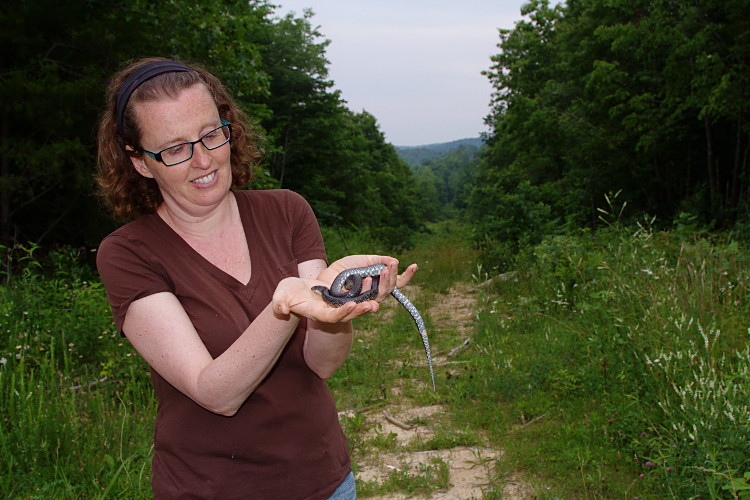
Roxanne with a Black Kingsnake (Lampropeltis getula nigra) that was
found under some rubbish in this pipeline cut.
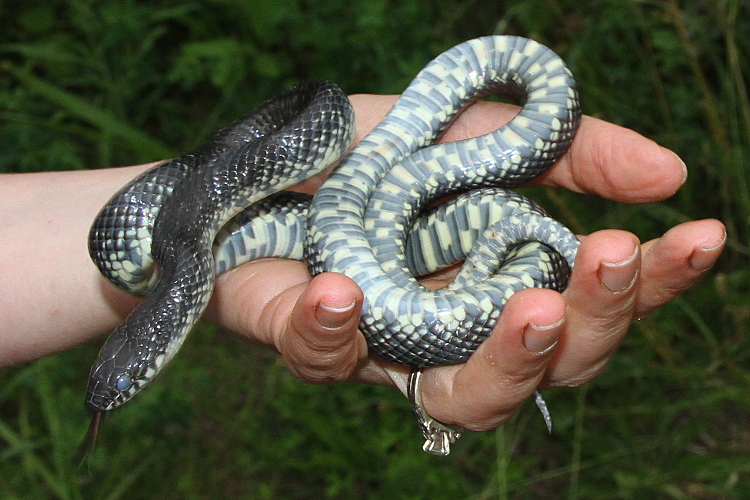
A closer look at the king. It was in pre-shed condition.
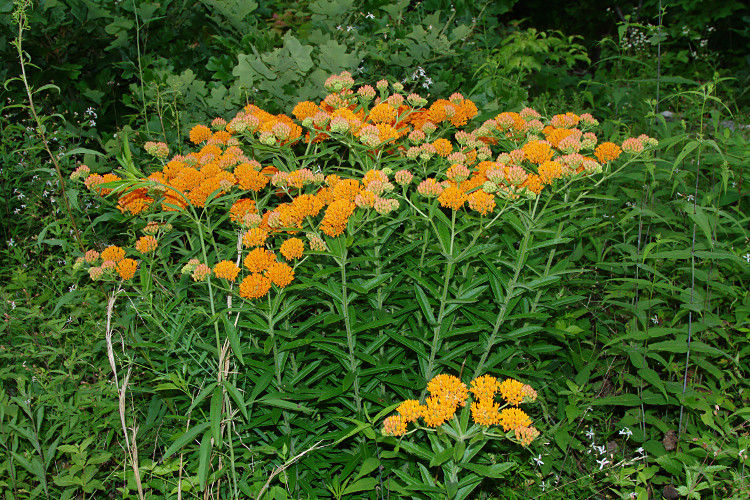
This Butterfly Weed was also seen nearby in the pipeline cut.
I think Roxanne was more excited about this than the kingsnake...
About 200 yards away, still on the ridgetop, there is a small clearing
where a number of old carpets have been dumped. Pulling away
the last carpet revealed this:
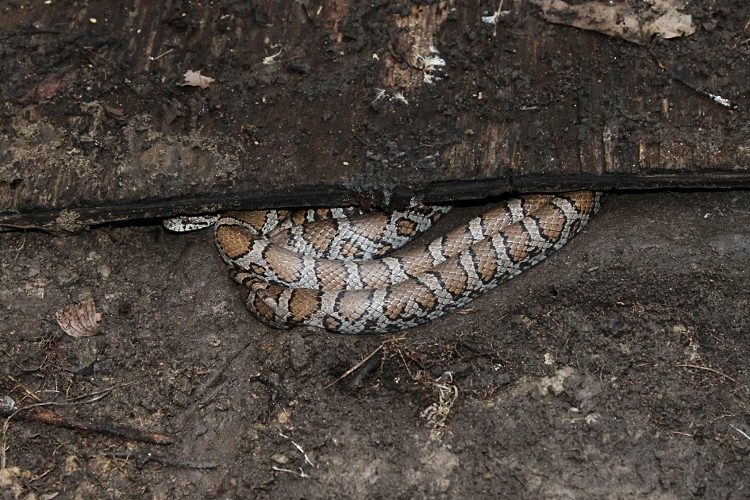
Milksnake (Lampropeltis triangulum).
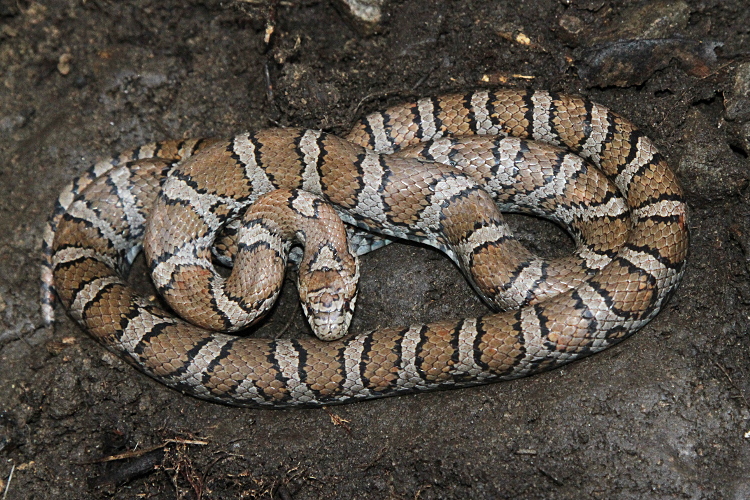
Another photo, after I lifted the board. The snake had moved a little bit.
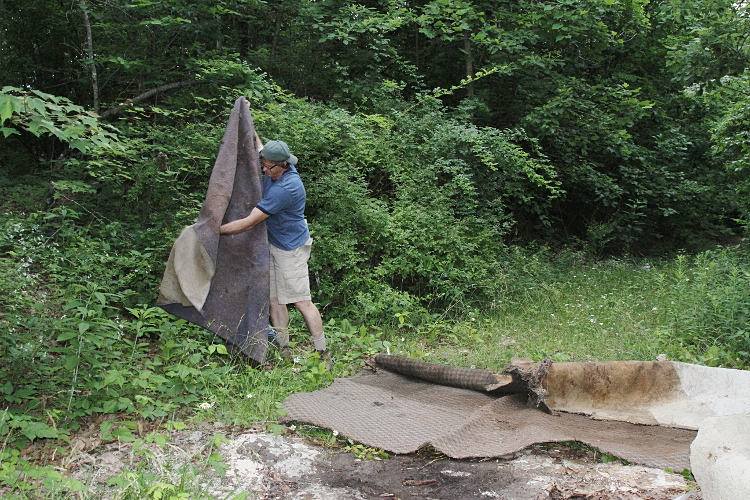
An important part of this game is putting the carpet pile back together
after you have searched through it. I think Roxanne found this rather amusing,
as I tend to pretty systematic about this.
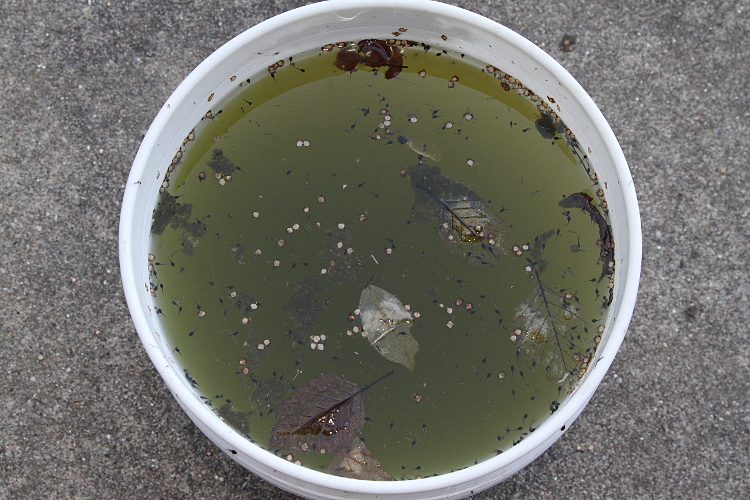
Silly Cope's Gray Treefrogs (Hyla chrysoscelis) "made babies" in a
random bucket in our yard. Life Finds a Way. June 20.
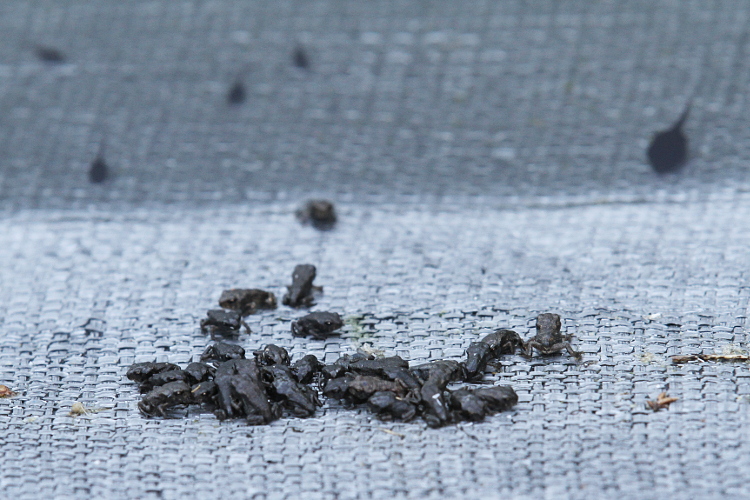
American Toadlets (Bufo americanus) emerging from our pool on June 20.
They huddle together to conserve moisture.
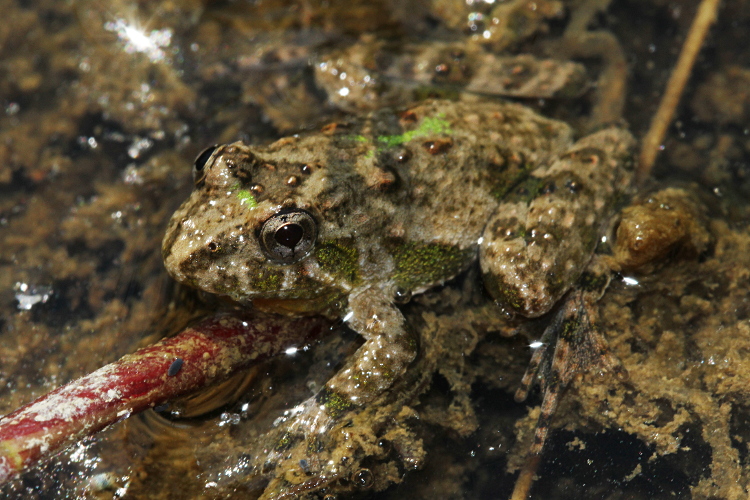
A Northern Cricket Frog (Acris crepitans) I found in the shallows
of a lake. Shown as found.
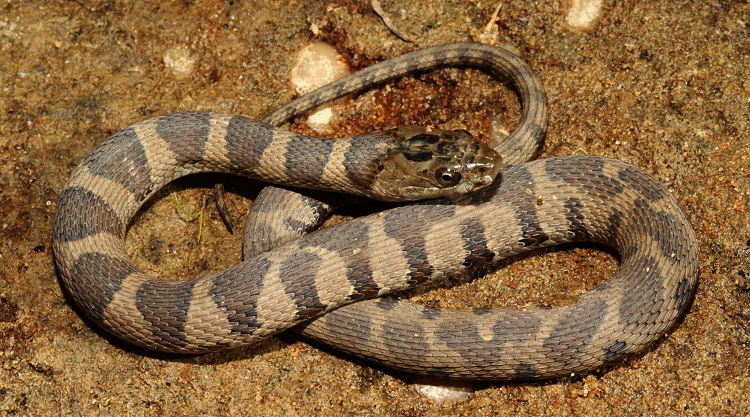
While looking for Cricket Frogs, I found this young Northern Water Snake
(Nerodia sipedon). I suspect it was looking for Cricket Frogs
as well...
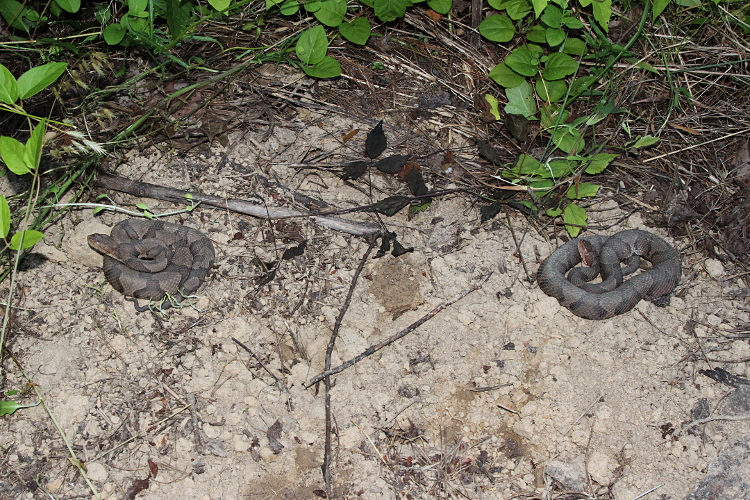
A pair of Copperheads (Agkistrodon contortrix), as found under
a board.
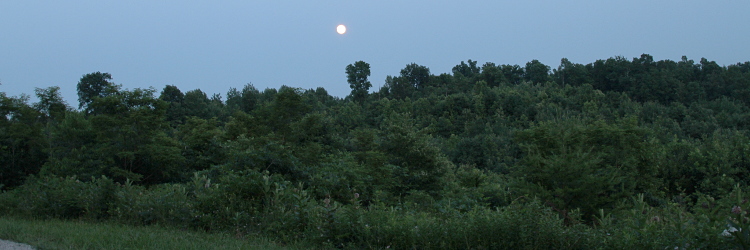
The "supermoon" was out on the evening of June 22. The snakes, not so much...
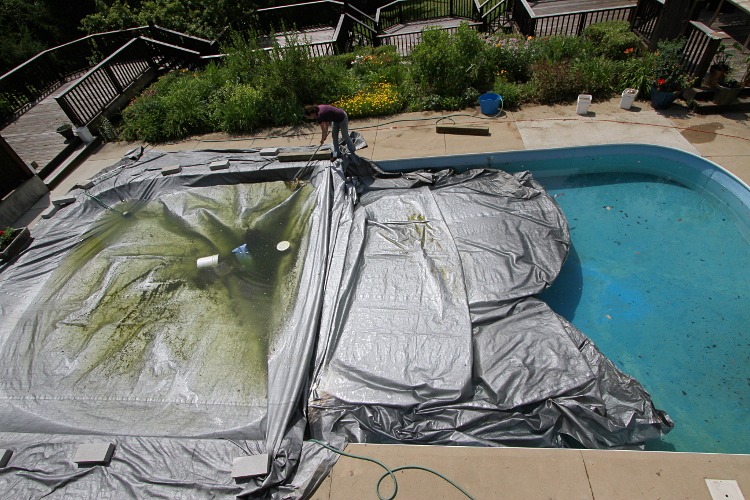
The amphibians were evicted from our pool on June 23. The Wood Frogs and
American Toads had already transformed. The Cope's Gray Treefrog
tadpoles were transferred to other bodies of water.
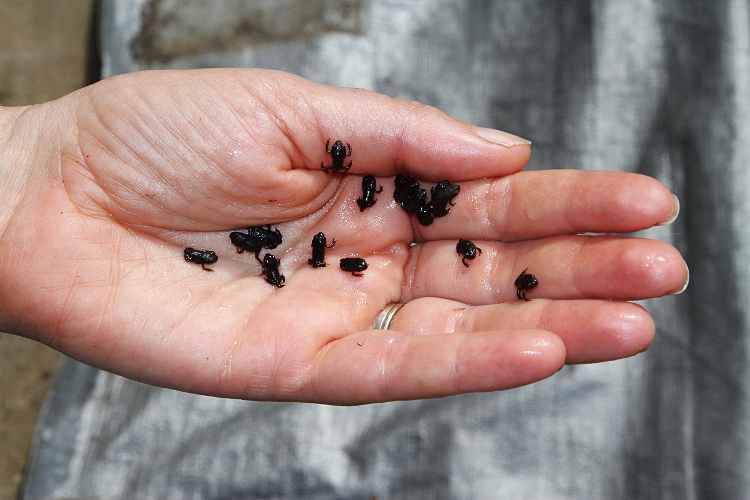
Many American Toadlets (Bufo americanus) were found under and in the
folds of the tarp as we removed it from the pool. Roxanne moved them to
her various gardens.
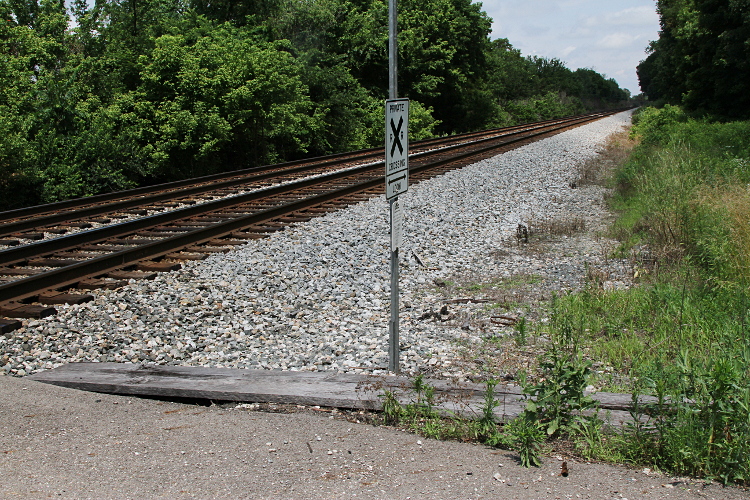
This railroad cuts through the southern Ohio hill country.
I lifted the board in the foreground to reveal the snake in the
following photos.
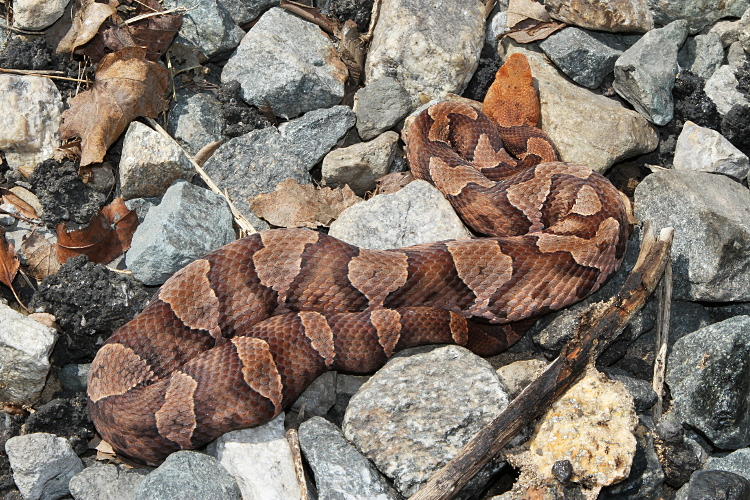
A beautiful Copperhead (Agkistrodon contortrix), probably a gravid
female.
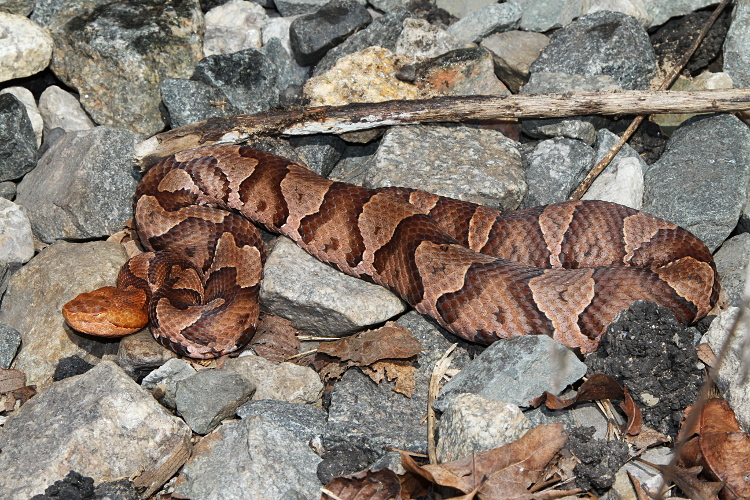
From the side.
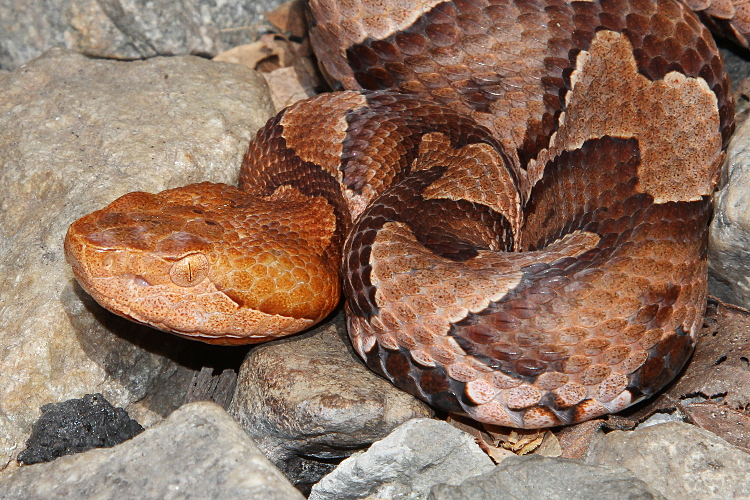
A closer look. The snake never budged. I returned the board to its original
position and moved on.
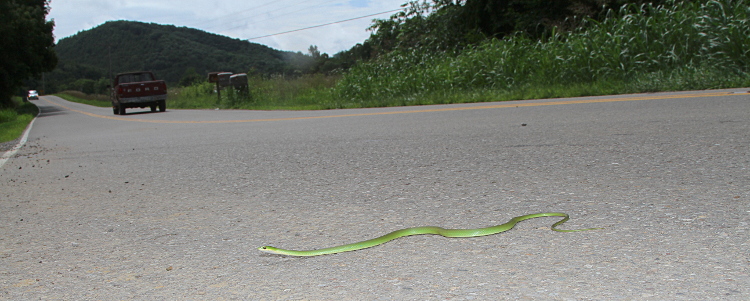
A Rough Green Snake (Opheodrys aestivus) I found on a fairly
busy road. Shown as found. When I first came up on it, there was a mailman
stopped at the mailboxes on the right and somebody pulling out of the
driveway on the left. I just barely spotted the snake as I negotiated
the mini traffic jam. The other drivers must have thought I was nuts when
I immediately did a U-turn to go back to the snake...
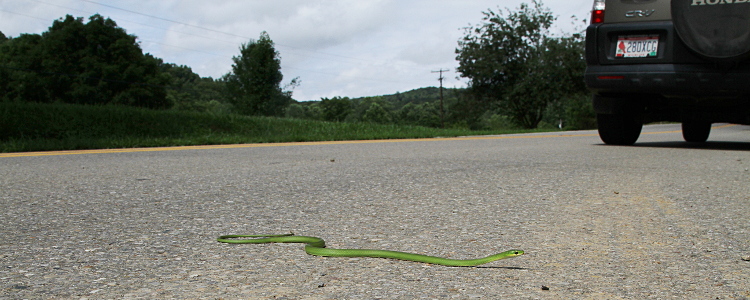
Looking back the other way.
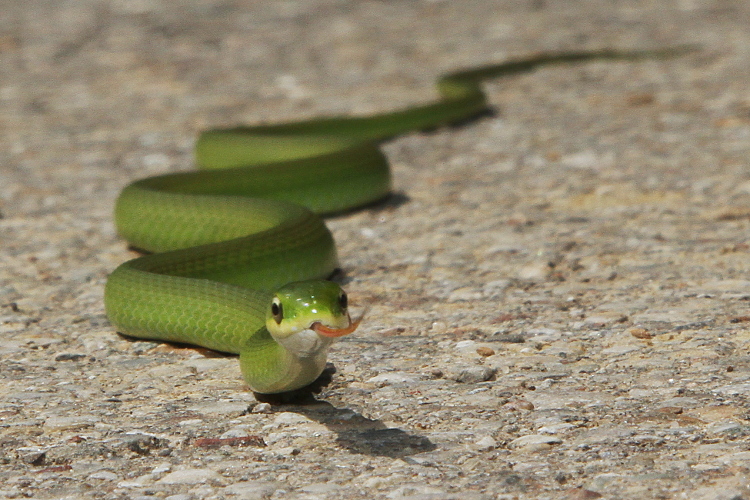
Starting to crawl off the road.
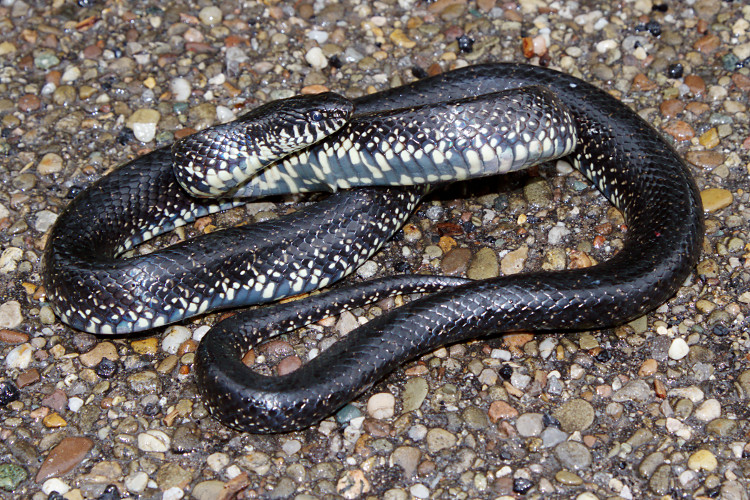
A Black Kingsnake (Lampropeltis getula nigra) found under cover on
a rainy day.

The Gallipolis Lock and Dam on the Ohio River on July 7. Some people
(on the other side of the river?) call it the Robert C. Byrd Lock and Dam.
In any case, it is an impressive piece of engineering. And there is some
serious throughput, due to all the rain we've been having (enough already).
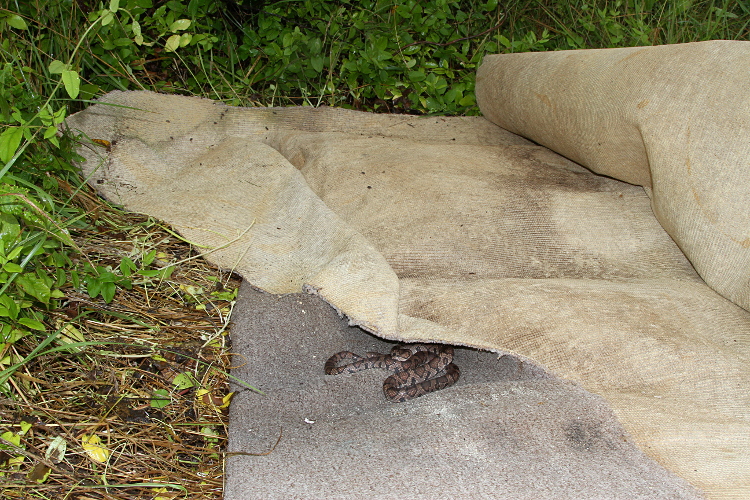
A Milksnake (Lampropeltis triangulum), as found in some carpet.
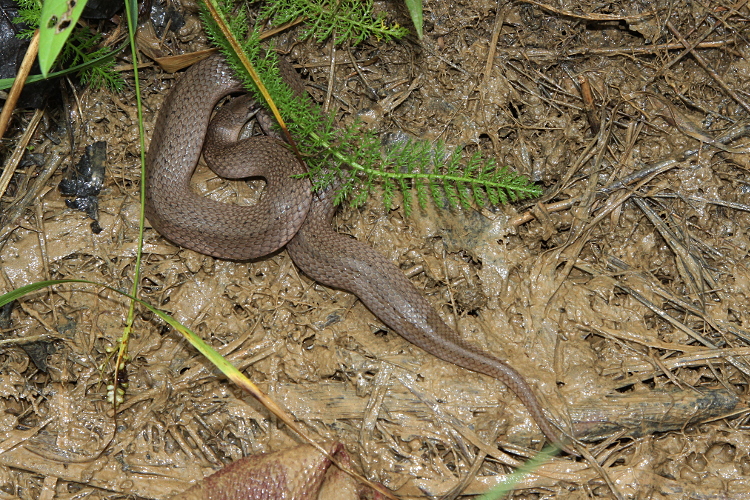
A gravid Smooth Earth Snake (Virginia valeriae) found under a piece
of fabric on a wet day. Shown as found.
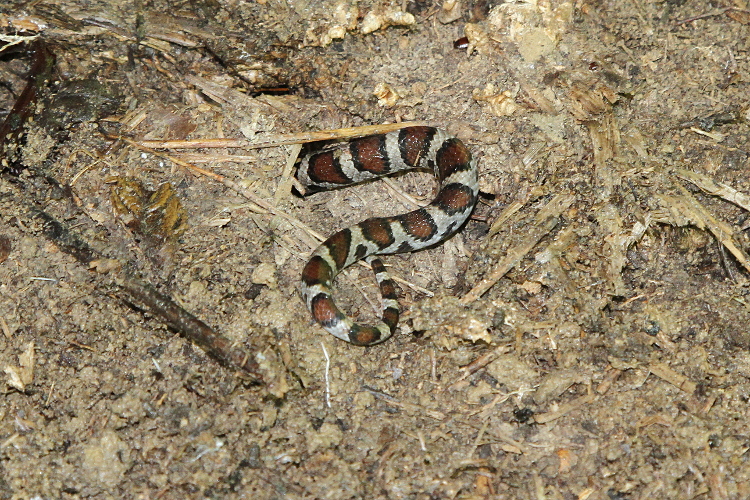
This Milksnake (Lampropeltis triangulum) didn't want to stick
around for photos.
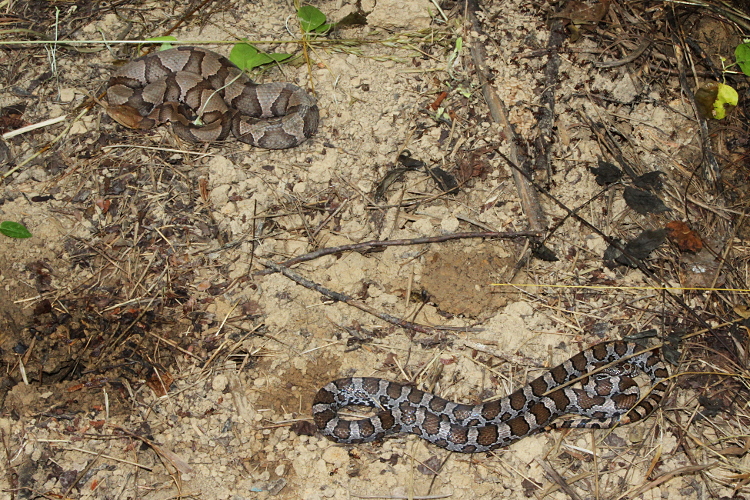
A Copperhead (Agkistrodon contortrix) and a Milksnake
(Lampropeltis triangulum), as found under a board.
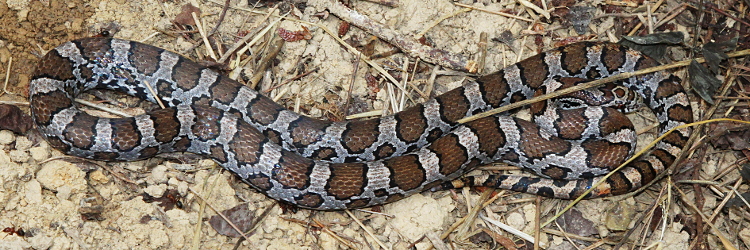
A closer look at the Milksnake.
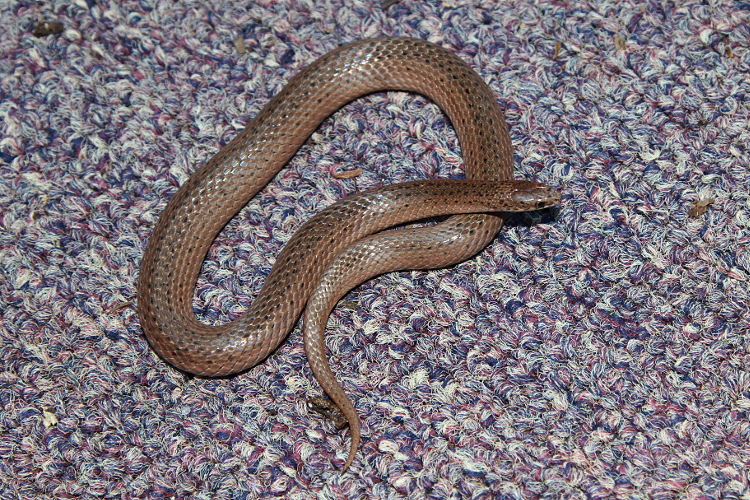
A Smooth Earth Snake (Virginia valeriae) posed on the carpet it was
found under. It's a little hard to tell from the photo, but the snake had
an interesting brick red cast to its color.
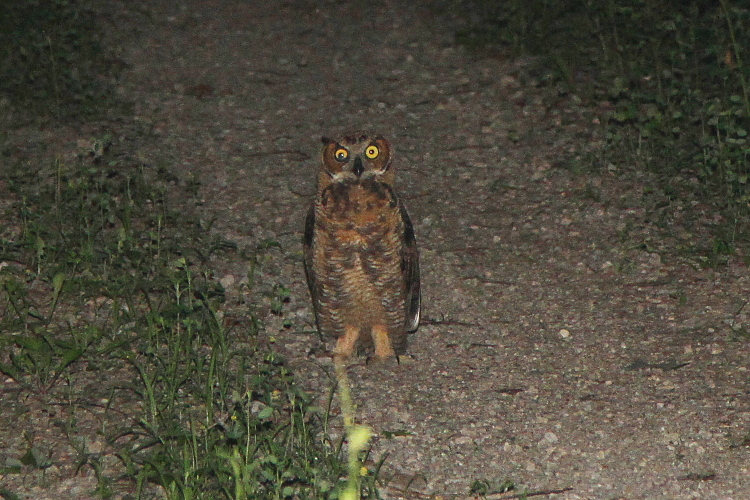
A Great Horned Owl, as found on a road at night.
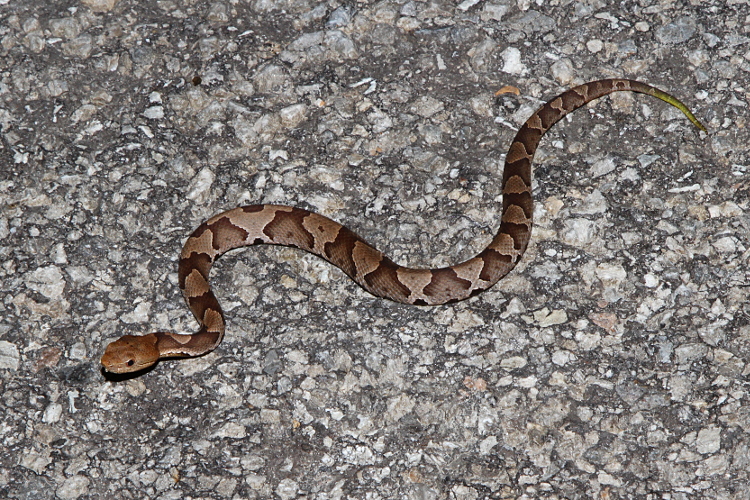
A young Copperhead (Agkistrodon contortrix) found on a road at night.
In mid July, Roxanne and I went to North Carolina for a couple of days.
Did a little fishing, relaxing, and looking for reptiles. It was kind of
like old times, fishing was something we did a lot of together when lived
here...
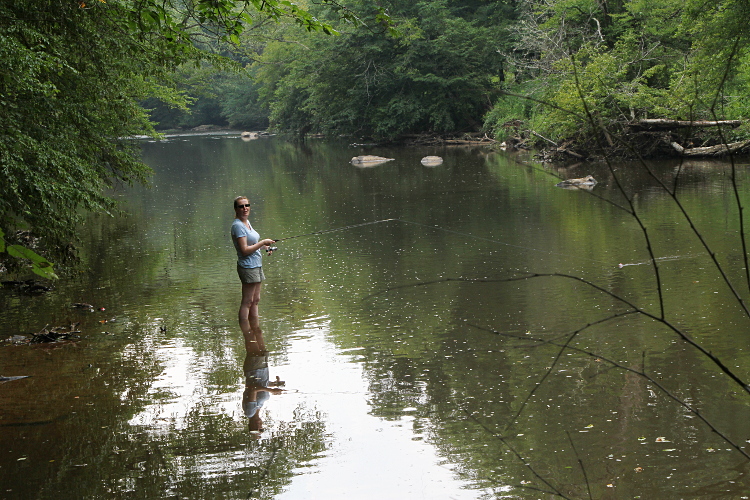
Roxanne.
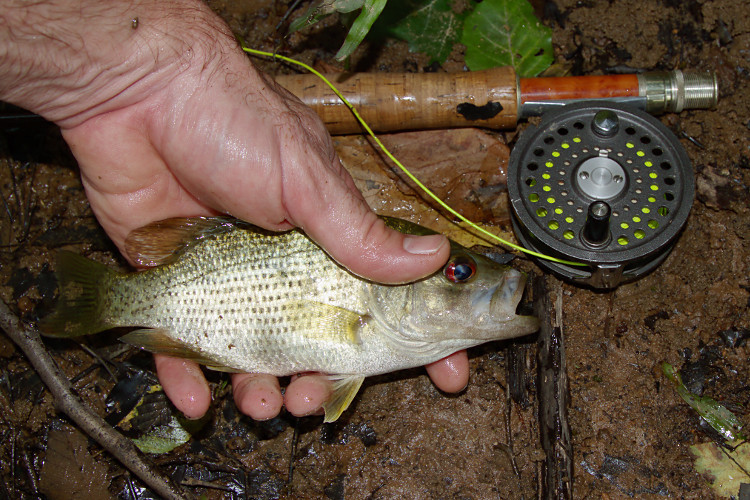
Part of the fun of fishing is identifying your catch. This is a special
flavor of Rock bass, the Roanoke bass (Ambloplites cavifrons),
that only lives in some of the Atlantic-draining streams of NC and VA.
Unfortunately, we didn't manage to catch any of the larger ones...
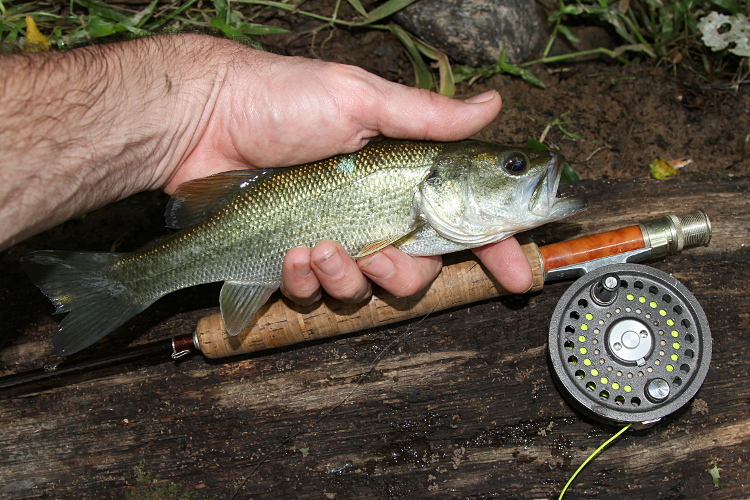
A not-very-large Largemouth bass ((Micropterus salmoides).
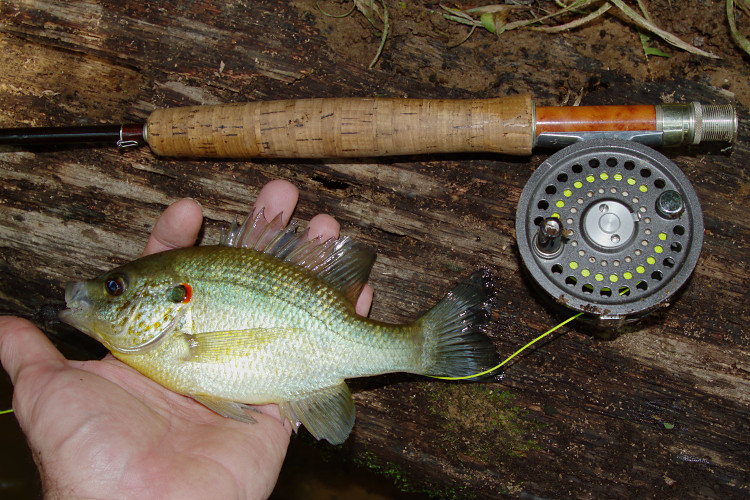
Redear Sunfish (Lepomis microlophus).
The Redbreast Sunfish (Lepomis auritus) are the most abundant
centrarchid in this stream, but for some reason I neglected to photograph
any of them.
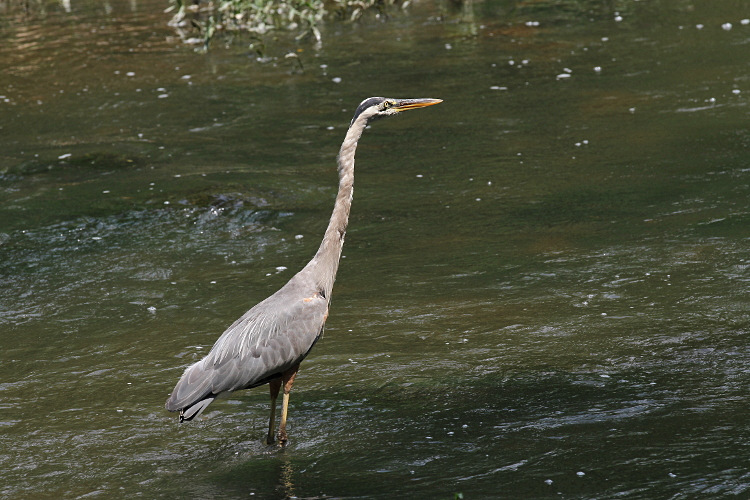
We had competition from a superior fisher, a Great Blue Heron.
We often see reptiles when fishing streams like this:
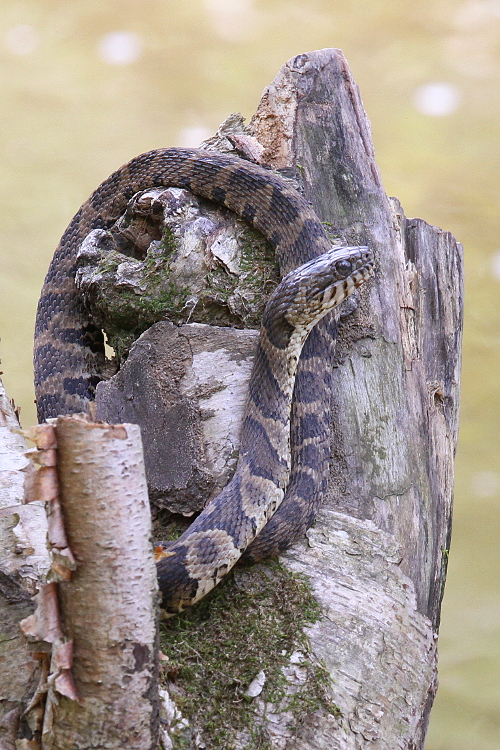
A Northern water snake (Nerodia sipedon), as found.
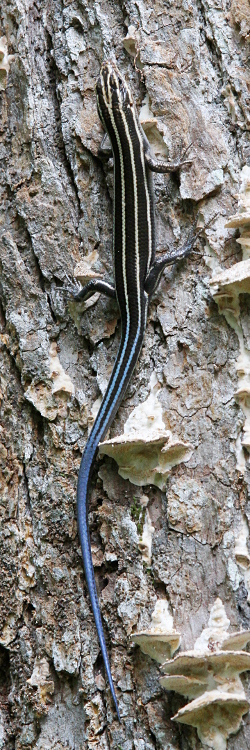
A Five-Lined Skink (Eumeces fasciatus), on a tree.
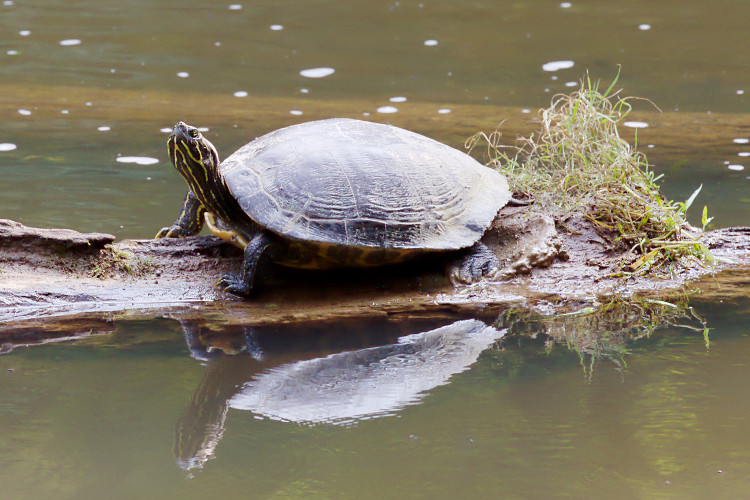
A basking River Cooter (Pseudemys concinna).
We also tried some evening/night road cruising for snakes. It's nice
to see some species that do not occur in Ohio.
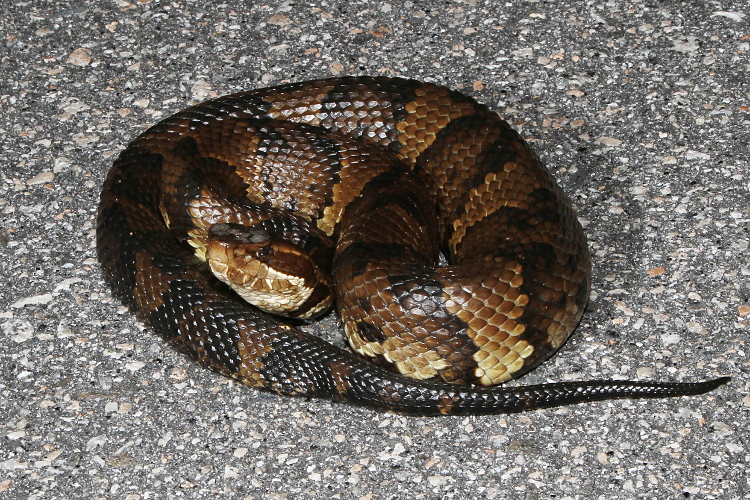
Cottonmouth (Agkistrodon piscivorus).
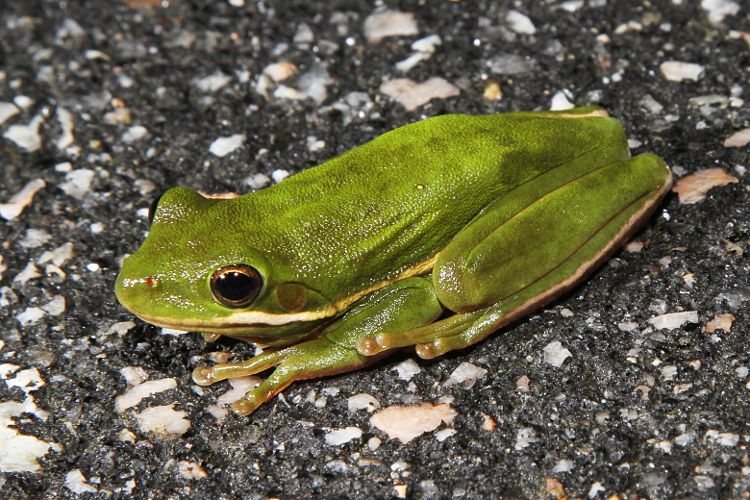
Green Treefrog (Hyla cinerea).
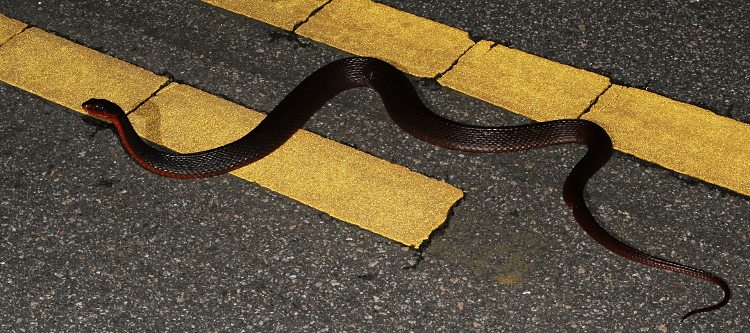
Red-bellied Watersnake (Nerodia erythrogaster erythrogaster).
I was particularly pleased to see this species. This shows it almost as found.
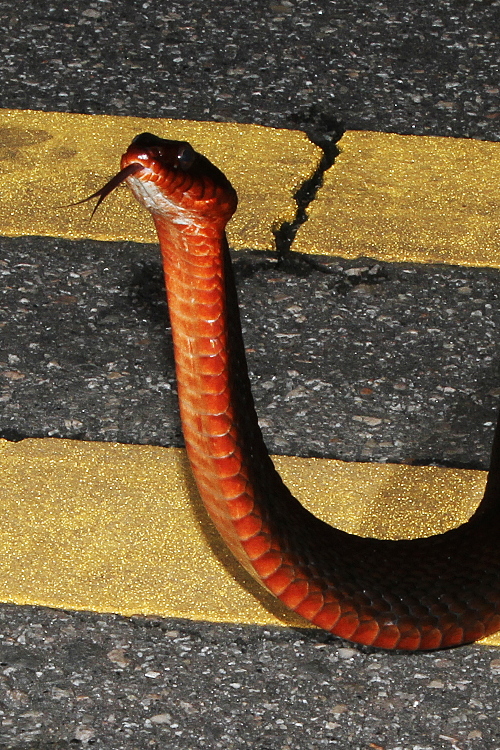
It lifted its head, showing its red belly and white chin.
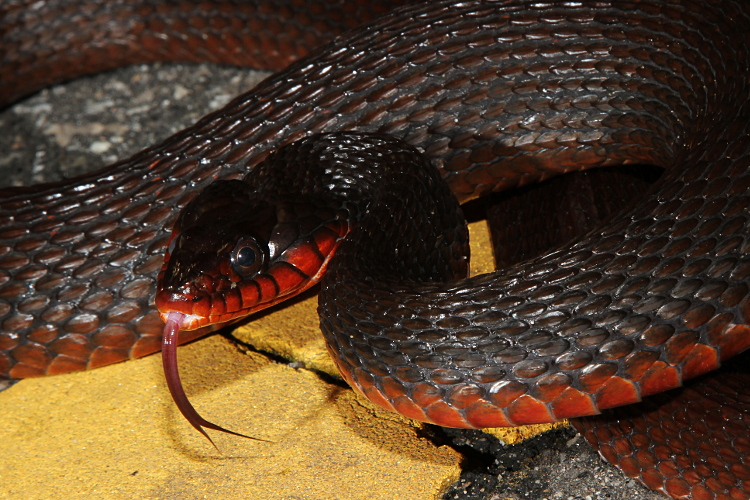
It soon assumed a defensive posture.
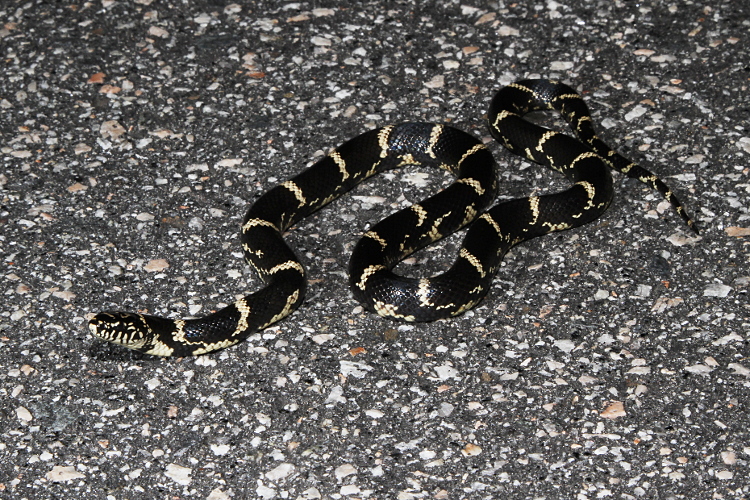
An young Eastern Kingsnake (Lampropeltis getula getula).

Another look.
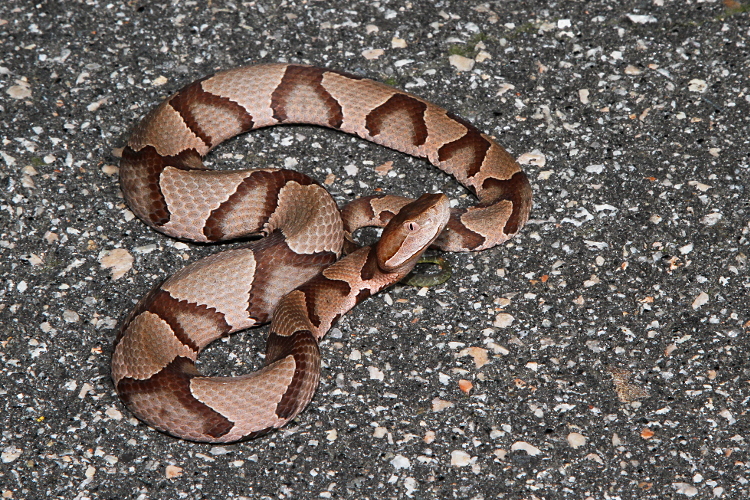
A Copperhead (Agkistrodon contortrix).
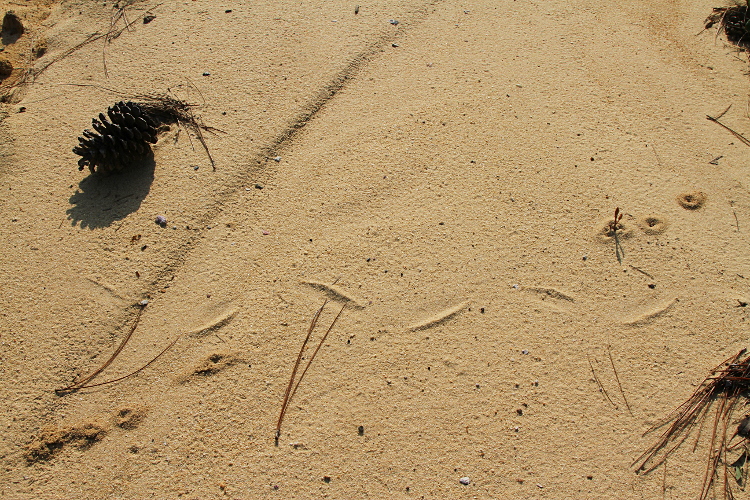
A snake track in the sand shows up well in the early morning sun.
Back home in Ohio now.

A Black Racer (Coluber constrictor), in pre-shed condition.
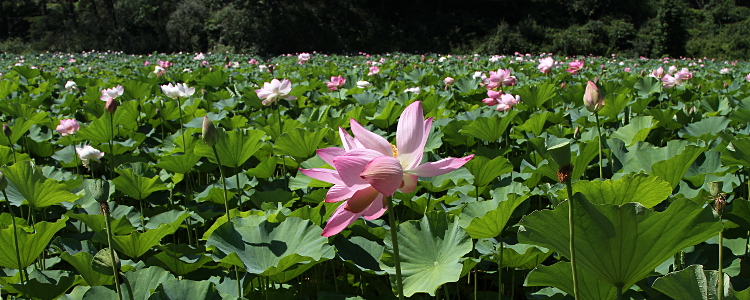
A lake covered with blooming lotuses (= lotsa lotus?).
Very beautiful/impressive.
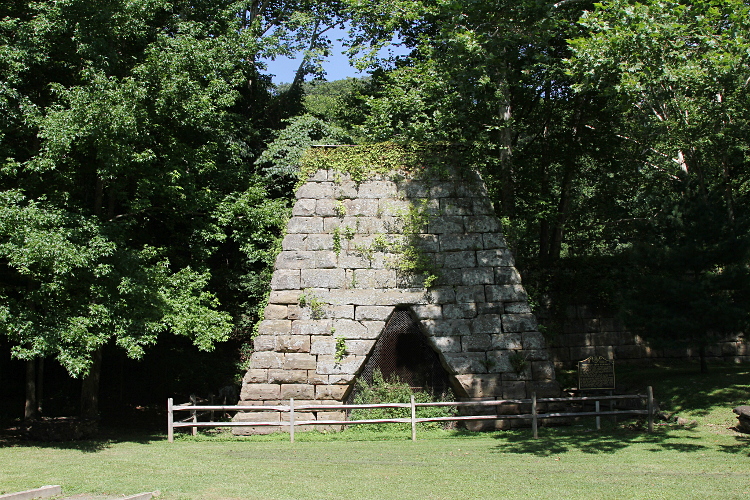
The Vesuvius Iron Furnace. It stopped production in 1906.
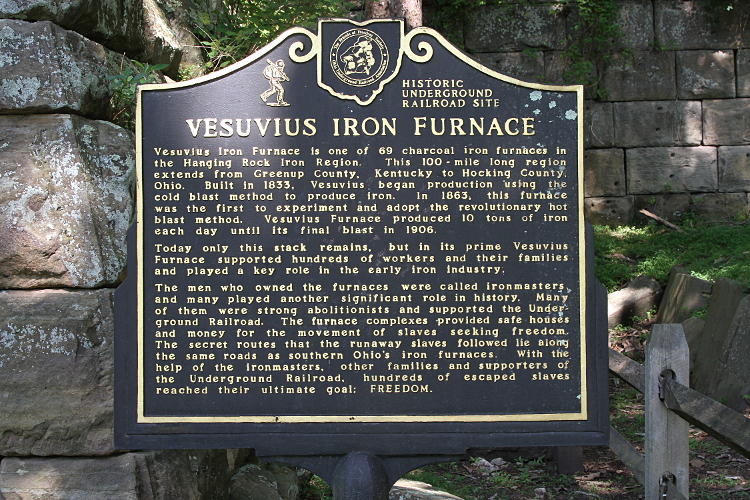
This really makes you think.

A "high yellow" Box Turtle (Terrapene carolina), as found on a gravel
road. If I could have given it a bath, I think it would have been stunning.
Some interesting shell damage as well.
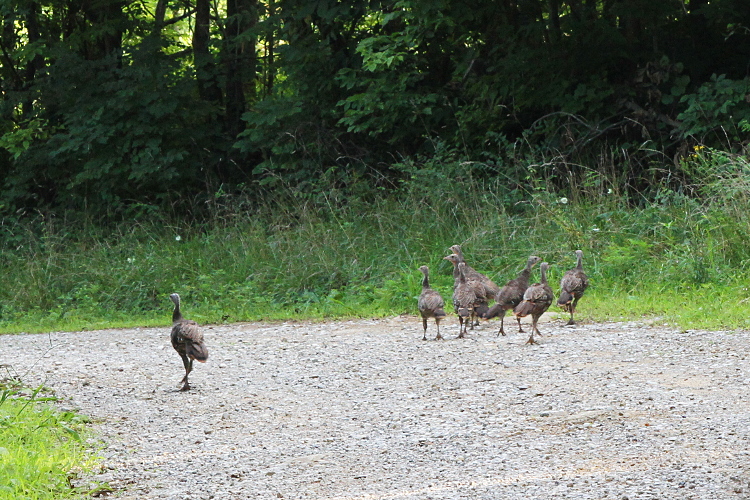
Some young wild turkeys I saw in late July. The adult in the group (mom?)
ran off the road, and the rest didn't really seem to know what to do as
I drove up...
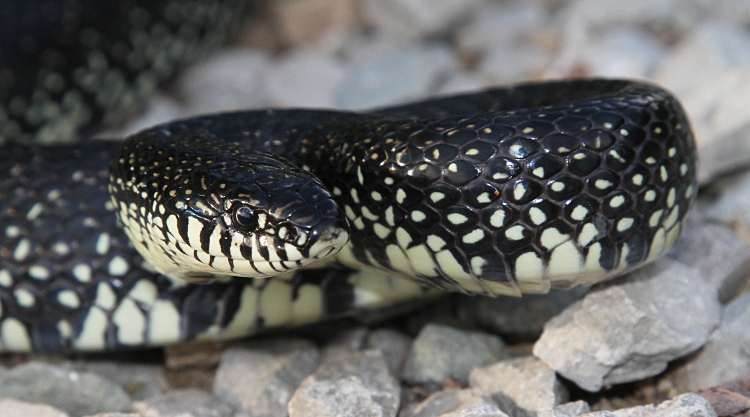
A large Black Kingsnake (Lampropeltis getula nigra).
This was found at the "Psychedelic Furs" site described above.
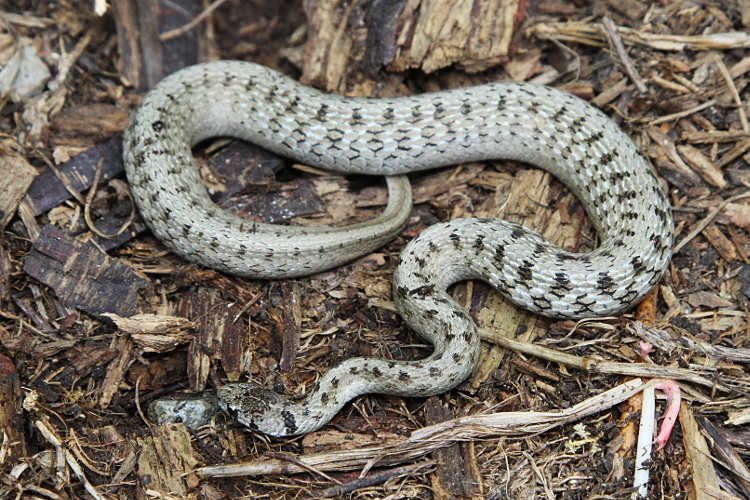
This Dekay's Snake (Storeria dekayi) stood out a little bit to me
because it is tending toward being anerythristic -- lacking in
red/orange/yellow pigment.

A Worm Snakes (Carphophis amoenus), as found under cover.
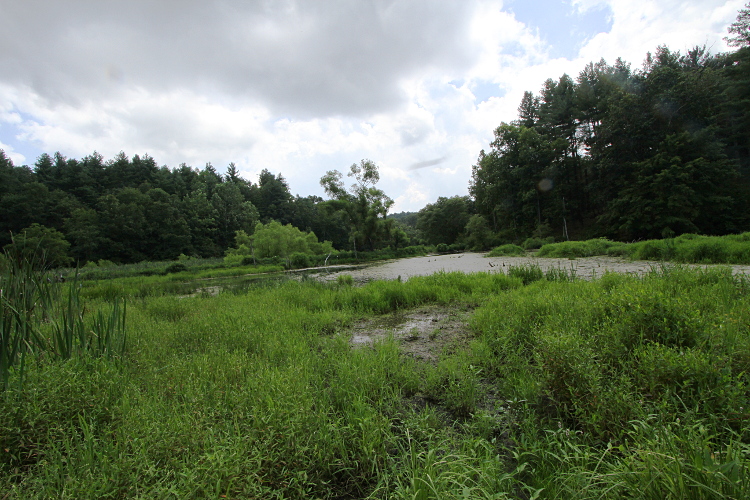
Some nice open wetland habitat. This type of habitat is rather limited
in southeast Ohio.
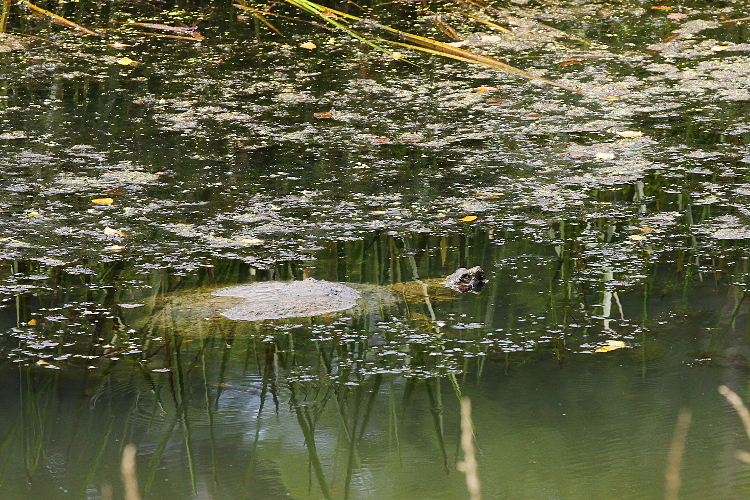
A Snapping Turtle (Chelydra serpentina), observed in the above
wetland.
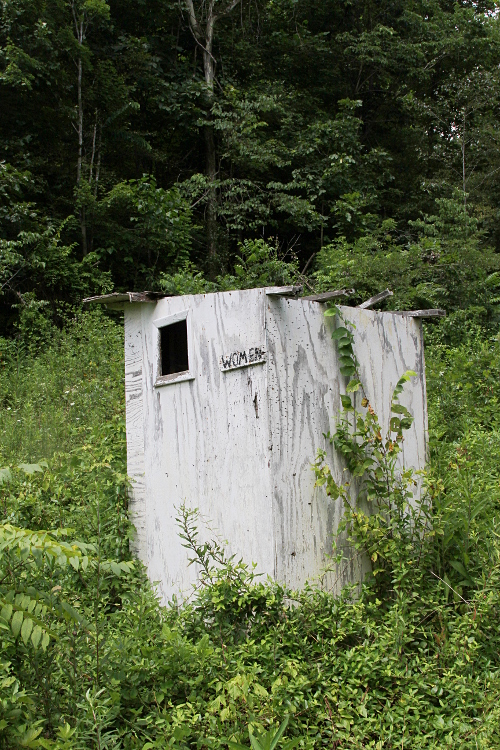
Lady's room. Men's was nowhere to be found... For some reason outhouses
are often the only thing still standing at abandoned homesteads.
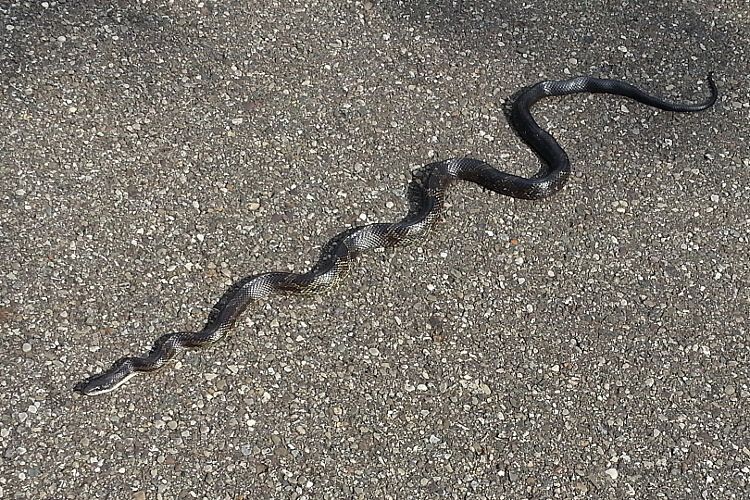
A Black Ratsnake (Elaphe obsoleta), as found on a road near our house.
This was with my brother Chris and his boys. This was also the first
live Black Ratsnake that I saw in 2013 -- kind of unusual that it took
until August 1 to see one.
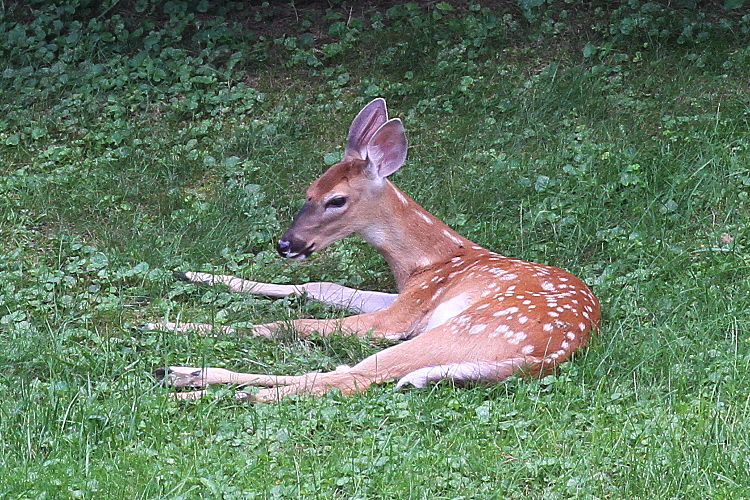
Bambi, relaxing in our yard in early August.
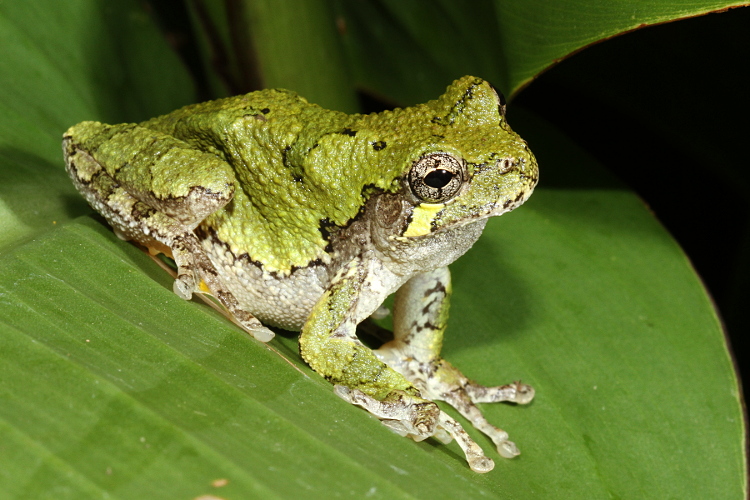
A Grey Treefrog that Roxanne found in our yard one day.
In late August I spent a day in the field in Michigan, with my
friend Jason. A couple of the critters we saw are shown below.

A Northern water snake (Nerodia sipedon), in the shallows of a
small lake.
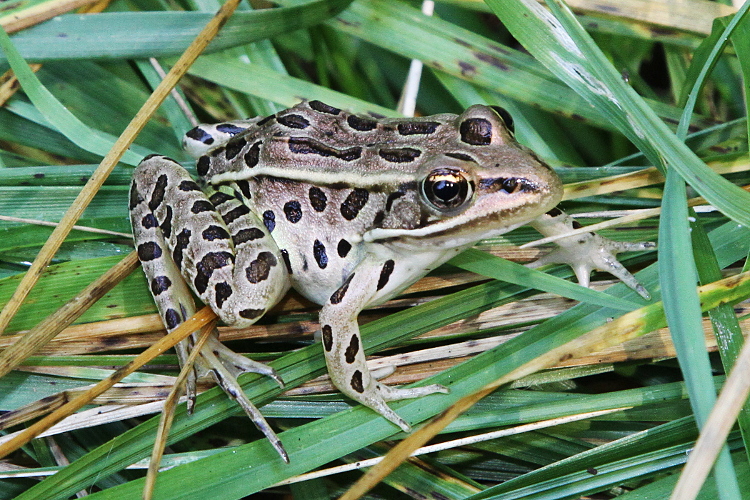
Northern Leopard Frog (Rana pipiens).
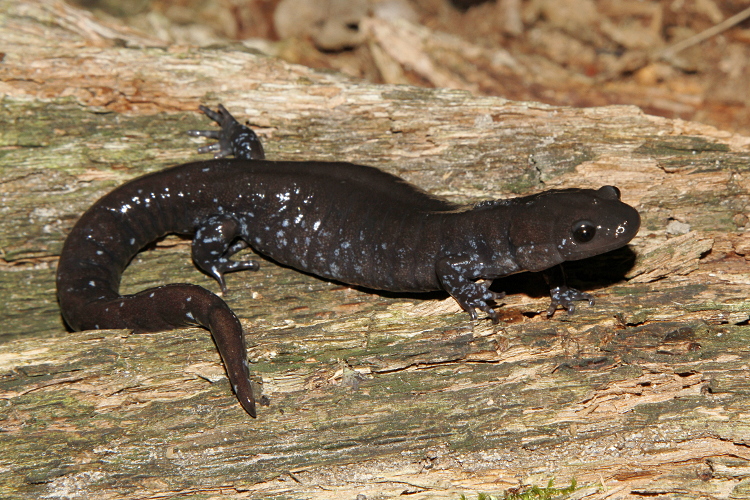
An Ambystoma that we found. I'm not sure if it is laterale
or a hybrid.
Back in Ohio now.
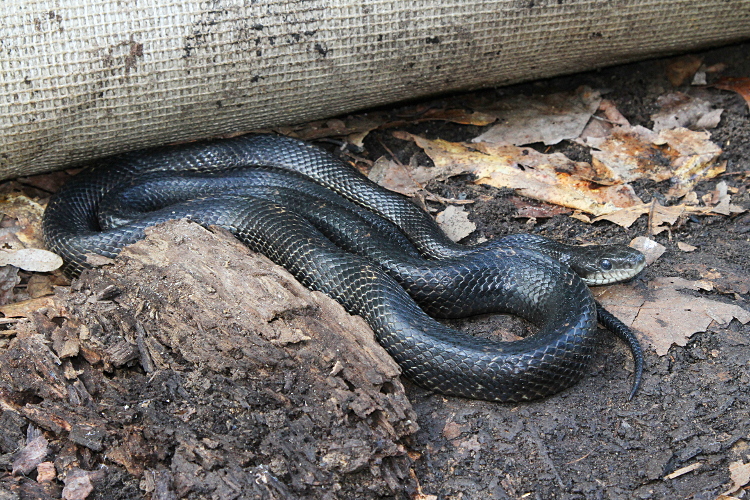
A Black Ratsnake (Elaphe obsoleta), as found under carpet.
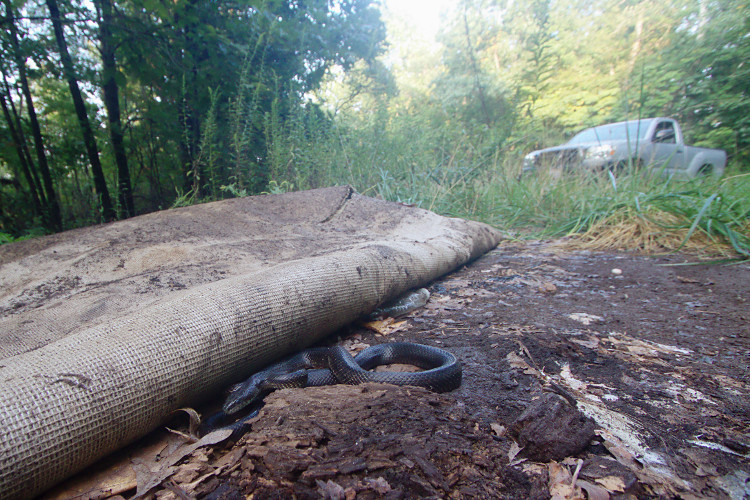
Another look. The snake has now moved a little bit.
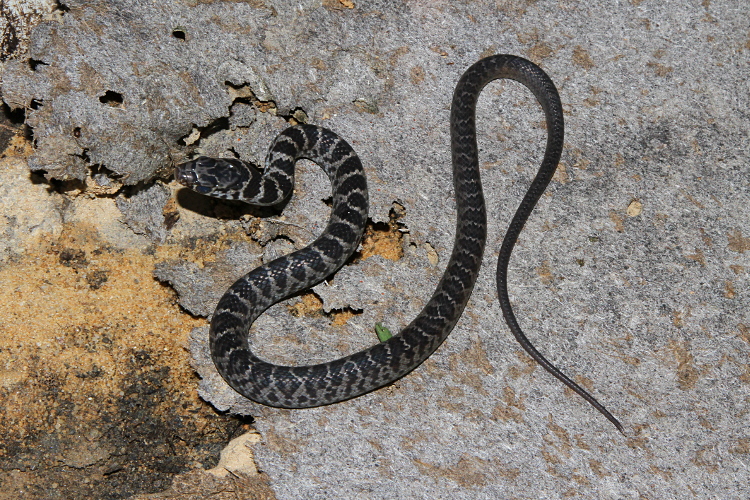
A hatchling Black Racer from late August.
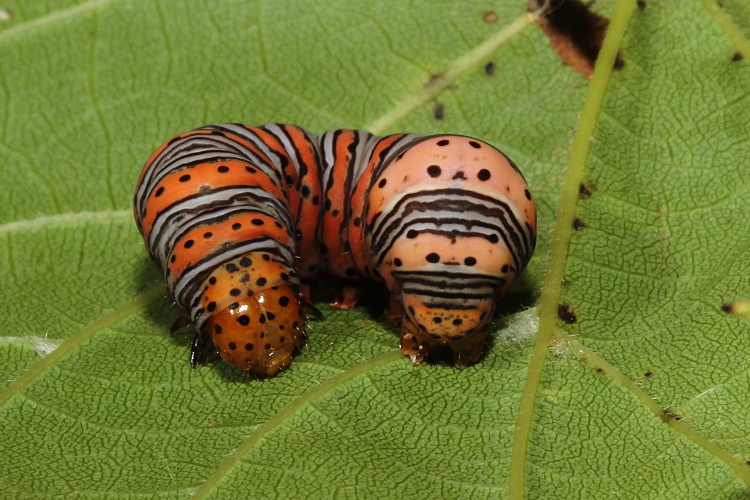
A Wood Nymph (Eudryas) caterpillar found in some grape vines
in our backyard. Perhaps the Beautiful Wood Nymph (E. grata).
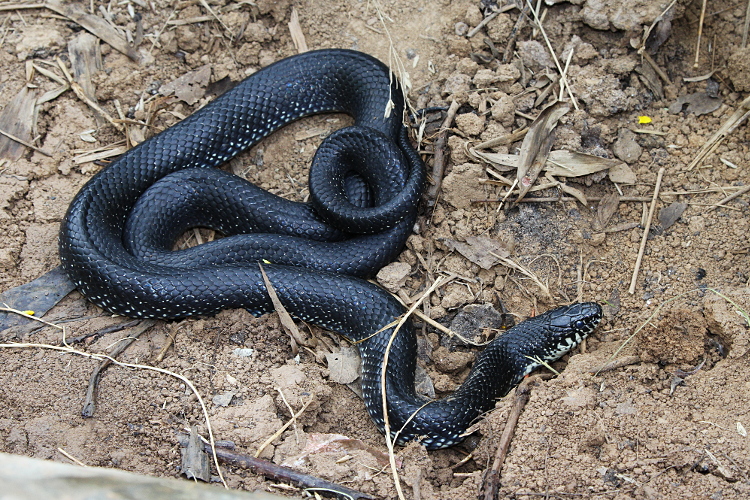
A Black Kingsnake (Lampropeltis getula nigra), almost as found
under a sheet of tin -- it curled its tail a little bit.
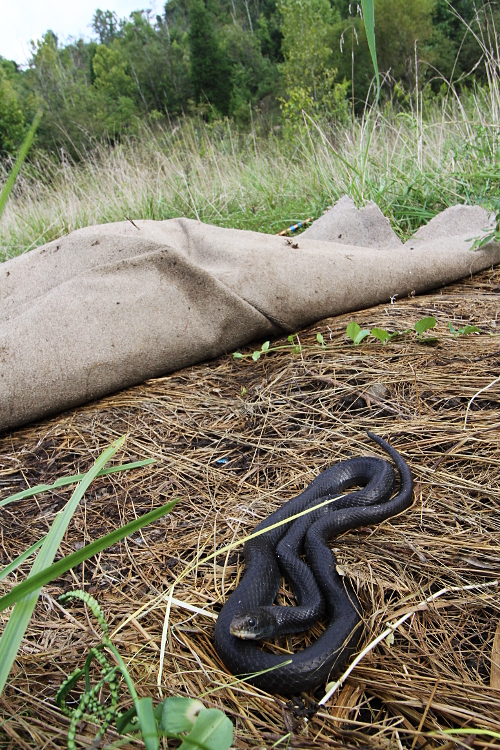
A Black Racer (Coluber constrictor), as found under some carpet.
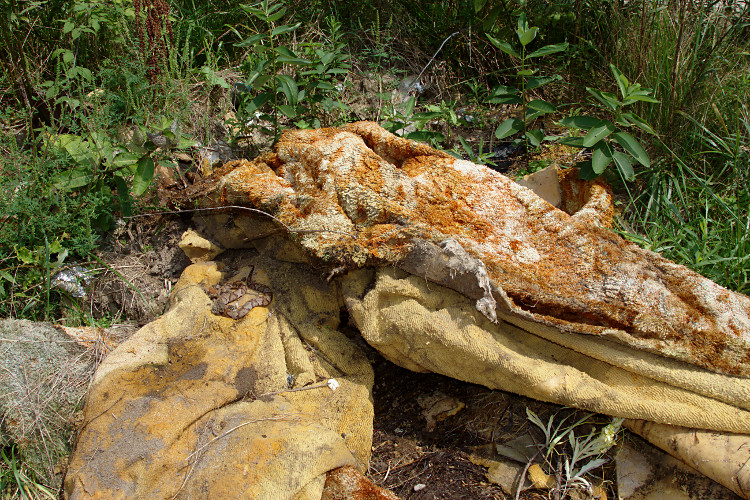
Always keep your eyes out for well-camouflaged surprises when searching
through tacky orange and beige 1970s era carpet...
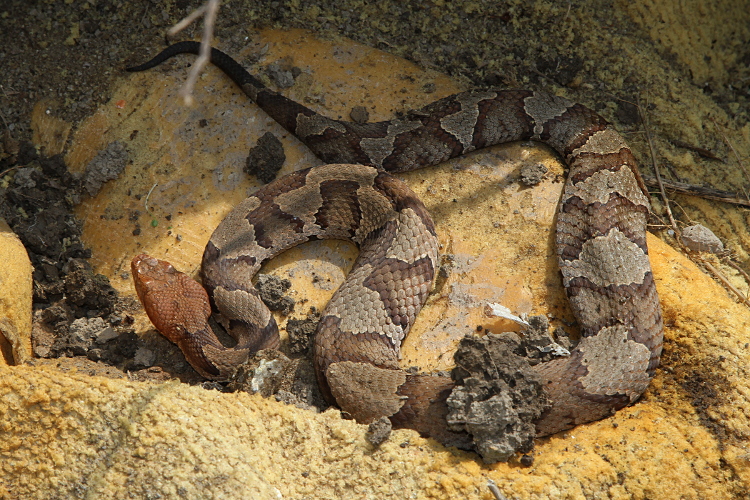
A closer look at the Copperhead (Agkistrodon contortrix). Both
photos show the snake as first uncovered, but not otherwise disturbed.
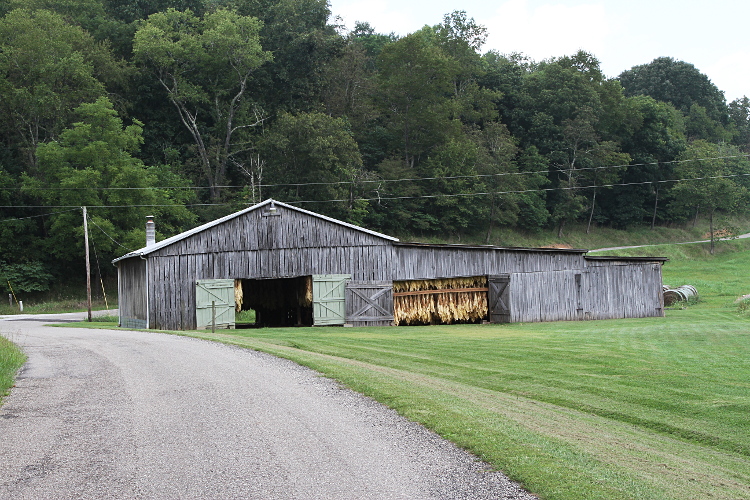
Early September is the season for curing tobacco in the barn.
In Gallia Co, Ohio.
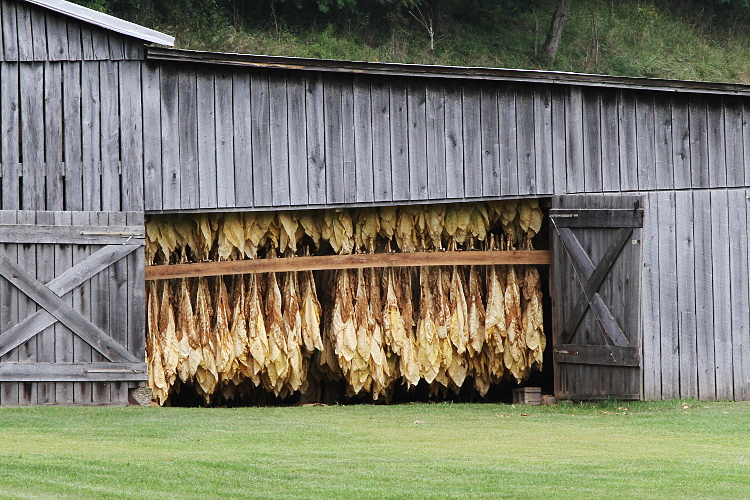
A closer look at the tobacco.
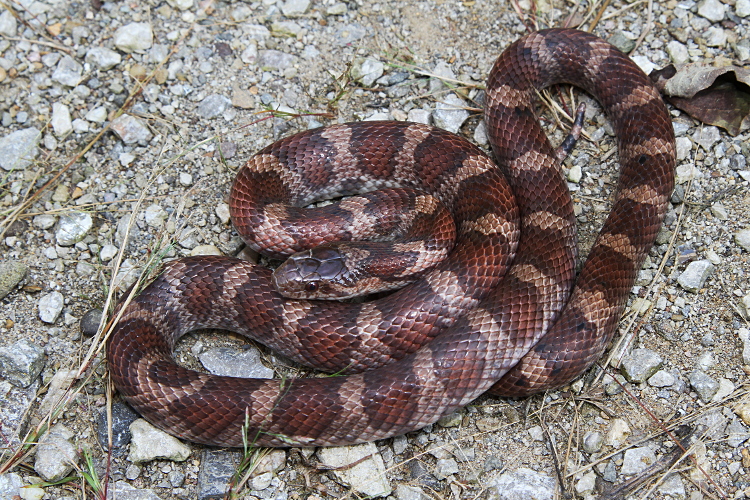
An attractive Milksnake (Lampropeltis triangulum) that I found
under a random rock along a roadside. I wish I would have taken the time
to get a better photo of it.
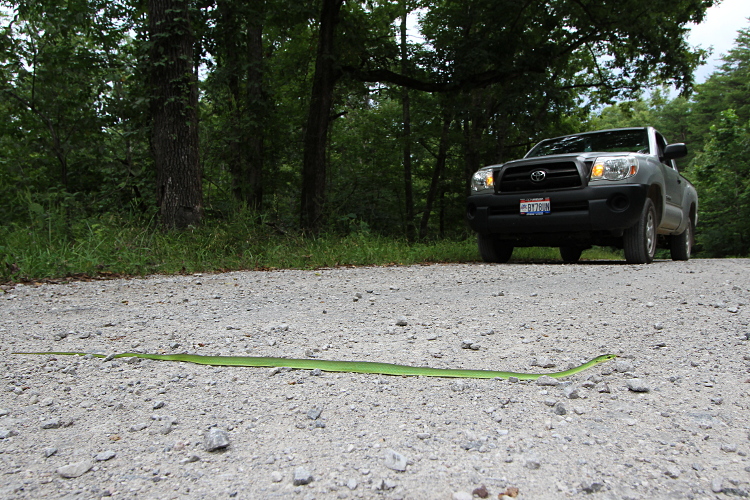
A Rough Green Snake (Opheodrys aestivus),
as spotted on a quiet dirt road.
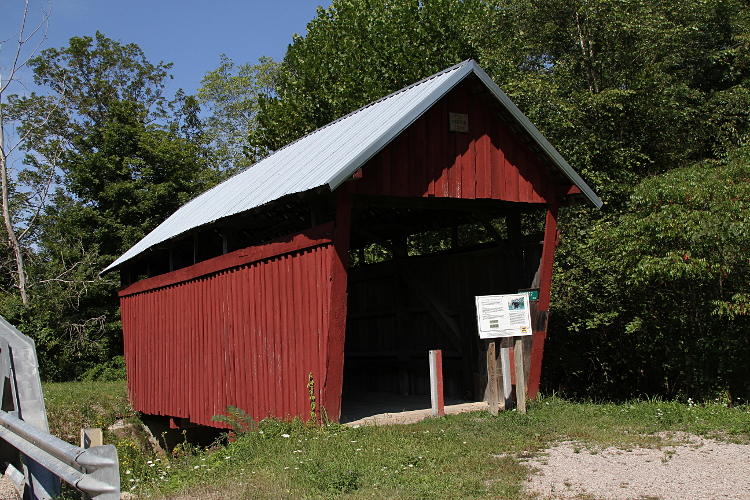
The Cox Bridge in Vinton County, Ohio. It's a pretty short one, built in 1884.
In 1992 it was moved to the side to make room for a modern (less interesting)
bridge. The guard rail in the lower left is part of the new bridge.
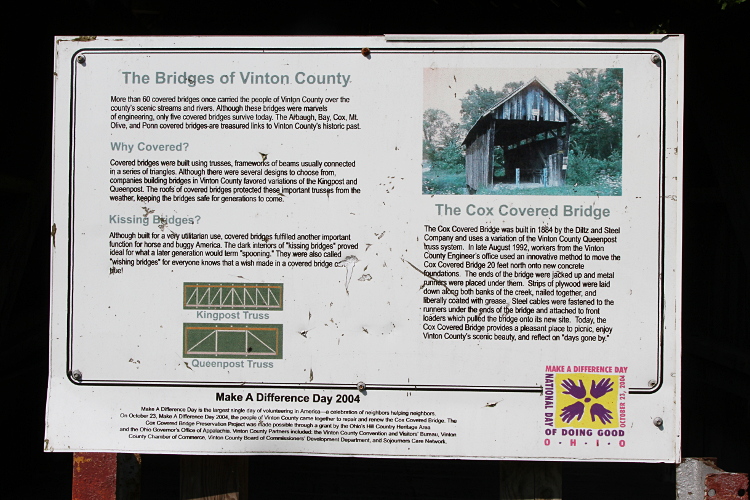
The sign in front of the Cox Bridge. Hard to believe there were over 60 of
these in just this county.
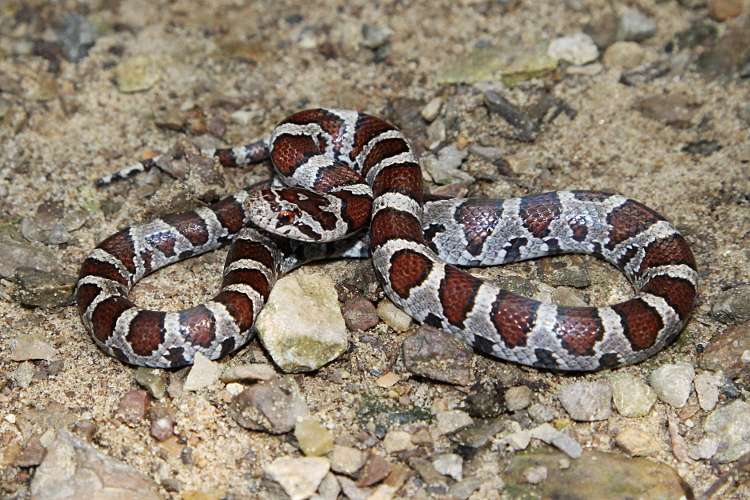
A hatchling Milksnake (Lampropeltis triangulum) from early September.
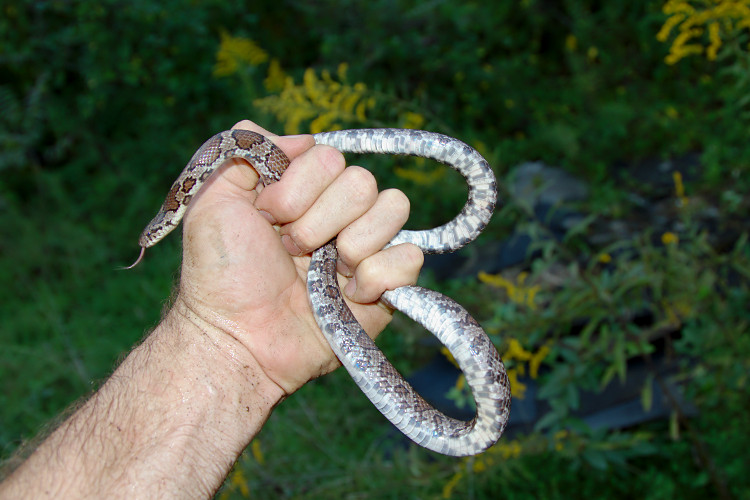
Another Milksnake, found in the shingle pile in the background.
The next three Copperheads (Agkistrodon contortrix) were found by
roadcruising one evening in early September.
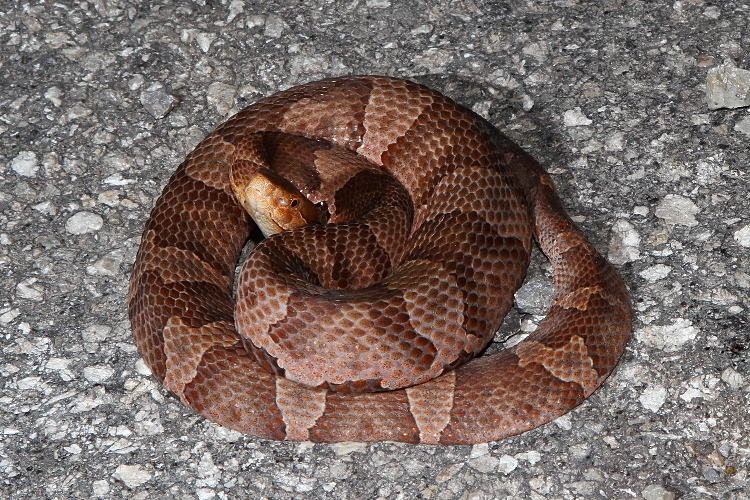
A pinkish one.
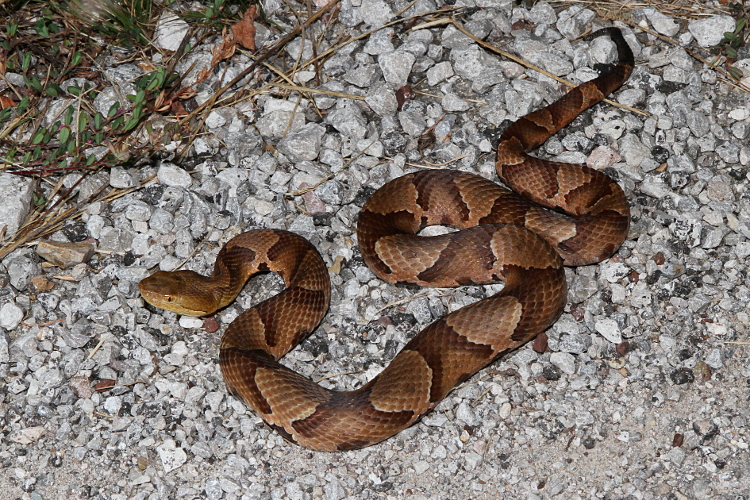
This one was very large, probably a male.
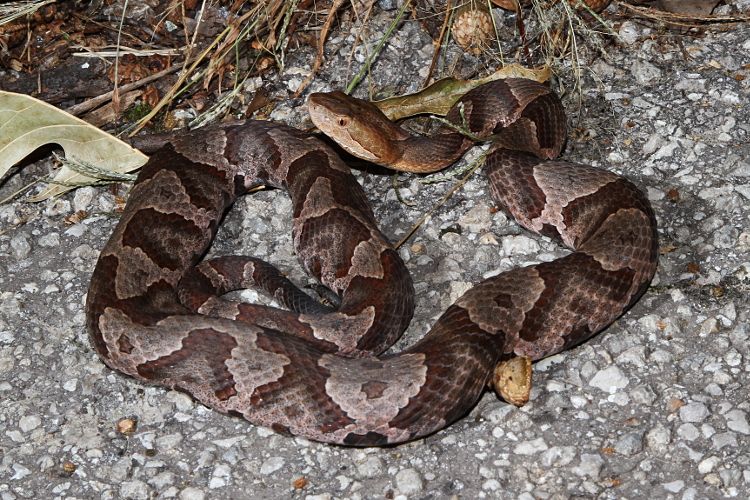
A "grey phase" example.
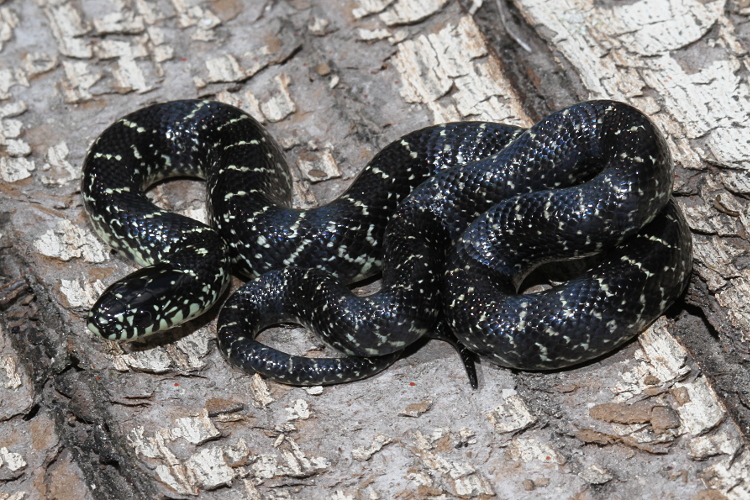
A hatchling Black Kingsnake (Lampropeltis getula nigra) that I found
in mid September. It was 9-3/4" long, pretty much a #2 pencil.
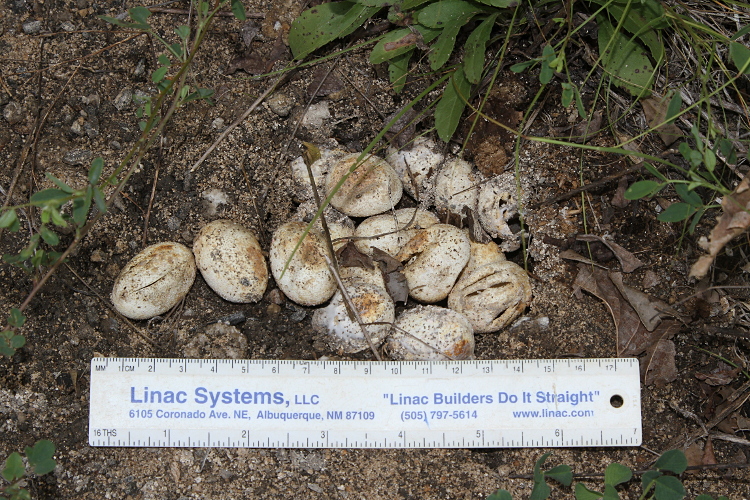
Some successfully hatched Black Racer eggs (I believe) that I found
under a board on September 14.
Every egg had a slit in the shell and was empty...
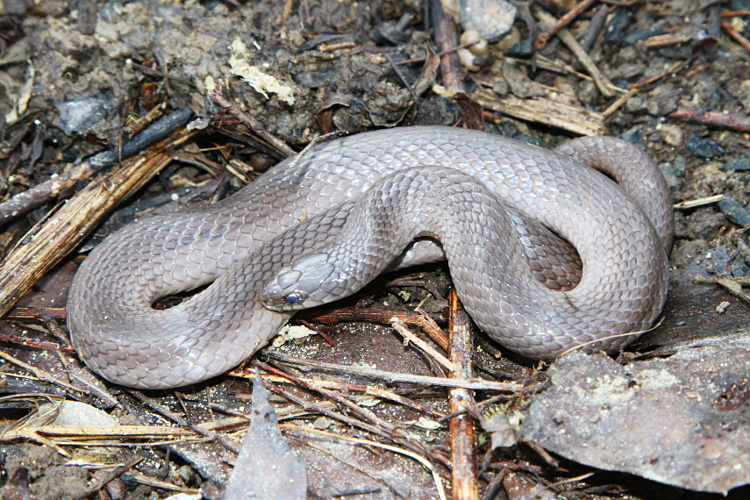
A Smooth Earth Snake (Virginia valeriae), as found under cover.
I assume that its grey-ish coloration is due to it being
in pre-shed condition.
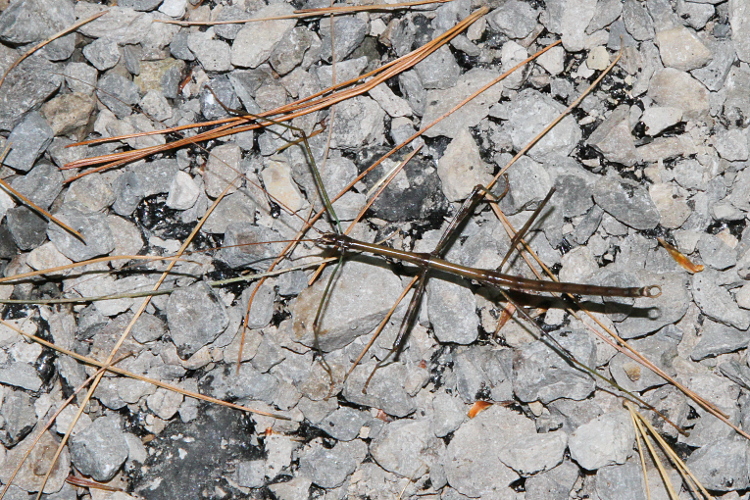
A Walking Stick insect that I found. I do not see these very often.
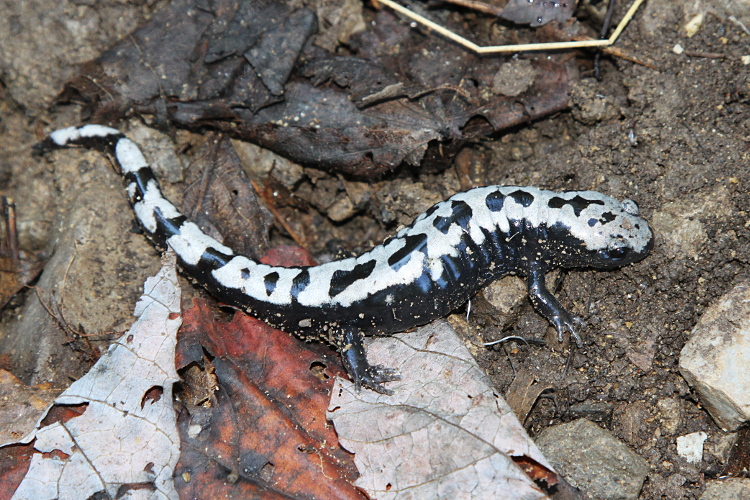
A Marbled Salamander (Ambystoma opacum).
These start to show up at the end of summer.

Ohio has rather limited Civil War history. I did find this interesting.
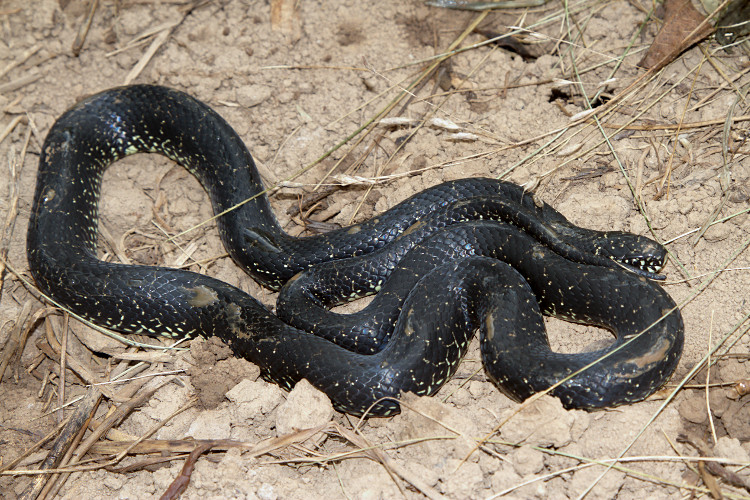
A Black Kingsnake (Lampropeltis getula nigra), as found under a
sheet of tin.
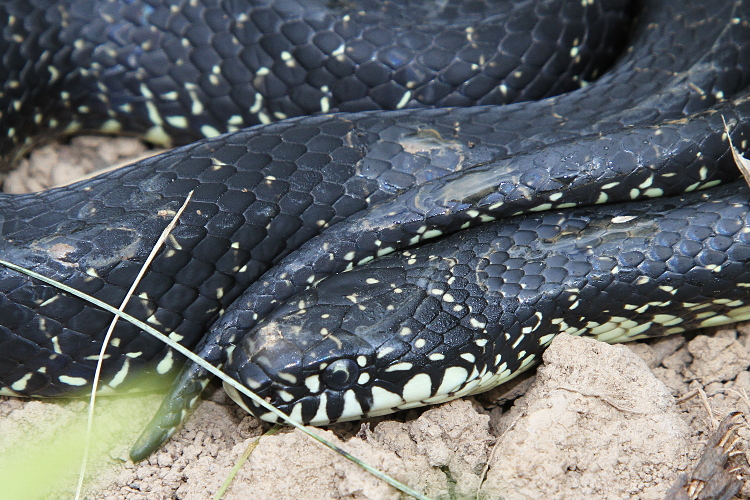
A closer look. This was early in the morning. You can see the fine droplets
of condensation on the snake. Where the snake was touching the tin, you can
see larger muddy areas of water.
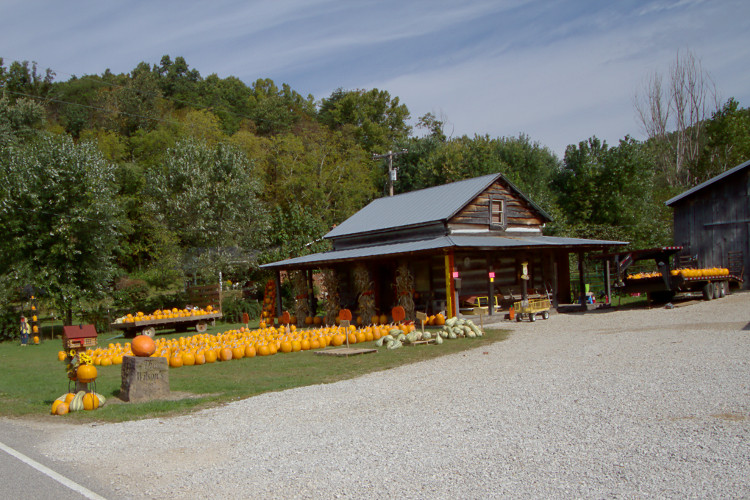
This little farm house was really into the Halloween spirit.
This was near Wilgus (Lawrence Co) Ohio, about as "middle of nowhere" as you
can get in this part of the country.
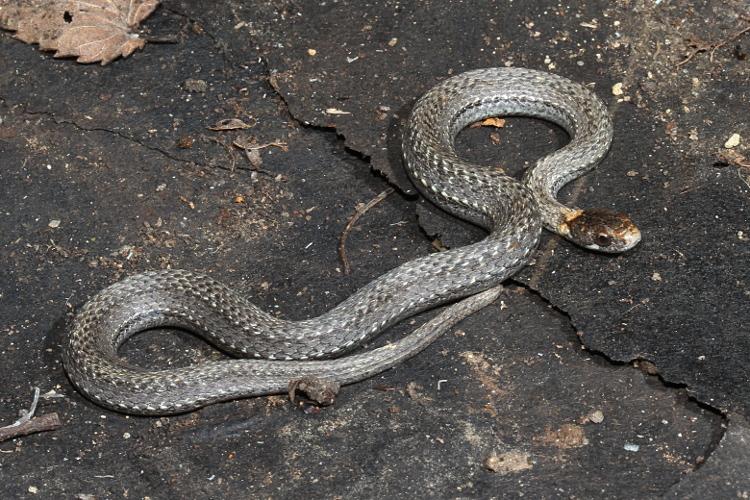
A little Red-bellied Snake (Storeria occipitomaculata) that I found
this fall. I had not seen one in southeast Ohio since 2009. It's shown as
found, after I lifted a tarp covering a pile of shingles. I also found
another when I searched through the rest of the tarp.
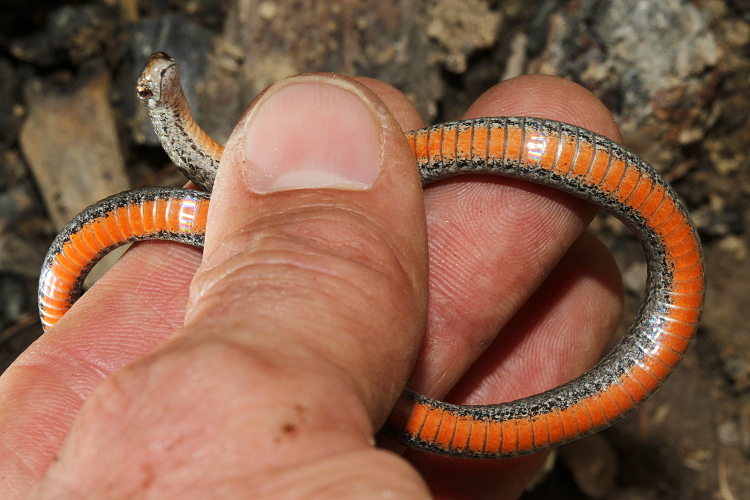
Just in case you were wondering why it is called a Red-bellied Snake...
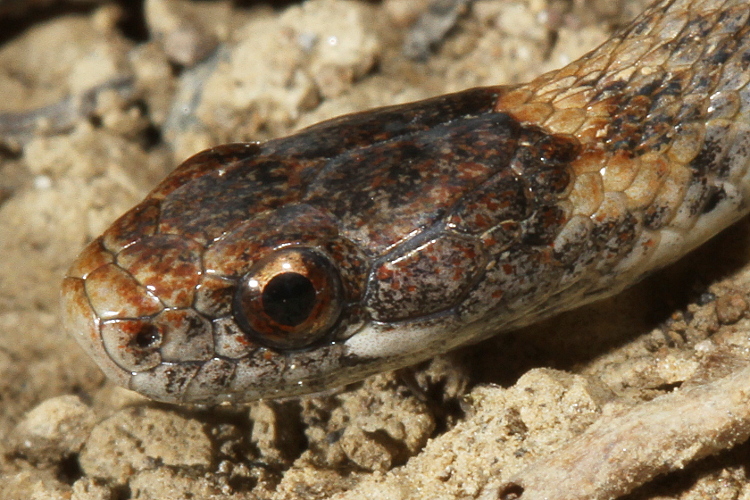
A closer look at its head.
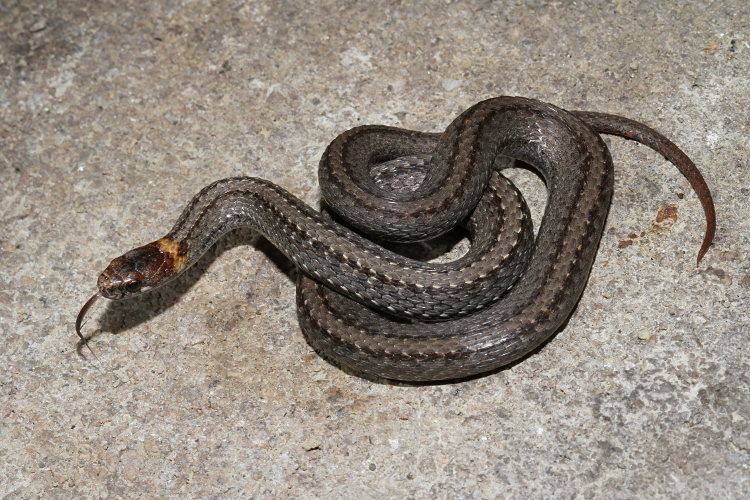
The other one.
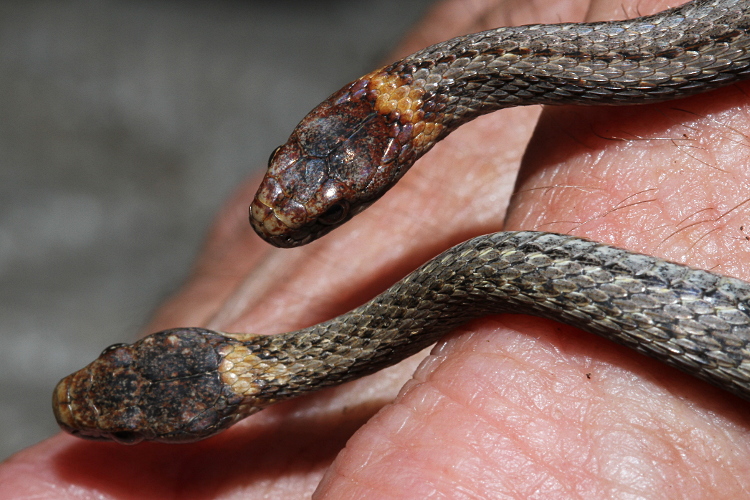
A side-by-side comparison of the two.
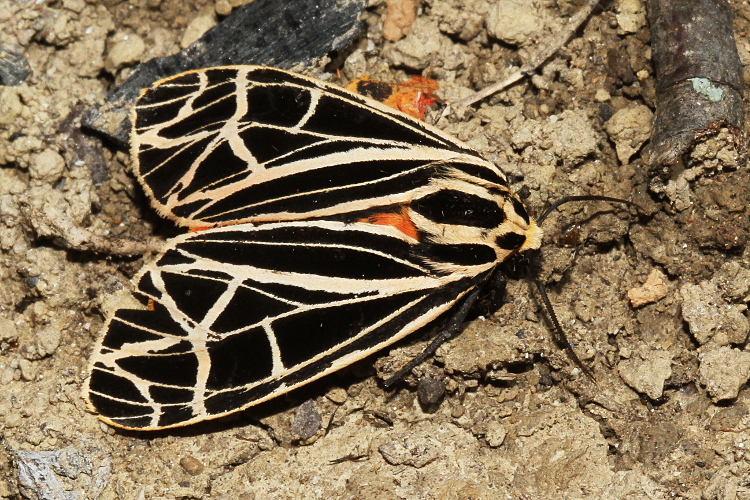
Banded Tiger Moth (Apantesis vittata) that I spotted on the ground
while photographing the Red-bellied Snakes. It never budged.
Apparently the larvae of this species are the "Wooly Bear"
caterpillars which are commonly seen around here.
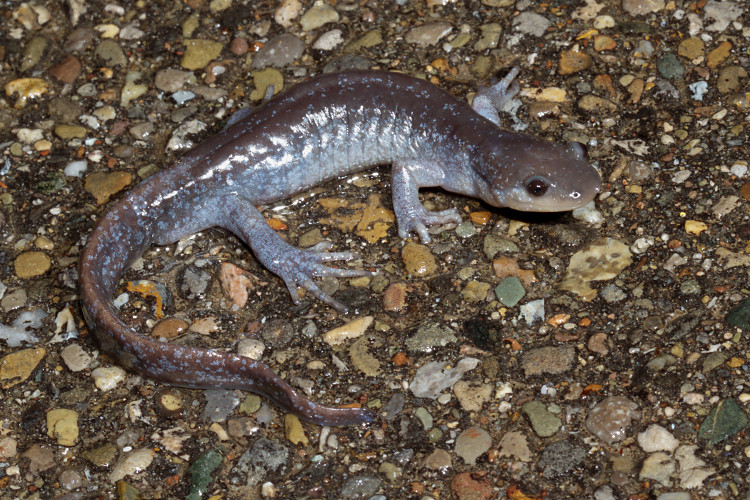
On the evening of December 21, we had some warm (65F) rains.
I saw this Jefferson Salamander (Ambystoma jeffersonianum)
on the road just down the hill from our house.
So that was 2013. One odd thing is that I saw zero live garter snakes
(Thamnophis) this year in Ohio. I did see two DORs.
What will 2014 bring?




































































































































































































































